total factor productivity
description: a measure of the efficiency with which inputs are transformed into outputs in an economy, often seen as an indicator of technological progress.
86 results

The Innovation Illusion: How So Little Is Created by So Many Working So Hard
by
Fredrik Erixon
and
Bjorn Weigel
Published 3 Oct 2016
(i) Taleb, Nassim Nicholas, “Soviet–Harvard illusion” (The Black Swan) (i) tax havens (i) taxes and debt vs. equity financing (i), (ii) and labor (i) and policy uncertainty (i) in Sweden (i) taxi services and driverless cars debate (i) and regulation (i) tech entrepreneurs (i) tech incubators (i) technofeudal society (i) technological platforms, and regulation (i) technological singularity (i) technological unemployment (i), (ii) technology and capitalism (i) dystopian visions of (i) and economy (i), (ii), (iii) and employment (i) and French dirigisme (i) and innovation success (i), (ii), (iii), (iv) and “scientific civilization” thinking (i) technology angst vs. technology frustration (i) technology blitz theory (i), (ii), (iii), (iv) and vertical specialization (i) see also artificial intelligence; automation; diffusion; innovation; New Machine Age thesis; robotics/robots technostructure (i), (ii), (iii), (iv) telecommunications and deregulation (i) and globalization (i) and investment (i) see also Ericsson telephone (i), (ii) see also mobile phones/technology; smartphones Teles, Steven (i) Teller, Astro (i) 1066 and All That (Sellar and Yeatman) (i) Tesla (i) Texas, Special/Permanent School Fund (i) TFP (total factor productivity) growth (i), (ii), (iii) Thiel, Peter (i), (ii) Thomson, George (i) Tiberius (i) Time magazine, “The Committee to Save the World” (i) TNT, attempted acquisition of by UPS (i) total factor productivity (TFP) growth (i), (ii), (iii) Toynbee, Arnold (i), (ii) trade interfirm vs. intrafirm trade (i) see also global trade; mercantilism; protectionism transaction costs (i), (ii), (iii), (iv), (v), (vi) transmission costs (i), (ii), (iii) transparency Linaburg Maduell Transparency Index (LMTI) (i) and regulation (i), (ii) and sovereign wealth funds (i), (ii) Transparency International (i) “triple helix” models (i) “triple revolution” (i) trucking industry (US), shortages of drivers (i) Trump, Donald (i), (ii) Tufts Center for the Study of Drug Development (i), (ii) Tullock, Gordon (i) Twitter, and Nobel Peace Prize (i) Uber (i), (ii), (iii) unbundling of production first (i) second (i), (ii), (iii), (iv) uncertainty and compliance officers (i), (ii) and entrepreneurship (i) and financial regulation (i) and globalist worldview (i), (ii) market uncertainty (i), (ii) policy uncertainty (i), (ii) and probabilistic approach (i), (ii) and risk (i), (ii) and strategy (i) see also predictability; regulatory complexity/uncertainty; volatility unemployment and decoupling (productivity/wages) thesis (i) and Great Recession (i) and New Machine Age hype (i) and productivity (i) technological unemployment (i), (ii) see also labor unicorns (firms) (i) United Kingdom (UK) “boom and bust” and Gordon Brown (i) business investment: declining trend (i); as a proportion of GDP (i) corporate net lending (i), (ii) corporate profit margins (1948–2014) (i), (ii) dependence on larger enterprises (i) EU Leave campaign and older generation (i) exports to China (i) financialization of real economy (i) and globalization (i), (ii), (iii) income inequality and generations (i) “Independent Review of UK Economic Statistics” (Charles Bean) (i) London Stock Exchange and sovereign wealth funds (i) managerialism (i) Middle Ages economy (i) pension deficits (i) pensioners vs. working-age households incomes (i) productivity and incomes (i) productivity puzzle (i) R&D spending (i) retirement savings (i) United States (US) academia and speech codes (i) American Financial Stability Oversight Council (i) banks: and compliance officers (i); and financial regulations (i) Blue Ribbon Commission (i) Burning Man festival (Nevada) (i) capital expenditure (capex) (i)n39 car industry: driverless cars (i); and environment-related regulations (i); and lean production (i) Code of Federal Regulations (i) Consumer Protection Act (i) corporate cash hoarding (i) corporate net lending (i), (ii) corporate profit margins (1948–2014) (i), (ii) corporate renewal levels (i) corporate retained earnings figures (i) corporations’ decline (1980s) (i) debt vs. equity (i) diffusion of innovations (i) dockers and containerization (i) Dodd–Frank Act (i), (ii), (iii), (iv) Energy Policy and Conservation Act (EPCA) (i) Federal Register (i) Federal Reserve (i) financial governance (1990s) (i) financialization of real economy (i) firm entry-and-exit rates (i), (ii), (iii) Food and Drug Administration (FDA) (i), (ii), (iii) GDP figures (i), (ii) and globalization (i), (ii), (iii) high-tech sector (i) Inc 500 ranking (i) incomes: and benefits (i); inequality and generations (i); inequality and productivity (i); and productivity (i), (ii), (iii), (iv), (v) information and communications technology: hardware investment as share of GDP (i), (ii); intensity and productivity (i); sector (i), (ii) investment: business investment declining trend (i), (ii); corporate borrowing and low investment levels (i); corporate investment and shareholders (i), (ii); institutional investors (i); private investment (i) labor: ATMs and teller jobs (i); farming occupation statistics (i); job creation and destruction trends (i), (ii), (iii); labor market flexibility, low rates of (i); occupational licenses (i), (ii); staff turnover rates (i); truck drivers, shortages of (i) market concentration (1997–2012) (i), (ii) Memphis International Airport and FedEx hub (i) mergers and acquisitions (i) New York Stock Exchange (i), (ii), (iii), (iv), (v) North American Free Trade Agreement (i) Organization Man (i) pessimism and capitalist decline (i) policy uncertainty (i), (ii) productivity: downward trend (i), (ii), (iii); via foreign operations (i)n46; and ICT intensity (i); and income inequality (i); and incomes (i), (ii), (iii), (iv), (v); total factor productivity (TFP) growth (i), (ii)n11; and un/employment (i) profit margins (i) public debt (i) public pensions (i) R&D spending (i), (ii), (iii) regulation/deregulation: air cargo services deregulation (i); car industry and environment-related regulations (i); Code of Federal Regulations (i); compliance officers and Dodd–Frank rules (i); drone aircraft rules (i); green building codes (i); index of regulatory freedom (i), (ii); index of regulatory trade barriers (i), (ii); medical devices (i); taxi services (i), (ii) retirement savings (i) robots, fear of (i) Silicon Valley (i), (ii), (iii) start-ups and entrepreneurship (i), (ii) stock market crash and modern portfolio theory (i) subprime mortgage crisis (i) subsidies to firms (i) Texas Special/Permanent School Fund (i) trade: and big business (i); index of regulatory trade barriers (i), (ii) Wall Street (i), (ii), (iii), (iv) universities, and erosion of dissent (i) University of Chicago (i) University of Oxford, Future of Humanity Institute (i) UPS, attempted acquisition of TNT (i) urbanization, and diffusion of innovations (i) value vs. numbers (i) value innovation (i) value chains fragmentation of (i), (ii), (iii) and German corporations (i) globalization of (i), (ii) and market concentration (i) marketization of (i) and outsourcing of supply chains (i) “slicing up” of (i), (ii) and specialization (i), (ii) see also supply chains Van Reenen, John (i) Vanguard Group (i) Vernon, John A.
…
Classification: LCC HC79.T4 E75 2016 | DDC 338/.064—dc23 LC record available at https://lccn.loc.gov/2016024731 A catalogue record for this book is available from the British Library. 10 9 8 7 6 5 4 3 2 1 CONTENTS List of Figures Preface Acknowledgments 1Introduction 2When Capitalism Became Middle-Aged 3The Color of Capitalism Is Gray 4The Rise and Rise Again of Corporate Managerialism 5The Two Faces (and Phases) of Globalization 6The Return of the Regulators 7Killing Frontier Innovation 8Capitalism and Robots 9The Future and How to Prevent It Notes References Index LIST OF FIGURES Figure 2.1 Growth of real GDP per capita, 1950–2007 Figure 2.2 Total factor productivity growth in selected EU countries and the US Figure 2.3 G7 labour productivity growth Figure 2.4 US business fixed investment as a proportion of GDP Figure 2.5 UK business investment as a proportion of GDP Figure 2.6 US real business R&D investment growth (change from previous year) Figure 2.7 R&D intensity in the European Union (R&D expenditure as percentage of net sales) Figure 2.8 Business net lending and borrowing in the US (percentage of GDP) Figure 2.9 Business net lending and borrowing in the UK (percentage of GDP) Figure 2.10 US ratio of investment to cash to shareholders Figure 3.1 Total assets by types of institutional investors in the OECD, 2001–13 Figure 5.1 Corporate profit margins in the US, the UK, and Germany, as a percentage of GDP Table 5.1 Changes in market share of top firms in the US between 1997 and 2012 Figure 6.1 Indicators of product market regulation (economy wide), OECD average Figure 6.2 Index of regulatory freedom in selected Western economies Figure 6.3 Index of regulatory trade barriers to international trade in selected Western economies Figure 6.4 Share of workers in the US with a state occupational license Figure 7.1 Economic policy uncertainty in the United States Figure 8.1 Firm entry and exit rates in the United States, 1977–2012 Figure 8.2 Job creation and destruction rates in the US private sector, 1994–2014 Figure 8.3 Investment in ICT hardware as a share of GDP Figure 8.4 Output per hour, real product compensation, and labor compensation share in net income in the US PREFACE Oddly, it was not until we began to pen this preface that it occurred to us that we have written the economic history of our own lifetime.
…
America and Europe, it seems, have worn out their capacity for using and combining labor and capital in more productive ways. In particular, they have impaired their own ability to improve the performance of labor and capital through innovation. Economists have a way of measuring the growth of productivity in an economy by looking at all factors of – or inputs to – production, called total factor productivity (TFP). It is the preferred indicator of productivity when the task is to measure how much innovation adds to the improvement of the economy. Yet economists are hedging their bets, and if you do not like this version of productivity, well, there are others. A second approach to grading an economy’s productivity is labor productivity, certainly a better approach if the task is to understand the relation between wages, employment, and the health of the economy.

Capitalism Without Capital: The Rise of the Intangible Economy
by
Jonathan Haskel
and
Stian Westlake
Published 7 Nov 2017
Labor productivity growth (see box 5.1 for a fuller explanation of labor productivity, profitability, and total factor productivity) can fall for two broad reasons. It can fall because investment falls, thus giving workers less capital to work with. Or it can fall because workers are working less effectively with whatever capital they have; this is called a fall in “multi-factor” or “total factor” productivity (TFP). Now, since the financial crisis, investment has fallen, but not by enough to account for all the loss in labor productivity. In fact, the bulk of the slowdown in productivity growth has been a decline in total factor productivity. Figure 5.5 shows, since about the mid-2000s, a fall in OECD multi-factor productivity growth.
…
It should reap the benefits of both, but from intangibles it should get higher productivity, since it may be able to scale up those intangibles. In addition to that, if the benefits of intangibles spill over, other firms should be able to raise their productivity. We would expect these additional effects to show up in total factor productivity.4 The flip side of this is that if intangible capital growth falls, as we have seen in figure 5.8, then total factor productivity growth should fall as well. Figure 5.9. Multi-factor productivity and intangible capital services growth. The figure shows average annual growth rates between 1999 and 2007 (open diamonds) and 2008 and 2013 (closed circles).
…
Returning to our main theme, let’s look at the measure of input. The rail network requires a host of inputs to produce the output: the trains, the track, the staff, the fuel, etc. So let’s define two productivity measures. Single-factor productivity is real output per single unit. Multi-factor productivity (MFP) (confusingly, sometimes called “total factor productivity” [TFP]) is real output per multiple inputs. An example might help. Consider agriculture (Pardey, Alston, and Chan-Kang 2013). Between 1961 and 2009, world population rose from 3 billion to 6.8 billion, a rise of 127 percent. How was everyone fed? In 1961 the world produced US$746bn worth of agricultural output and, controlling for inflation, that had risen to US$2,260bn in 2009, a rise in real output of 203 percent, far outpacing the rise in population.

The Rise and Fall of American Growth: The U.S. Standard of Living Since the Civil War (The Princeton Economic History of the Western World)
by
Robert J. Gordon
Published 12 Jan 2016
Even though this wave of innovation is credited by the Patent Office to firms rather than individuals, it was made possible by individual inventors and entrepreneurs more directly than the earlier twentieth-century inventions of Bell Labs and the other large corporate research organizations. THE HISTORICAL RECORD: THE GROWTH OF TOTAL FACTOR PRODUCTIVITY We previously learned in figures 1–2 and 16–5 that growth in total factor productivity (TFP) was much faster between 1920 and 1970 than either before 1920 or since 1970. Now we take a closer look at the behavior of TFP growth for the years since 1970. Shown by vertical bars in figure 17–2 are the growth rates of TFP for 1890–1920, 1920–1970, and three subperiods since 1970.
…
R., 395–96 smog, 474 smoking, 472 social change, 630–32 social media, 456–57 social networks, 456–57 Social Security Act (1935), 315, 516, 520; financial strains for, 518; future payments under, 607; payments under, 500 Solow, Robert M.: on growth accounting, 543; on impact of computers, 17, 577, 579; Solow’s residual (total factor productivity; TFP), 16, 568–69 Solow’s residual (total factor productivity; TFP), 16, 568–69 Sombart, Werner, 503 sound: added to motion pictures, 200–201; See also phonograph; radio southern states: age of housing in, 99; agriculture in (1870), 55–56; blacks in (1870), 58–59; diet in, 40, 66; health in (1870), 52; homicide rates in, 241; housing for black tenant farmers in, 111–12; middle-class urban housing in, 46; retailing in, 77 Spanish flu pandemic (1918–19), 214–15 sports, 434 Spotify (website), 436 Sprague, Frank J., 146, 148 standardization of parts, 561–62 standard of living: in 1870, 27–30; after 1940, 485–87; changes in, 321; forecasting future of, 634–39; inequality in, 606; irregular advance of, 13–18; life expectancy and, 242–44; measurement of, 8–13, 208; revolution in (1870 - 1940), 316; tied to railroads, 137 Standard Oil, 313 Starr, Paul, 461, 477, 482 Star Wars (films), 420 State Farm (firm), 309 state governments: automobiles regulated by, 314; regulation of businesses by, 313, 629 steam boilers, 126 steam engines, 48–49; cable cars powered by, 146; commuter railroads powered by, 143; railroads powered by, 132–42, 168 Steckel, Richard, 83, 84 steel industry, 267–69 Stein, Rebecca, 208, 216, 219 stem cell therapy, 479 Stephenson, George, 568 stereoscopes, 198 Stevenson, Robert Louis, 141 stock exchanges, 582 stock options, 619 stove, 358 streetcars, 146–47, 149, 159; replaced by automobiles, 160 streetcar suburbs, 105, 107–8 street lights, 116–17 Streightoff, Frank, 45–46 streptomycin, 466 student loan debt, 512–13, 626, 648; delayed marriage tied to, 632 suburbs, 331, 333; after 1940, 363–70, 372; in nineteenth century, 104–5, 107–8 subways, 148 Sun City (Arizona), 517 supermarkets, 78–79, 334, 341–43 superstars, 618 Supreme Court (U.S.): on birth control, 486; on Standard Oil, 313 surgeons, 225 syphilis, 465 Taco Bell Restaurants, 344 Talbot Henry Fox, 197 tape recorders, 428 Tarbell, Ida, 280, 313 Target (firm), 349, 371, 617 tariffs, 554–55 Tavernise, Sabrina, 485 Tawney, R.
…
which has provided the opportunity over 15 years to read extensively on the economics of the home front during World War II. This background helped lead me to the conclusion of Chapter 16, that the Great Depression and World War II taken together constitute the major explanation of the sharp jump in total factor productivity that occurred between the 1920s and 1950s. When it came time to write about the improving postwar quality of clothing, houses, household appliances, TV sets, and automobiles, I returned to my previous role as a critic of conventional measures of price indexes. Many of the estimates in Chapters 10 through 12 of changes in quality come from my 1990 book, The Measurement of Durable Goods Prices.
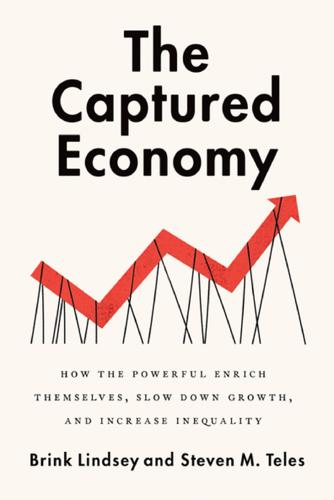
The Captured Economy: How the Powerful Enrich Themselves, Slow Down Growth, and Increase Inequality
by
Brink Lindsey
Published 12 Oct 2017
See regulation; regulatory capture status quo bias, 100 Stiglitz, Joseph, 12, 61 stock market, 31, 38, 46–48 Stop Online Piracy Act, 176 student loans, 38 subprime mortgages, 42–47 subsidies, 17 of countervailing power, 154–59, 208n13, 208n14 debt financing and, 36–63 failure to limit, 55–58 financial sector and, 32, 55–58 mortgage lending and, 36–45, 47, 57–59, 63 “Tobin’s Q” and, 20 Sunstein, Cass, 137, 165 Supreme Court, 76, 100, 166 judicial review and, 170–75 Tabarrok, Alex, 186n14 tariffs, 29, 31, 95, 149 taxation, 7 high income, 11 post-New Deal, 30–31 rising costs of home ownership and, 113 technology. See digital era/information technology Teles, Steven M., 14, 36, 161 Temin, Peter, 11 temporary monopolies, 16, 73 TFP. See total factor productivity “third party support”, 155 Thomas, Diana, 186n14 “Tobin’s Q”, 19–20, 22–23 total factor productivity, 24–27, 78–79 “Treaty of Detroit”, 11 Trump, Donald, 2–4, 8 tulip mania, 46 unionization, 6, 11, 31, 146, 157 collective bargaining and, 28 decline of, 91–92 post-New Deal, 29 upstream innovation, 74 upward mobility, 1, 30, 97–98, 143 upward redistribution, 12–14, 28–31, 127.
…
Introduction and diffusion together make for the dynamic process of creative destruction: new ideas originate and spread, old ways of doing things are displaced, and resources are reallocated from less to more productive combinations of capital and labor. Economists’ best measure of this process is total factor productivity (TFP) growth, or growth in output per unit of capital and labor. Regulatory rents do their main damage by interfering with creative destruction. By hampering the formation and growth of new businesses, they impede both the introduction of new products and production methods and the reallocation of resources that accompanies the diffusion of innovations.
…
To understand what’s going on, let’s break down measured economic growth into the constituent elements tracked by conventional growth accounting: (1) growth in labor participation, or annual hours worked per capita; (2) growth in labor quality, or the skill level of the workforce; (3) growth in capital deepening, or the amount of physical capital invested per worker; and (4) growth in so-called total factor productivity, or output per unit of quality-adjusted labor and capital. Over the course of the twentieth century, these various components fluctuated in their contributions to overall growth. The fluctuations, however, tended to offset each other, so that the long-term trend line of growth overall remained stable.

The Measure of Progress: Counting What Really Matters
by
Diane Coyle
Published 15 Apr 2025
Holding a copy of William Petty’s Political Arithmetick (1690) at Chetham’s Library, Manchester. 23 3.1. Rolls-Royce’s aeroengine factory, Derby, October 26, 2012.83 4.1. Steve Jobs unveils the first iPhone, San Francisco, January 9, 2007. 102 7.1. Postwar. 179 8.1. The future. 208 Figures 1.1 Growth rate of total factor productivity, G7 economies, 1955–2019. 12 1.2. Weightlessness: the material footprint of the UK economy. 19 2.1. UK labour productivity. 35 2.2. Aggregate data on growth and research effort, US 39 2.3. Two measures of US TFP growth: BLS (value added) and KLEMS (gross output). 46 2.4. Distribution of TFP, UK firms in manufacturing and ICT, 2008 and 2019. 54 vii viii l i s t o f f i g u r e s a n d t a b l e s 3.1.
…
The concept was made systematic in the KLEMS (capital, labour, energy, materials, and services) growth accounting framework (Solow 1957, Jorgenson and Griliches 1967, Jorgenson 2012), as t hese are the measured inputs used to produce output. The residual came to be regarded as an indicator of technological progress (although it includes in addition measurement error, omitted variables, and the effects of shocks or structural changes). It is generally described as total factor productivity (TFP): what we get out of the economy for what we put in. This interpretation raises the further question of how to explain why this residual itself grows at different rates over time. Is it because of variations in the success of research efforts and the diffusion of innovations? What are the 12 Ch a p t er On e 8 6 4 2 0 –4 1955 1957 1959 1961 1963 1965 1967 1969 1971 1973 1975 1977 1979 1981 1983 1985 1987 1989 1991 1993 1995 1997 1999 2001 2003 2005 2007 2009 2011 2013 2015 2017 2019 –2 Germany France Italy United States United Kingdom Canada Japan figure 1.1.
…
What are the 12 Ch a p t er On e 8 6 4 2 0 –4 1955 1957 1959 1961 1963 1965 1967 1969 1971 1973 1975 1977 1979 1981 1983 1985 1987 1989 1991 1993 1995 1997 1999 2001 2003 2005 2007 2009 2011 2013 2015 2017 2019 –2 Germany France Italy United States United Kingdom Canada Japan figure 1.1. Growth rate of total factor productivity, G7 economies, 1955–2019. Source: Penn World Tables. Note: 5-year moving average. roles of scientific discovery and technical advances on the one hand, and economic f actors driving usage of new technologies on the other hand? What might explain changes in the rate of this metric of technological progress?

Why Information Grows: The Evolution of Order, From Atoms to Economies
by
Cesar Hidalgo
Published 1 Jun 2015
GNP considers the goods and services produced by the citizens of a country, whether or not those goods are produced within the boundaries of the country. 5. Simon Kuznets, “Modern Economic Growth: Findings and Reflections,” American Economic Review 63, no. 3 (1973): 247–258. 6. Technically, total factor productivity is the residual or error term of the statistical model. Also, economists often refer to total factor productivity as technology, although this is a semantic deformation that is orthogonal to the definition of technology used by anyone who has ever developed a technology. In the language of economics, technology is the ability to do more—of anything—with the same cost.
…
See also Objects; Products Solow, Robert, 146, 147, 148, 149 Specific and recurrent transactions, 94 Stadium example, ordered states and, 16–21 Standards coevolution of markets with, 100 cost of market interactions and, 95, 100 Static steady state, 28–29 Statistical system, irreversibility of time in, 37–40 Steady state of non-equilibrium system, 29–31 origin of information and, 28–30 Stock, diversity vs., 152–154, 162 Study of Disadvantaged Youth, 113 Tacit knowledge, knowhow and, 78, 80 Tasmanians, 169–170 Teams, physical embodiment of knowledge/knowhow in, 73–74 Technological transfer, 143 Technologies, social networks and, 44 Tesla, Nikola, 59, 60, 62, 69 TFP. See Total factor productivity (TFP) Theory of dissipative structures, 28 Theory of social capital, 111 Thermodynamic potentials, 31–32 Thermodynamics of the universe, 25–41 Thoreau, Henry David, 43 Time, irreversibility of, 25–26 in statistical system, 37–40 Time travel, birth as, 3–5 Toothpaste, access to practical use of creativity and, 65–66 Torres Islanders, 170 Toshiba, 92 Total factor productivity (TFP), 147 TP-Link, 92 Transaction cost theory, 89–91, 93, 123 economic sociology and, 117–118 trust and reduction of, 117–118 Transition points breaks in knowhow carrying capacity of networks and, 167–168 in structures of networks, 107 Travel, cost of market interactions and rates of, 95, 96–99 Tree, information processing by, 35–36 Triadic closure, formation of social networks and, 114 Trust, 109, 111 developed vs. developing countries and, 124 familial networks and, 121–123 formation of large networks and, 116–117, 118 formation of large social networks and, 123 formation of professional networks and, 115–117 reduction of transaction costs and, 117–118 social networks and, 119–121, 123 Trust (Fukuyama), 115 Turing, Alan, xiv Tweet, information contained in, 13–14 Twitter, 13–14, 92, 101 Uncertainty principle, 39 United Nations, bureaucratic burden and, 103 United States formation of large networks in, 115, 116 migration of manufacturing to China from, 161–162 Universe both frozen and dynamic, 35 organization of, xii, xviii, 30–31 thermodynamics of, 25–41 University of Notre Dame, 109 Value, of knowledge and knowhow, 61–62 Venezuela, 60 Vidal, Marc, 110 von Braun, Wernher, 143 von Neumann, John, 14–15 Watt, James, 60, 146 Wealth augmentation of human capacity and, 68–69 economic development vs., 60–61 Weaver, Warren, xiv, xv–xvi Weill, David, 148 Westinghouse, George, 59 What Is Life?
…
As Kuznets famously remarked in his Nobel Prize acceptance speech, “The earlier theory that underlies these measures defined the productive factors in a relatively narrow way, and left the rise in productivity as an unexplained gap, as a measure of our ignorance.”5 Kuznets’ “measure of our ignorance” is what we know technically as total factor productivity (TFP). TFP is how economists refer to the gaps between the economic output predicted by a model and the one observed in the empirical data. (This gap is interpreted as the amount of output that an economy can produce with a given endowment of inputs).6 This gap motivated economists to build on Solow’s work, and during the second half of the twentieth century economists advanced a plethora of new economic growth models that improved the model of Solow.7 The new models included new factors and new mathematical tools to address the process of factor production and accumulation.

The Sharing Economy: The End of Employment and the Rise of Crowd-Based Capitalism
by
Arun Sundararajan
Published 12 May 2016
In a series of recent talks, the economist Robert Gordon from Northwestern University has lamented the slowdown in US productivity growth and, in particular, the absence of clear evidence that the digital revolution of the last two decades has had a significant impact on the growth rates of total factor productivity. A now-famous slide from one of his recent articles is replicated in figure 5.2.21 Figure 5.2 Growth rate of total factor productivity for each ten-year period (i.e., for the decades ending 1900 to 2010). Total factor productivity (TFP) increases when on average, over time, more output is produced with the same inputs—physical capital, financial capital, and labor. An increase in productivity in turn increases the rate at which an economy grows.
…
Figure 2.2 Example of a Traity profile. Figure 3.1 A simple schematic of the MYB framework. Figure 3.2 A schematic of Gansky’s Meshy-ness Grid. Figure 3.3 Collaborative Economy Honeycomb. Figure 5.1 Vehicle usage in the United States (compiled from NHTS data as of 2009). Figure 5.2 Growth rate of total factor productivity for each ten-year period (i.e., for the decades ending 1900 to 2010). Figure 5.3 The geographic footprint of Airbnb listings in New York City. Figure 5.4 Lower-income neighborhoods in San Francisco are more active users of peer-to-peer car rental. Figure 6.1 The “de Blasio” button, part of 2015 Uber campaign to fight a proposed cap on providers.
…
background screening, 50–51 contractor classification and, 160, 161 new social safety net and, 191 platform, 43–44 platform independence, 194 pricing, supply, and merchandizing, 194 TechCrunch, 11 Telang, Rahul, 112 Teran, Dan, 160 “There’s an Uber for Everything” (Fowler), 11 Thierer, Adam, 146 Thin sharing economies, 34 Threadless, 76 ThreeBirdNest, 107, 125, 177 3-D printing, 57–58 Thumbtack, 3, 6, 77, 164 Tiger Global Management, 25 TimeRepublik, 35 TimesFree, 43 Timms, Henry, 23, 136 Tincq, Benjamin, 23–25, 199 Tool libraries, 15 Total factor productivity (TFP), 116–117 Trade School, 43, 82 Traity, 64–65, 98 Transparency, mandated, 157 Transportation Network Companies (TNCs), 153 Trust, 4, 6, 12, 28, 35, 39, 47–50 brand-based, 144–146 history of (in world trade), 142–143 digitization of, 60–65 reputation and, 97–98 Tujia, 6, 121 Tumblr, 85 Turkle, Sherry, 45 Turo, 3, 80, 107, 177, 190 Tusk, Bradley, 136 Tuzhilin, Alexander, 112 Twitter, 29, 85 Uber, 2, 3, 6, 10, 19, 48, 154, 161, 186, 197, 203 class-action lawsuit and, 160 consumer behavior changed by “data Darwinism” and, 200–201 data science and, 157, 200–201 driver classifications, 159, 160, 176, 182, 183 driver protests, 200 entrepreneurial nature of, 192, 194 financing of, 25 gift economy aspects, 35 impact on traditional taxis, 122–123 local network effects, 119–120 as microbusiness, 77, 113 new social safety net and, 191 platform, 84 platform independence, 194 pricing, supply, and merchandizing, 194, 195 regulatory challenges, 135 social capital and, 62, 64 trust and, 145 UberPool, 66 “Uber Alles” (Surowecki), 19 Ulbricht, Ross, 86 Union Square Ventures (USV), 17, 23, 25, 85–86, 90, 157, 189 United States Conference of Mayors, 131, 147 Universal Avenue, 77 UnSYSTEM, 85–86 Upwork, 77, 162, 163.

An Extraordinary Time: The End of the Postwar Boom and the Return of the Ordinary Economy
by
Marc Levinson
Published 31 Jul 2016
For growth in labor productivity, I rely on a series developed by Angus Maddison, “GDP per Hour, in 1990 GK $,” published as “The Conference Board Total Economy Data Base, Output, Labor and Labor Productivity Country Details,” www.conference-board.org/data/economydatabase/. The labor productivity growth story is widely accepted among specialists, but its causes are hotly debated. The key variable at issue is “total factor productivity,” or “multifactor productivity,” which is the portion of productivity growth that remains unexplained after factors such as improved education and greater fixed capital are taken into account. Total factor productivity growth is usually attributed to technological innovation. Relevant statistics for most countries are lacking before the 1960s, but Nicholas Crafts contends the United Kingdom, the United States, France, Germany, and Japan all had significantly faster multifactor productivity growth over the 1950–73 period than before or since.
…
Romer, “Crazy Explanations for the Productivity Slowdown,” in Stanley Fischer, ed., NBER Macroeconomics Annual 1987, Vol. 2 (Cambridge, MA, 1987), 163–210; Dale W. Jorgenson, “Productivity and Postwar U.S. Economic Growth,” Journal of Economic Perspectives 2 (Fall 1988): 23–41; Steven Englander and Axel Mittelstädt, “Total Factor Productivity: Macroeconomic and Structural Aspect of the Slowdown,” OECD Economic Studies 10 (Spring 1988): 28; Zvi Griliches, “Productivity Puzzles and R&D: Another Nonexplanation,” Journal of Economic Perspectives 2 (Fall 1988): 19. 13. Jefferson Cowie, Stayin’ Alive: The 1970s and the Last Days of the Working Class (New York: New Press, 2010); Dominick Sandbrook, State of Emergency: The Way We Were: Britain, 1970–1974 (London: Penguin, 2010); Serge Bernstein and Pierre Milza, Histoire de la France au XXe siècle: Tome 5, De 1974 à nos jours (Paris: Editions Complexe, 2006). 14.
…
William Diebold Jr., Industrial Policy as an International Issue (New York: McGraw-Hill, 1980), 162; Japan Automobile Manufacturers Association, Motor Vehicle Statistics of Japan 2014, 16, 32. 16. Imuta, “Transition to a Floating Exchange Rate,” 527. Data on Japanese R&D spending are from Steven Englander and Axel Mittelstädt, “Total Factor Productivity: Macroeconomic and Structural Aspects of the Slowdown,” OECD Economic Survey 10 (1988): 36. 17. Dale W. Jorgenson and Masahiro Kuroda, “Productivity and International Competitiveness in Japan and the United States, 1960–1985,” in Hulten, ed., Productivity Growth in Japan and the United States, 45. 18.
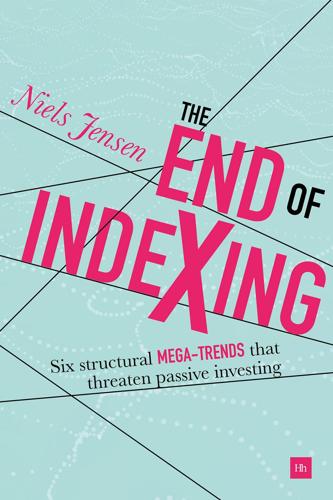
The End of Indexing: Six Structural Mega-Trends That Threaten Passive Investing
by
Niels Jensen
Published 25 Mar 2018
Both of those charts are based on labour productivity, which is the measure of productivity that most focus on; however, there is a problem. Labour productivity will rise sharply if sufficient money is spent on new machines, but that doesn’t necessarily improve overall economic efficiency. Consequently, the concept of total factor productivity (TFP) was conceived. It is calculated as the percentage increase in output that is not accounted for by the changes in the volume of inputs of capital and labour. In other words, TFP is a measure of what share of increased productivity can be explained by factors other than growth in labour or capital.
…
One would have to look across at least one complete economic cycle for my estimates to stand the test of time. Think of my GDP growth estimates as trend growth estimates. Major productivity improvements could upset this picture in a significant way (much more about this in chapter 10). As mentioned earlier, productivity is measured either as labour productivity or total factor productivity (TFP). The latter is the correct way to look at productivity when assessing the return on capital in an economy. High levels of indebtedness affect productivity negatively, as capital that could otherwise be used productively is used unproductively – to service existing debt. Productivity growth therefore suffers not from one but from two counterproductive undercurrents: ageing and high indebtedness.
…
In the following few paragraphs, I focus on oil, simply because the statistical output on oil is so much better than it is on coal and natural gas, but my conclusion would be no different on other fossil fuels. It all begins with productivity growth in oil-producing countries, which has been in decline in recent years. You will see from exhibit 7.4 that almost all oil-producing nations have experienced negative growth in total factor productivity (TFP) in the last few years. Exhibit 7.4: TFP in 15 largest oil-producing countries, 2012–16 2012 2013 2014 2015 2016 Russia 1.7 0.0 −0.6 −4.0 −0.6 Saudi Arabia −3.3 −5.5 −4.6 −2.6 −3.4 United States 0.1 -0.2 0.1 0.2 -0.3 Iraq 10.8 3.8 −2.5 1.5 6.1 Iran 1.2 1.0 1.6 1.4 1.5 Canada −1.2 0.3 0.9 −0.9 0.0 UAE 1.3 −0.3 −1.5 −1.0 −0.6 Kuwait 1.3 −5.3 -6.3 -4.3 −3.6 Brazil −1.8 −1.5 -2.6 -5.4 −3.6 Venezuela 2.3 −1.4 −6.4 -6.3 −16.9 Mexico 0.2 -1.5 0.5 -0.7 −0.8 Nigeria 3.1 1.8 1.9 -2.7 −6.8 Angola 0.8 1.5 -0.8 2.1 −1.2 Norway −0.2 −1.5 −0.7 −0.1 −0.5 Kazakhstan −1.5 1.2 0.7 −3.2 −1.8 Source: The Conference Board (2017).

The Complacent Class: The Self-Defeating Quest for the American Dream
by
Tyler Cowen
Published 27 Feb 2017
MEASURES OF PRODUCTIVITY INDICATE PESSIMISM The most direct way to measure whether innovation has declined is to look directly at available measures of productivity. Economists have two primary measures of business productivity. One is called “total factor productivity,” and the other is known as “productivity per worker hour.” Unfortunately, both measures show the American economy to be underperforming, albeit to differing degrees. Total factor productivity (TFP, for short) tries to measure how much new ideas add to national output, once we’ve adjusted for the contributions of capital and labor. This is a highly imperfect metric, in part because measuring the value of capital is not easy, but it is the single calculation that comes closest to measuring the innovation-generating capacity of an advanced economy.
…
“Black Students See a University Riven by Race.” The New York Times, November 12, 2015. Fernald, John. “Productivity and Potential Output Before, During, and After the Great Recession.” National Bureau of Economic Research Working Paper 20248, June 2014a. Fernald, John. “A Quarterly, Utilization-Adjusted Series on Total Factor Productivity.” Federal Reserve Board of San Francisco, April 2014b. Fernald, John, and Bing Wang. “The Recent Rise and Fall of Rapid Productivity Growth.” Federal Reserve Bank of San Francisco, February 9, 2015. Ferrie, Joseph P. “The End of American Exceptionalism? Mobility in the U.S. since 1850.”
…
See Affordable Care Act Occupy Wall Street movement oil industry oil price shock (1973) On the Road (Kerouac) outsourcing pantheism Pareto, Vilfredo patents Patriot Act pets philanthropy Pinker, Steven Pissarides, Christopher play, outdoor polarization policing political science poverty and mobility and segregation Princeton University prison riots productivity and cities diffusion problem firm-specific productivity and innovation and the internet and matching and mobility productivity per worker hour total factor productivity (TFP) worker productivity profiling progress and the Complacent Class and democracy and innovation and mobility model of history and segregation progressivism protests. See social protests and riots Putin, Vladimir Putnam, Robert D. R&D (research and development) race relations racism Rauch, Jonathan Reagan, Ronald Reformation, Protestant regional specialization Republican Party riots.

India's Long Road
by
Vijay Joshi
Published 21 Feb 2017
At a proximate level, growth of income and output needs rising supplies of basic resources (‘factors of production’) such as labour, physical capital, and human capital (i.e. education and skills), combined with improvements in ‘total factor productivity’. Total factor productivity (TFP) is economists’ jargon for the overall efficiency with which basic resources are used.2 But TFP is an ungainly term and I shall often use the word ‘productivity’ instead; so, ‘productivity’ and ‘total factor productivity’ (TFP) are used as synonymous and equivalent throughout this book. (Note that they should not be confused with ‘labour productivity’, which means output per worker.)
…
There is evidence that the private returns to secondary education are high (and social returns even higher) but poverty and credit constraints limit the ability of people to educate their children. Quality of education is as important as its quantity. Unfortunately, the quality of education in India is abysmal at all levels (see Chapter 9). Total Factor Productivity ‘Total factor productivity’ (TFP) is the effectiveness or efficiency with which the supplies of factors of production (labour, physical capital, and human capital) are converted into output. Improvements in TFP are a critical ingredient in the growth process. In their absence, growth would slow down sharply because of ‘diminishing returns’ to the application of capital.
…
References [ 335 ] 336 ╇ 337 INDEX Aadhar card, 206, 207, 214, 304 and Aadhar-╉linked bank accounts, 207, 214, 287, 304 administration, see government administration advanced countries (ACs), 53, 65, 97, 129, 132, 141, 145, 188, 202, 255, 257, 262, 263–╉4, 266–╉8, 277, 298 Agreement on Government Procurement (GPA), 269, 298 agriculture, 55, 67–╉70, 93, 100–╉4, 121, 126, 141–╉2, 163, 229, 248, 267, 292–╉3, 296, 309 exports, 103 marketing, 101, 293, 309 price controls in, 102 public investment in, 102, 293, 296, 309 reform in, 100–╉4, 292–╉3 share in GDP, 67–╉8 subsidies in, 102–╉3, 293, 296, 309 surplus labour from, 70 trade liberalization in, 103, 267 workers in, 66–╉7 Agricultural Produce Marketing Committees (APMCs), 101 air quality, 124–╉6 ASEAN, 265 Asia Pacific Economic Cooperation (APEC), 266, 298 backward states, 29 balance of payments, 22, 139–╉40, 155–╉9, 248–╉50, 254, 259, 299 Bangladesh, 28, 176, 186, 187 Bank Investment Company (BIC), 118, 295 bankruptcy, 7, 97–╉9, 154–╉5, 291, 294 Basel committee on Bank Regulation (BCBR), 258 Basel III standards, 258 basic income, 197, 210–╉15, 216–╉19, 285–╉8, 293, 303–╉4 cost of providing, 216–╉19 recommended magnitude of, 212, 214, 216–╉19 universal, 211, 212, 214–╉15, 216–╉19 Bharatiya Janata Party (BJP), 22–╉3, 24–╉5, 227–╉8, 278, 311–╉12 -╉led NDA government, 117 see also Modi Government black money, 237–╉8 Board of Industrial and Financial Restructuring (BIFR), 97–╉8 business houses, 61, 62 capital, 26, 52–╉3, 69–╉70, 72, 105, 248, 258, 291 accumulation of, 52–╉3, 58–╉60, 312; see also investment -╉intensive sectors, 69, 80 markets, 97–╉9 movements, 155, 159, 252, 262, 267 of banks, 154, 258, 284, 295 per worker, 52, 52 physical capital, 52–╉3 reform of capital markets, 97–╉9, 291 see also human capital; investment; environment capital capital account convertibility (CAC), 155, 159, 253, 262 capital controls, 155–╉6, 262–╉3 capital flows, 157, 250, 254, 282 volatility of, 262 338 capital-output ratio, 19 capitalism, 60–2 carbon tax, 130 cash transfers, 91, 164, 206–14, 288, 296 objections to, 208 technology of, 206–10 universal, 214–15 see also basic income Central Government Public sector enterprises (CPSEs), 113–23 Central Vigilance commission (CVC), 115, 234 Centre and States, 161, 228, 313–15 child/infant mortality, 20, 72, 125, 186 nutrition, 28, 186, 189 China, 6, 8–10, 25, 28, 29, 55, 70, 72, 73, 124, 125, 130, 131, 132, 163, 176, 179, 185, 186, 249–50, 252, 254, 255, 256–7 Churchill, Winston, 3 civil servants, 43, 151, 233, 308 climate change, 128–33 and India, 129–33, 256–7 and low-carbon strategies, 131 and Paris Conference, 131-2 coal, 88, 89, 114, 122, 130, 132, 214, 285 collective action, 42, 97, 226, 229, 306 companies, 26, 52, 61, 72, 78, 79–80, 97–8, 114–16, 148, 153–4, 284 competition, 26, 42–3, 61, 92–4, 115–17, 120–2, 181, 183–5, 290, 303, 268, 313–14 Competition Commission, 93, 283, 290 concentration, 61 conditional cash transfers (CCTs), 209–10 Congress Party, 18, 22–3, 24, 24, 25, 114, 227–8, 229, 235, 278, 295, 301 contracts, 41–3, 119–21, 123, 230, 237, 308 contract labour, 67, 79, 290 Contract Labour Act (CLA), 79, 81, 82 contract teachers, 179, 182, 301–2 controls, 18, 19, 43, 44, 87–91 coordination, 37, 39, 43, 92, 104, 120, 152, 256, 264, 292 [ 338 ] Index corporate: investment, 23, 26–7, 56, 59–61, 145–8, 285 savings, 26, 27 sector, 58, 61–2, 154, 284 corruption, 22, 44, 74, 79, 96, 105, 185, 207–8, 235–43, 307–10 courts, 234–5 credit, 19, 25, 27, 74, 76, 99, 118, 188, 280–1, 284 access to, 75–6, 253 bank, 153–4, 276 directed, 75 for small firms, 75, 295 short-term, 22 wilful defaulters and, 99 criminal politicians, 238 crisis, 22, 23, 30, 157–9, 259, 260, 280, 315 of 1991, 26 crony capitalism, 7, 8, 62, 105, 235–43, 277, 283, 306–7, 310, 313 crop insurance, 296, 309 cross-border outsourcing, 70, 250, 263 crowding out, 151, 160 current account deficit, 23, 27, 59, 139, 155, 156, 156–7, 248–9, 253, 280–1 debt overhang, 148, 153–5, 284 decentralization, 179, 185, 232–3, 306, 308, 314–15 ‘deep fiscal adjustment’, 165, 279, 285–8, 290, 300, 309–10, 314 and economic reform, 91–2, 163–5, 212–14, 285–8 and universal basic income 285–7 Modi government and, 287–8 democracy, 3–4, 9, 10, 18, 35, 36, 141, 225–6, 229, 232–3, 306, 311–12, 315–17 demographic transition, 52, 59, 72–3 deprivation, 27–30, 35, 201 devaluation, 18, 23, 252, 254 developing countries (DCs), 15, 27, 44, 53–4, 130, 132, 141, 176, 252, 256, 263–4 diesel, 88–9, 126, 164, 287, 288 disadvantaged: castes, 306 groups, 28–9, 204, 226, 228, 339 Doha Development Agenda, 300 Draft National Health Policy, 305 droughts, 17–18, 22, 104, 130, 139, 141, 316 Ease of Doing Business, 60, 74, 75, 77, 94, 105, 284, 289–90, 308 see also World Bank East Asia, 55, 68, 70, 71, 105, 155, 157, 247, 253, 265 East Asian crisis, 157, 253, 262 economic development, 8, 16, 35, 44, 67, 72, 101, 225, 230, 243, 277–8 economic reform/reforms, 54, 77–82, 87–91, 92–4, 94–7, 101–4, 104–5, 117, 119–23, 126–7, 130–1, 151–3, 154, 159, 162–5, 182–5, 188–91, 195–7, 210–15, 233, 240–3, 263–9, 275–308 in 1980s, 22, 24, 26 in 1991, 4, 26, 27 education, 19–20, 37, 42–3, 53–5, 175–85, 212–13, 229–32, 300–2, 304–5, 310 enrolment in, 28–9, 176, 184 ‘free and compulsory’, 181, 231–2 government schools and, 42, 179–83, 229, 232, 301–2 higher, 29, 184–6, 302 pedagogic practices in, 179, 301 primary, 28–9, 42, 176–83, 185, 300, 305 private providers in, 234 private schools in, 177, 172–7, 301–2 private universities in, 184, 185 quality of, 53, 179, 183, 301, 312 reform, 181–5, 301–2, 305 secondary, 29, 53, 71, 176–83, 185, 300, 305 teacher accountability in, 179, 301–2, 305 teacher effort in, 179 universal free, 304 vocational, 185 vouchers, 181 see also Right to Education Act election expenditures, 238, 241, 307–8 electricity, 89–90, 117, 121–2, 214, 309 Electricity Act of 2003, 122 Emergency, 18 see also Gandhi, Indira employment, 19, 51, 65–8, 71, 73, 77, 79–82, 94, 203–4, 288–90, 300–1 formal and informal, 67, 69 in organized and unorganized sectors, 66–7 problem, 54, 65–70, 77, 87, 288–90, 297 sectoral shares, 68 see also labour ends of economic policy, 35–6 energy, 88, 113, 128–31, 254, 296 entrepreneurship, 40, 61, 62, 75, 313; see also corporate sector environment, 123–33 capital, 123–8 degradation of, 124, 126–7, 312 Modi government and, 296 pollution, 124–6, 296, 309 property rights and, 123–4 protection of, 102, 113, 165, 229, 293 reform, 124–8, 130–3, 293, 296 exchange rate, 155–6 and external payments regime, 155 policy, 155–9, 282 reform of policy framework, 159 regime, 155, 282 exports, 23, 55, 69–70, 72, 92, 103, 153, 159, 248–9, 255, 281–2, 297 external economic engagement, 257–69, 297–300 Modi Government and, 299–300 external: balance, 140, 155–9, 279, 282 liberalization, 253, 297 payments regime, 155–9 see also balance of payments external effects/externalities, 38, 39, 43, 124, 130, 191–2, 286 factor markets: capital, 97–9 finance 99–100 labour, 77–82, 94 land, 94–7 Modi government and, 294 reform of, 94–102, 291 Index [ 339 ] 340 farmers, 89–91, 101–3, 126–7, 143–5, 202, 228, 238, 293 and pricing of fertilizers, 90 and subsidies, 90 self-sufficient, 103 see also agriculture federalism: competitive, 314 cooperative, 214, 314 see also Centre and States female labour force participation rate, 73 fertilizers, 90, 103, 164, 206, 212, 285, 290 Finance Commission, 161, 228, 281, 308, 313, 314–15 financial: inclusion, 99–100, 291, 309 institutions, 76, 100, 140, 258 repression, 152, 162, 282 sector reform, 99–100, 294 firms: in unorganized sector, 76, 77 size-distribution of, 71 see also small firms; companies fiscal: adjustment, 162, 165 balance, 159–65 consolidation, 30, 59, 159, 161–3, 281, 282, 309 crackdown, 18 deficits, 30, 139, 143, 148, 156, 157, 159–65, 213, 280, 287 policy/policies, 25–6, 30, 142, 145, 151–2, 159–65, 281, 282 problem, 159, 280 reform, 92–3, 159–65, 282 sustainability, 160, 280 see also ‘deep fiscal adjustment’; subsidies Fiscal Responsibility Act ( 2003), 162 food: articles, 141, 143, 144 market, 142–3, 144 security, 41, 203, 267 subsidies, 91, 143, 164, 202–3, 205–6, 212–13, 288 see also public distribution system; issue prices; procurement prices Food Security Act (FSA), 164, 202, 231 [ 340 ] Index foreign: aid, 18, 256 borrowing, 23, 26, 30, 156 capital, 247 investment, 24, 247–50, 255, 258–9, 297–8, 299–300 relations, 8, 9 foreign direct investment (FDI), 93, 151, 250–1, 253, 268, 284, 299 from China, 254 Indian diaspora’s role in, 254–5 liberalization of, 229, 299 policy regime, 250 reform, 93, 299 foreign exchange: intervention, 156 reserves, 156, 157, 158, 249, 260; see also global reserve system forests, 127–8 free capital mobility, 157; see also capital account convertibility Gandhi, Indira, 17–18, 22, 26, 227, 229, 233, 237 Gandhi, Rajiv, 22–3, 26 Gandhi, Sonia, 24 Gini Coefficient, 29, 30 global: ambition 8–10 credit crisis, 25, 58–9, 139, 160, 253, 258–9, 277 economic issues, 257–9 engagement, 247–69 exchange rate system, 259 imbalances, 259–60 manufacturing networks, 250 reserve system, 261–2 slowdown, 25, 151; see also recession supply chains, 264 global credit/financial crisis (GFC), 25, 27, 58–9, 139, 253, 257–9, 262, 277 global warming, see climate change globalization, 247, 254; see also global engagement goods and services, 41–3, 92, 94, 113, 163, 206, 210, 247–8, 257, 290–1, 293 carbon-intensive, 130 reform of markets in, 87–91, 92–4, 290 341 goods and services tax (GST), 92–3, 291, 293–4 government administration, 230–5, 307, 308 consumption, 59 corruption in, 235–43 debt, 160–1 employees, 43, 239 expenditure, 163–5 failures, 7, 39–40, 44, 187–8, 191–2, 276, 304 interest payments, 165 intervention, 19, 40, 87, 91, 104, 144, 236 procurement, 236–7, 241 services, 44 spending, 88, 102, 131, 148, 163, 203, 302 subsidies, 44, 87–92, 102, 180 see also state gross fixed capital formation (GFCF), 145 growth acceleration, 15, 16, 27, 55, 61 accounting, 54–8 fast, 5–6 high-quality, 5, 8, 276, 279, 315–17 Hindu rate of, 15, 100 of output per head/per worker, 51–4 rate of, 4, 5–6, 15–16, 19, 23, 26, 30, 36, 51, 53–7, 101, 144, 151 rapid, 17, 19, 35, 51, 52, 54, 60, 65, 70, 73, 87, 93, 104, 119, 153, 230, 236, 240, 279, 297, 300, 302, 309 slow, 19–20, 144, 275 slowdown, 25, 56, 144, 145, 153–4, 281, 317 sources of, 51–8 ‘super-fast’, 6, 28, 139, 157, 297 sustainable, 35, 113, 123–33, 279 health/health care, 7, 19, 37, 43, 175, 186–8, 188–97, 300, 302–3, 304–5, 310, 312, 313 future of, 195–7 money follows patient scheme, 303 primary care, 19, 187, 191–4, 195–6, 302–3, 305 public health and, 72, 186–8, 302 quality of, 189, 191–7 reform of, 195–7, 305 secondary care, 187, 189–91, 195–6, 302–3, 304–5 state intervention in, 187 universal, 195 health insurance, 39, 190, 205, 210, 303 high-income countries, 4–5, 51, 276, 316 Hinduism, extremist version of, 311–12 Hirschman, A. 42 household savings, 58–9 human capital, 21, 53, 66, 189, 254, 287, 289, 302 inclusion, 6, 30, 35, 91, 99, 113, 135, 175, 215, 293, 300 see also financial inclusion income: agricultural, 163 distribution, 29, 36–7, 44, 256–7 redistribution, 43, 88, 91–2, 201–19, 253 ‘India shining, ’ 24 Indian capitalism, 60–2 Indian university system, 184; see also education, higher India’s global engagement evolution and extent, 247–52 impact on India, 252–5 impact on the world, 255–7 India’s stance on global economic issues, 257–69 Indradhanush initiative, 295 industry/industries, 26, 55, 61, 67–70, 88, 94, 97, 100, 101, 104–5, 113–14, 153, 158, 267 Industrial Disputes Act (IDA), 78–82, 256 industrial policy, 104–5, 284 reform of, 104–5 industrialization, 105, 202, 253 inequality, 4, 29–30, 226 regional, 29 inflation, 18, 23, 25, 27, 59, 139–45, 151–3, 157–8, 162, 166–8, 208, 279–80 and government debt ratio, 162 and Modi government, 152, 280–1 demand factors, 144–5 high, 36, 59, 140, 144–5, 148, 151, 162, 279 Index [ 341 ] 342 inflation (Cont.) supply-side factors, 142–4 targeting, 151, 166–8, 279–80 see also monetary policy information problems, 39 information technology (IT) sector, 61, 70, 233, 240, 249, 253, 298 infrastructure, 7, 24, 60, 113, 119–23 and the Modi government, 295–6 reform, 119–23, 292, 295–6 see also Public–Private Partnerships Insolvency and Bankruptcy Code, 97–8, 294; see also bankruptcy institutional decay, 226, 229, 230, 306–7 Integrated Child Development services(ICDS), 189 Intended Nationally Determined Contributions (INDCs), 132 international: liquidity, 260–1 migration, 252, 254–5 money, 258–63 reserves, 259, 299 International Monetary Fund (IMF), 18, 22, 23, 26, 253, 259–62 international monetary system, 259, 260–2 international trade, 18–19, 78, 92–4, 101, 103, 156–7, 247–8, 252–5, 255–7, 263–9, 276–7, 297–300, 310 and ‘behind-the-border’ items, 264 between India and EU, 300 liberalization of, 18, 24, 38, 93, 103, 117, 163, 248, 253, 263, 290, 298 policies, 92–3, 248, 256, 262–3, 297 policy reform, 93, 263–9, 297–300 investment, 19–20, 26–7, 39–40, 52–3, 56, 60, 93-5, 102, 145, 148, 153-5, 250–2, 282–5 and Modi Government, 282–5 climate, 60, 282–5 corporate, 26, 59, 145–8 household, 59 in infrastructure, 59, 95, 119, 120–1, 163 in 1980s, 23 private, 59, 89–91, 103, 119, 120, 123, 148, 162, 280–1, 283, 287 public, 17, 22, 23, 59, 91, 102, 104, 119, 123, 213–14, 292–3, 296, 309 [ 342 ] Index reforms in climate for, 74–6, 282–5 revival, 284 risk-premium on, 148 see also public–private partnerships issue prices, 91, 143, 164, 202 Jan Dhan, 207 Janata party coalition government, 18 Judicial Appointments Bill, 235 justice, administration of, 43 Kashmir, 8, 227 kerosene, 88–9, 164, 285, 288 labour, 7, 19, 39, 52, 54–5, 65, 69–74, 76–8, 79–80, 94, 104–5, 176, 229, 257, 288–91 as resource, 52, 55, 69 bias against use of, 69–72 -demanding growth, 76 -intensive industries, 80, 253 -intensive manufacturing, 70, 72, 250, 266, 298 -intensive products, 70, 72, 73, 77, 80, 290 low-skilled, 70–2, 77, 254 reallocation of, 54 skilled, 77 shift from agriculture, 69, 70 training, 38, 185 see also contract labour; labour laws; labour market labour force participation rate, 73 labour laws/regulations, 65, 77–82, 94, 97, 253, 289–90, 294, 299, 309 reform of, 77–82, 294 studies on impact of, 80 labour market, 7, 39, 77–82, 94, 290, 310 reform of, 81–2, 294 labour productivity, 52, 54, 66–9, 69, 72, 73, 76, 104, 288–9 growth of, 55 in organized industry, 69 see also output per worker land, 55, 74, 76, 94–7, 120, 211, 213, 236, 291, 294, 309–10 Land Acquisition, Rehabilitation and Resettlement Act (LARR), 95–6, 294 343 land market 94 price-discovery in, 96, 291 land law: reform, 95–7, 294 liberal democracy, 35–6, 279, 311–12, 315–16 liberalization, 7, 18, 22–4, 26, 54, 61–2, 104, 159, 215, 252–5, 262 of foreign direct investment (FDI), 299 license raj, 27, 184, 307 licenses, 19, 40, 100, 122, 230, 235, 237–9, 283 life expectancy, 20, 186 literacy, 28 adult, 20 female, 29 local government, 314–15 low-income countries, 28, 186, 256, 300, 302 macroeconomic stability, 7, 35, 37, 43, 53, 59, 139–65, 279–82 and external balance, 155–9 and fiscal balance, 159–65 and internal balance, 141–55, 281–2 Modi Government and, 280–2 Mahatma Gandhi National Rural Employment Guarantee Scheme (NREGS) 203–5, 210, 213, 215, 239 arguments for and against, 204–5 description of, 203–4 ‘Make in India’, 105, 310 managed floating, 155–6, 280–1; see also exchange rate policy Mandal commission, 22, 226–7; see also reservations manufacturing, 68, 71–2, 250, 310 share of employment in, 68 market/markets, 7, 19–20, 35–41, 43–4, 102–4, 123–4, 154, 187–8, 276–7, 288–93 failures of, 37–9, 40–1, 44, 75, 94, 187–8, 190, 191–2, 276, 303–4 for factors of production, 65–72, 77–82, 94–102, 289, 291, 294 for goods and services, 87–94, 290–1, 293–4 liberalization of, 36, 229 prices, 37, 41, 90–1, 95, 143, 164, 202, 288 reform of, 77–82, 87–105, 290–6 virtues of, 37 see also competition; natural monopoly Mayawati, 227 mega-regional agreements, 297, 309 merit goods, 38, 213 Mid-Day Meals scheme, 177, 206 middle class, 313 mobile banking, 207 Modi, Narendra, 25 foreign tours, 299 pan-Indian electoral support for, 312 as RSS pracharak, 312 Modi government, 82, 96, 100, 105, 278, 280–1, 299–300, 304–6, 307–8, 310–12 Monetary Framework Committee, 151, 281 monetary policy, 142, 144–5, 151–2, 166–8, 281–2 transmission of, 152, 281–2 reform of policy framework, 151–2, 166–8, 281–2 monopolistic exploitation, 39, 117 multi-currency system, 261–2 multilateral negotiations, 264 Narasimha Rao, P.V., 23, 26 National Rural Employment Guarantee, Act, 232; see also Mahatma Gandhi National Rural Employment Guarantee Scheme nationalization, 40, 41 natural capital, 123–8 natural monopoly, 38–9, 117 Nayak, P.J., 118, 285, 295 Nehru, Jawaharlal, 4, 17–18 non-tradable goods, 117 nuclear agreement with US, 24 nutrition, 186, 189 oil prices, 18, 22, 89, 144, 152, 159, 288 oil-related products, 88, 285 ‘Old India Model’, 275–5 organized industry, 69–70 Index [ 343 ] 344 organized sector, 65–7, 69–70, 73–4, 76–7, 79–80, 94, 283, 288–9 bias against labour in, 69–72 definition of, 66 and demand for labour, 69–72, 73–82 labour productivity in, 69 output per worker, 52, 57, 69, 87, 288 ownership, 43–4, 113–18, 123, 211, 279, 288–96, 299, 310 Pakistan, 8–9, 17, 18 Paris conference on climate change, 131–2 Partial Reform Model, 22–7, 276 Patel, U., 151, 281 payments regime, see external payments regime per capita: growth, 5–6, 306, 317 income, 4–5, 6, 30, 51, 75, 240, 256, 276, 316 planning, 17, 39, 40 plurilateral agreements, 267, 269, 298 police, 234 political: awakening, 226, 228, 306 economy, 8, 30, 209, 225–30, 278, 315, 317 political parties, 92, 227, 229, 237, 238, 241–2, 306–7, 308 financing of, 241, 307 pollution, 38, 124, 125–6, 189, 235–6, 293 population, 21, 27–8, 52–3, 72–3, 77, 101, 105, 123, 163–4, 210–12, 215 age-distribution of, 72 poverty, 4, 15, 21, 27–30, 44, 53, 65, 66, 77, 88, 201, 210–11 among disadvantaged groups, 28 extreme, 4, 28, 211, 215, 277, 286–7, 300, 309 in states, 28 programmes, 205 power, 8–10; see also electricity Pratham, 177, 180 preferential trade agreements (PTAs), 264–7 price/prices/price system, 19, 42–4, 87–91, 96, 103, 122, 126, 128, 130, 141, 202–3, 212, 214, 237, 285, 293 [ 344 ] Index price and output stability 141–55 price controls, 7, 87–91, 102, 236, 285 price stabilization, 203 price subsidies, 90, 206, 285, 300 reform, 87–91, 92–7, 101–3, 121–2, 125–6, 130–1, 285, 290, 292, 293, 294, 296 see also inflation; monetary policy; issue prices; procurement prices priority sector lending, 99 private: companies, 7, 61, 94, 95, 102, 114–16, 119, 291 health insurance markets, 190–1 ownership, 36, 101, 116 partners, 42, 119 providers, 43, 175, 190–3, 234, 303–4 sector, 17, 37, 41–4, 62, 101, 191–2, 194–6, 232–6, 292–3, 302–3, 306 privatization, 24, 41–2, 92, 113–18, 121, 165, 213, 287, 291, 295 and efficiency, 116 fiscal case for, 116 procurement prices, 91, 143, 145, 152 production, pattern of, 69 productivity, 23, 26, 27, 52, 53–4, 60–2, 66, 70, 87, 94, 233, 288–9 growth of, 62, 87, 113, 116, 247, 253, 288, 290–2, 297, 310, 312 see also labour productivity; total factor productivity promoter/promoters, 62, 98, 128, 154, 308 prosperity, 4, 276 public and private providers, 43, 193, 303–4 public distribution system (PDS), 41, 91, 143, 164, 202–3, 209, 239, 253 reform of, 202–3 public goods/public services, 7–8, 37–8, 41–3, 92, 175, 181, 201, 210, 228, 230, 242, 277, 313–14 public health, see ‘traditional public health’; see also health/health care public interest litigation, 125–6 public–private partnerships, 42, 59, 95, 119–23, 292, 296, 309 reform of, 119–20, 295–6 Public Procurement Bill, 241 345 public sector, 7, 19–20, 42–3, 58, 66, 115, 119–21, 180, 193, 196 public sector banks (PSBs), 118, 154–5, 284, 295, 309 reform of, 118, 154, 295 public sector enterprises (PSEs), 19–20, 24, 41, 93, 113–18, 164–5, 180, 213, 287, 291, 295, 309 and the Modi government, 294 reform of, 115–18, 291, 295 public telecom companies, 114 Punjab, 30, 102, 127, 226, 227 separatist movement in, 22 purchasing power parity (PPP), 5, 276 pure public goods, 37–8, 43, 102, 140, 164, 188, 191, 210, 212, 277, 285–6 quantitative easing, 158, 262 Radical Reform Model, 276 -308 Ram, K., 227 rail services, 90, 285 Rajan, R., 99, 152, 159 Rangarajan, C., 28, 210 Rashtriya Swasthya Bima Yojana (RSBY), 191, 195–6, 205, 303, 305 Rashtriya Swayamsevak Sangh (RSS), 311–12 real effective exchange rate (RER), 158, 281 recapitalization, 118, 154, 162, 285 recession, 18, 23, 36, 160; see also slowdown Reddy, Y.V., 157 reform/reforms, see economic reform/ reforms Regional Comprehensive Economic Partnership (RCEP), 265, 266, 297 regulation, 7, 43–4, 77–8, 117–18, 125, 240–2, 258–9, 276–7, 288–93, 303–4, 307 remittances, 249, 254 reservations, 22, 72, 234, 276 Reserve Bank of India (RBI), 100, 145, 151–2, 154, 156–9, 162, 258, 279, 281–2, 284, 295 resource/resources allocation, 7, 36, 44, 87, 91–3 degradation of, 124, 127 scarcity of, 38, 40, 236–7, 260 Right to Education Act (RTEA), 181–3, 231, 301; see also education Right to Information Act (RTIA), 240 rights, 18, 36, 38, 40, 43, 76, 95, 96, 98, 123–4, 231–2, 236–7, 268, 293, 307, 311, 313, 315 sanitation, 28, 76, 126, 188–9, 196, 201, 203, 302, 312 Sarva Shiksha Abhiyan, 177 savings, 19, 26–7, 52–3, 58–9, 70, 73, 92, 152, 213, 282, 286–7 domestic, 56, 156 household, 27, 58–9 public, 58–9, 148 scandals and scams, 25, 27, 62, 151, 191, 203, 237 security, 9–10 services, 41–3, 55, 67–8, 70, 71, 72, 93–4, 100, 104–5, 247–50, 266–8, 290–2, 298 shadow banks, 258 Shanta Kumar committee, 203 Shastri, Lal Bahadur, 17 Sick Industrial companies Act (SICA), 97–8 Singh, Manmohan, 23–5, 206 Singh, V.P. 22–3; see also Mandal Commission; reservations skill/skills, 77, 252, 310; see also human capital; vocational and technical education and training skill-intensive sectors, 69–70, 104–5 small firms, 71, 72, 73–7, 283, 295 small-scale industry reservations, 72 social: awakening, 226, 306 democracy, 36, 201–2, 300 security benefits, 66–7 social enablement 163, 165, 201, 202, 300-6 Modi government and, 304–6 social protection, 163, 201–22, 279, 300, 304 framework for, 202, 203, 210, 300–4 Modi government and, 304 reform, 208-15 schemes, 202, 206, 210, 300 social safety net, 201–22, 239, 277 Index [ 345 ] 346 South Korea, 5, 6, 20, 68, 70, 157, 262, 265, 316 Special Drawing Rights (SDRs), 261–2 state: accountability, 230–5 capacity, 231–5, 254 intervention, 7, 19, 36, 37-44, 142, 187–90, 192, 226, 228, 300, 302 and market relationship, 8, 36–44 ownership, 18, 36, 40, 41, 113-18, 163 political economy of, 225–30 reform of, 233–5, 241–3, 247 state electricity boards (SEBs), 89–90, 122, 309; see also UDAY state public sector enterprises (SPSEs), 114, 115, 116 states: deprivation in, 28 growth in, 27 inequality between, 29–30 poverty in, 28 see also Centre and States sterilized intervention, 156 stressed assets, 122, 154, 284 subsidies, 30, 38, 43–4, 87–92, 101–4, 163–4, 205–8, 212–13, 230, 285–8, 293–4 elimination of, 214–15, 230 explicit, 163–4 hidden, 87, 92, 123, 164, 212, 285 problems in unwinding, 214 Subbarao, D., 158–9 Subramanian, T.S.R., 127 Swachh Bharat, 306, 310 Targeted Public Distribution System (TPDS), see Public Distribution System tax/taxes/tax system, 35, 38, 40, 44, 89, 92–3, 124–5, 128, 131, 163, 286–7, 290–1 exemptions, 93, 163, 213, 284 indirect tax, 92–3, 163, 290–1 on international trade, 93, 247; see also trade liberalization minimum alternate tax, 299 reform, 92-3, 162–3, 291, 293 retrospective, 151, 299 and revenue, 35, 37, 51, 163 [ 346 ] Index see also government expenditure; subsidies teachers, 179–83 telecom spectrum, 38, 236 Tendulkar, S., 28, 210–11, 216 total factor productivity (TFP), 52, 53–7, 72, 80, 87, 104; see also productivity tradable goods, 88, 117, 291 trade, see international trade Trade Facilitation Agreement (TFA), 264–5 Trade in Services Agreement (TISA), 269, 298 trade unions, 66, 79, 82 and political parties, 82 teachers’ unions, 179, 183, 229 ‘traditional public health’ (TPH), 188–9, 196, 303 tragedy of the commons, 38 Transatlantic Trade and Investment Partnership (TTIP), 265 Trans-Pacific Partnership (TPP), 265–6, 298 transparency, 44, 240 UDAY, 296 unemployment, 65 United Progressive Alliance (UPA), 24–5, 95, 97, 117, 143, 164, 202, 283, 307–8 United States, 8, 252, 255 and China rivalry, 10 gilded age, 240, 243 as ‘hyper-power’, 9 and India, civil nuclear agreement, 9 University Grants Commission (UGC), 184–5 unorganized sector, 66–7, 69–70, 76–7, 78, 99, 288–9 definition of, 66 low-labour-productivity in, 66 low-quality jobs in, 73 output of, 67, 69 as ‘own account enterprises’, 76 workers in, 65 urban: infrastructure, 97, 120, 123, 292 land, 96, 131 urbanization, 96 347 Vajpayee, Atal Behari, 24 value-added tax (VAT), 92–3 vocational and technical education and training (VTET), 185 water, 75, 90–1, 101–3, 125–7, 206, 212, 285, 290, 293, 309 over-extraction of, 126 pricing, 126–7 women, 29, 72, 73, 204, 205, 210, 233, 304, 311; see also female labour force participation rate; literacy, female workforce, 66–7, 77, 80, 94, 292 income of organized, 145 informal, 67, 69 mal-distributed, 66 non-farm, 67 poor, 100 in unorganized sector, 66–7 see also labour/labour force World Bank, 28, 186 ‘Ease of Doing Business’ reports of, 74, 283 and foreign aid, 18 survey of Indian firms, 74 World Trade Organization (WTO), 263–4, 267–8 Yadav, Lalu Prasad, 227 Yadav, Mulayam Singh, 227 zamindari, abolition of, 226 Index [ 347 ] 348
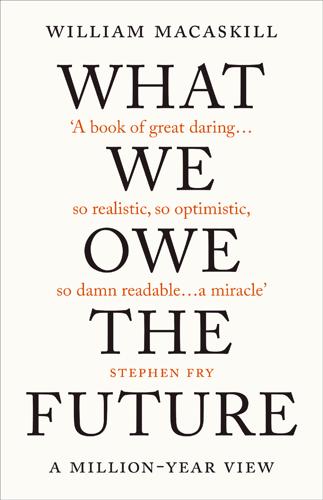
What We Owe the Future: A Million-Year View
by
William MacAskill
Published 31 Aug 2022
The economic data suggest that technological progress is already slowing down. To measure the rate of technological progress, we can look at what economists call “total factor productivity.” Though this term is complex, the idea is simple. There are two ways by which economic output could increase. First, inputs could increase: there could be more people working, or people could buy and use more machines, or they could use more natural resources. Second, we could increase our ability to get more output from the same inputs. Total factor productivity measures this ability and represents technological advancement. To illustrate, think about how many calories of food you can produce from an acre of land (a fixed input): because of fertilisers and modern farming techniques, we now produce far more than farmers throughout history could have done, and farmers historically produced far more than hunter-gatherers could.
…
To illustrate, think about how many calories of food you can produce from an acre of land (a fixed input): because of fertilisers and modern farming techniques, we now produce far more than farmers throughout history could have done, and farmers historically produced far more than hunter-gatherers could. When economists have measured this, they’ve found that the growth rate of total factor productivity in the United States has been generally declining over the last fifty years.10 Qualitatively, too, it seems that rates of technological progress have slowed down. To see this, consider a thought experiment from the economic historian Robert Gordon. Imagine you are a typical inhabitant of the United States in 1870.11 You live on a rural farm; you produce most of your food and clothing yourself.
…
Mostly your life is one of isolation: the telephone doesn’t yet exist, and the postal service doesn’t reach your farm. Life expectancy at birth is thirty-nine years,13 and modern forms of leisure are unknown. The tallest building in New York City is a church steeple. Figure 7.1. Smoothed trend of US quarterly total factor productivity (TFP) data. Growth in TFP in the United States has been declining over the last fifty years. Now, suppose that one morning, you wake up and it’s fifty years later, the year 1920. Your standard of living is in the process of rapid and dramatic improvement. The electrification of America is well underway, reaching close to half of American households.

Red Flags: Why Xi's China Is in Jeopardy
by
George Magnus
Published 10 Sep 2018
For women the rise was even more dramatic – from 0.5 to 5 years.9 Mao’s China, though, could not overcome three very familiar and self-inflicted problems: a standard Malthusian problem of inadequate food production; a typical Keynesian problem of inadequate employment creation to drive sustainable demand; and, despite quite respectable GDP and industrial growth, a Soviet-style neglect of efficiency and incentives. There was no material growth in what economists call total factor productivity, an efficiency term that captures the growth generated by the smart deployment of capital and labour resources, and technical progress.10 While the labour force grew to close to 200 million people, less than two-fifths of the rise was absorbed into the modern sector. In an outcome that flies in the face of ‘normal’ economic development, the agricultural labour force was 70 per cent bigger in 1978 than it had been in 1952, and significantly worse off relative to urban dwellers.
…
Development economists nowadays ask important questions not only about what countries such as Brazil, Argentina, Venezuela and Russia have to do to spring their traps, but also whether the list of trapped countries might also now extend to countries such as Chile. What about China, then, which only became a low-middle-income country in 2001 and a high-middle-income country in 2010? The key is total factor productivity China certainly has all the ingredients of an economy facing a structural growth slowdown. It has had an unusually long period of high growth that’s ended. Debt has accounted for a lot of growth in recent years, and this cannot continue forever. In any event, there are many things that China has proved successful at doing in the past, but which it can no longer repeat because they were one-off accomplishments.
…
Rebalancing requires a switch in focus, policy and resources away from investment and credit towards efficiency and innovation, human capital and productivity, and coping mechanisms to deal with the consequences of ageing and new technologies. In a nutshell, China, like many countries, is faced with the challenge of having to boost its total factor productivity (TFP). A brief explanation would be helpful here because TFP isn’t actually measurable. It is in fact a residual in GDP growth accounting, once we have accounted for the more measurable contributions made by changes in labour and capital inputs. It is, basically, an efficiency term that captures the impact of technical progress and institutional arrangements that enable total GDP growth to exceed the sum of its labour and capital parts.
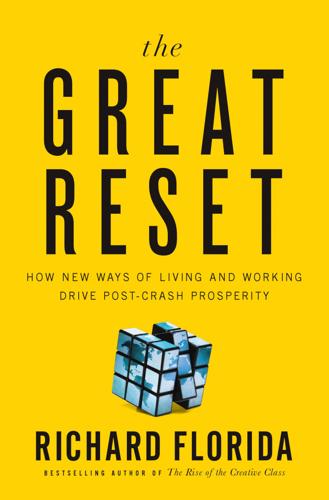
The Great Reset: How the Post-Crash Economy Will Change the Way We Live and Work
by
Richard Florida
Published 22 Apr 2010
He developed his homage to the power of creative destruction against the backdrop of what has turned out to be the most technologically dynamic epoch of the twentieth century.”4 Field’s contention about the innovativeness of the Second Reset is based on detailed and meticulous research. Delving deeply into the statistical record, he tracks trends in innovation and in total factor productivity over the entire twentieth century, and examines in detail the rise of specific new technologies. “Total factor productivity” is a term economists use to describe the output of production not attributable to the amount of inputs used in production, which is to say that it reflects efficiency—how well the available inputs are used in production. Total factor productivity, Field finds, grew fastest during the Depression years, when it increased at a rate of 2.3 percent annually.
…
Regis hotels, 176 Strumsky, Deborah, 64–65 suburbs current growth inward from rural areas, 144–146 current spatial fix and redevelopment of, 145 roots of current economic crisis, 41–45, 129–130 Second Reset and, 33–39 Sunbelt, 36, 99 future of, 99–102 housing growth and decline in, 53, 92–98 Surowiecki, James, 140 Tampa, Florida, 94, 166 Tata, 60, 176 tax revenues, housing bubble and, 93 Taylor, Frederick, 28 Telegraph, 82 Tesla, Nikola, 12, 14 Thoma, Mark, 106 Tokyo, as global financial center, 50, 51, 56, 57, 58–59 Tor-Mon-tawa megaregion, 143 Toronto, Canada banking sector in, 89–90 economic polarization in, 91 high-speed rail service and, 168 resilience of, 87–91 Toronto Dominion Bank, 90 Total factor productivity, 26–27 Toyota Motors, 121, 122, 138–139 Trader Joe’s, 121 transportation infrastructure, in Current Reset decreased use of automobiles, 7–8, 156–163 high-speed rail and, 164–170, 185 principles for, 184–185 transportation infrastructure, in First Reset expansion of cities, 21 infrastructure advances, 15–16 revolution in technology, 10–11 transportation infrastructure, in Second Reset, 34 Truman, Edwin, 59 Tyagi, Amelia Warren, 131 U.N.
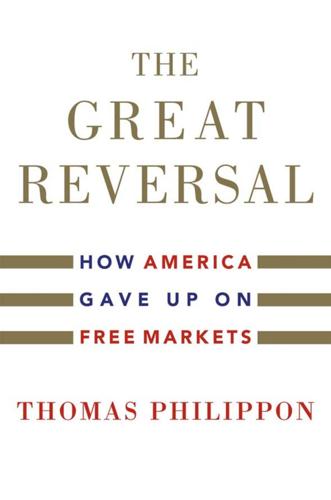
The Great Reversal: How America Gave Up on Free Markets
by
Thomas Philippon
Published 29 Oct 2019
When we say that technological progress has slowed, we are simply saying that, on average, businesses are not as good as they used to be at reducing the unit cost of production or at coming up with higher quality products. To assess the rate of technological progress, economists construct total factor productivity (TFP) growth, which measures the extent to which we can do more with less (or with the same). In other words, it measures how we can expand output for given levels of capital and labor inputs. Economic theory shows that this kind of technological progress is the only sustainable source of growth in the long run.
…
In Chapters 3, 4, and 5 we will review the broad trends in the US economy over the past twenty years, looking at entry and exit of businesses, market shares, mergers, profits, stock buybacks, and investment. * * * a Olivier Blanchard (2003) explains in his discussion of Basu et al. (2003), “fully one-third of the increase in TFP [total factor productivity] growth from the first to the second half of the 1990s in the United States came from the retail trade sector.” A study by the McKinsey Global Institute (Lewis et al., 2001) focused on the factors behind US TFP growth in the 1990s. In general merchandise (representing 16 percent of the TFP growth acceleration), the study found that “Wal-Mart directly and indirectly caused the bulk of the productivity acceleration through ongoing managerial innovation that increased competitive intensity and drove the diffusion of best practice.”
…
Are rising superstar firms the main driver of concentration over the past twenty years, as hypothesized by David Autor, David Dorn, Lawrence Katz, Christina Patterson, and John Van Reenen (2017)? To test this idea, Matias Covarrubias, Germán Gutiérrez, and I (2019) study the relationship between changes in concentration and changes in total factor productivity (TFP) across industries during the 1990s and 2000s. We use our trade-adjusted concentration measures to control for foreign competition and for exports. Box 4.2 and its table summarize our results and discuss the interpretation of the various numbers in statistical models. We find that the relationship between concentration and productivity growth has changed over the past twenty years.

Boom: Bubbles and the End of Stagnation
by
Byrne Hobart
and
Tobias Huber
Published 29 Oct 2024
Even the numbers that look good aren’t as good as they look: There’s more academic publishing than ever, but the impact of the median publication is rapidly declining. We’ve also seen deceleration in technological progress as captured by an important metric: total factor productivity. 12 A variable calculated from economic models, total factor productivity indicates the extent to which growth is a result of technological improvements as opposed to investments in labor and capital. You can try to estimate economic growth by tallying increases in hours worked and capital invested, but these estimates will inevitably have unaccounted remainders.
…
You can try to estimate economic growth by tallying increases in hours worked and capital invested, but these estimates will inevitably have unaccounted remainders. This leftover econometric dark matter must be due to technology of one kind or another, which makes it possible to do more with less either by building new products from old materials or by organizing people more effectively. Growth in US total factor productivity, which averaged almost 2 percent per year from 1920 to 1970, has averaged less than 1 percent per year since then. 13 Based strictly on this measure, the pace of technological improvement has been cut in half. The West has also become more nihilistic. Based on an analysis of the Google Books Ngram corpus, the use of terms related to progress and the future has decreased by about 25 percent since the 1960s, while those related to threats, risks, and worries have become several times more common. 14 Culturally, too, there is a persistent feeling of exhaustion and repetition.
…
To that end, we now turn to an unexpected but highly effective vehicle for enabling just such a Promethean 132 spirit of risk-taking: speculative bubbles. 11 This statement was first articulated in Bruce Gibney’s Founder Fund manifesto but is most often attributed to Peter Thiel. Bruce Gibney, “What Happened to the Future?” Founders Fund, January 1, 2017, https://foundersfund.com/the-future/. 12 Robert M. Solow, “A Contribution to the Theory of Economic Growth,” Quarterly Journal of Economics 70, no. 1 (1956): 65–94. 13 Robert Shackleton, “Total Factor Productivity Growth in Historical Perspective,” Working Paper Series, Congressional Budget Office, Washington, DC, March 2013, https://www.cbo.gov/sites/default/files/113th-congress-2013-2014/workingpaper/44002_TFP_Growth_03-18-2013_1.pdf. 14 John Burn-Murdoch, "Is the West Talking Itself into Decline?

Restarting the Future: How to Fix the Intangible Economy
by
Jonathan Haskel
and
Stian Westlake
Published 4 Apr 2022
The fact that the information and communication technology (ICT) services firms gap has risen may not be surprising, but the gap is pervasive in other industries, too. FIGURE 1.4: Performance Gaps. Note: In panels A and B, the global frontier group of firms is defined by the top 5 percent of companies with the highest total factor productivity levels within each two-digit industry, while all the other firms are identified as laggards. Source: Andrews, Criscuolo, and Gal 2016. At the same time, the tendency for unproductive firms to shrink and productive ones to grow—the phenomenon that economists call business dynamism—has gone through what Ryan Decker and colleagues call “pervasive decline” since 2000.12 Research also shows that fewer new businesses are being set up, with a significant reduction in high-growth entrepreneurship.
…
The US data for 1950–2000 show that US output per capita grew by 2.3 percent per year over that period. The growth in physical capital per capita contributed 0.6 percent per year, and the growth in average skill levels per capita contributed 0.5 percent per year. Everything else, labelled total factor productivity (TFP), which we can think of as the efficiency with which physical capital and human capital are used, contributed 1.1 percent per year. As the row shows, each of these factors made a fairly equal contribution. The final column shows that the growth in human capital or skill per capita was a healthy 0.8 percent over this period, reflecting the expansion in higher education in the United States.
…
We expect that this reduced investment will translate into lower growth in two specific ways. First, we expect that countries that have seen a sharper fall in intangibles will have experienced a worse slowdown, and indeed, the data support this conclusion. Second, we expect the slowdown to manifest itself in decreased total factor productivity (TFP), in which the spillovers from intangible investment—technical breakthroughs that advance an entire industry, new management methods that are widely adopted, new product designs that create whole new categories—show up. And, indeed, the downturn we are experiencing is predominantly one of TFP.

Good Economics for Hard Times: Better Answers to Our Biggest Problems
by
Abhijit V. Banerjee
and
Esther Duflo
Published 12 Nov 2019
Robert Gordon reckons that rising education explains about 14 percent of the increase in labor productivity over the period, and the capital investment that gave workers more and better machines to work with explains a further 19 percent of the increase. The rest of the observed productivity improvement cannot be explained by changes in things economists can measure. To make ourselves feel better, economists have given it its own name: total factor productivity, or TFP. (The famous growth economist Robert Solow defined TFP to be “a measure of our ignorance.”) Growth in total factor productivity is what is left after we have accounted for everything we can measure. It captures the fact that workers with the same education level working with the same machines and inputs (what economists refer to as capital) produce more output today for each hour they work than they did last year.
…
This reflects in part technological progress: computer chips become cheaper and faster, so one secretary can now do in a few hours the work a small team used to do; new alloys are invented; new varieties of wheat that grow faster and require less water are introduced. But total factor productivity also increases when we discover new ways to reduce waste or shrink the time either raw materials or workers are forced to stay idle. Innovations in production methods like chain production or lean manufacturing do that, as does, say, the creation of a good rental market for tractors. What made the few decades before 1970 extraordinary compared to much of history is that total factor productivity increased particularly rapidly. In the United States, TFP growth was four times faster between 1920 and 1970 than between 1890 and 1920.7 In fact, it was this rather than growth in education or capital per worker that gave the later period its special mojo.
…
,” World Economics 5, no. 2 (2004): 131–45. 9 Robert Gordon, The Rise and Fall of American Growth (Princeton, NJ: Princeton University Press, 2016). 10 Annualized TFP growth in the US was 1.89 percent per year between 1920 and 1970 and 0.57 between 1970 and 1995; Robert Gordon, The Rise and Fall of American Growth (Princeton, NJ: Princeton University Press, 2016), 575, figure 17.2. 11 Robert Gordon, The Rise and Fall of American Growth (Princeton, NJ: Princeton University Press, 2016), 575, figure 17.2. Annual TFP growth was 0.40 from 2014 to 2014, even lower than the 0.70 annual TFP growth during the 1973–1994 period and the annual 0.46 TFP growth during the 1890–1920 period. 12 “Total Factor Productivity,” Federal Reserve Bank of San Francisco, accessed June 19, 2019, https://www.frbsf.org/economic-research/indicators-data/total-factor-productivity-tfp/. 13 Robert Gordon and Joel Mokyr, “Boom vs. Doom: Debating the Future of the US Economy,” debate, Chicago Council of Global Affairs, October 31, 2016. 14 Robert Gordon, The Rise and Fall of American Growth (Princeton, NJ: Princeton University Press, 2016), 594–603. 15 Robert Gordon and Joel Mokyr, “Boom vs.

Grand Transitions: How the Modern World Was Made
by
Vaclav Smil
Published 2 Mar 2021
After 1750 it was increasingly used to make coke for smelting iron ore in blast furnaces, and even before Watt’s engines began to sell in larger numbers during the 1780s the fuel supplied more than 80% of Britain’s thermal energy. Tepper and Borowiecki (2015, 231) concluded that the two proximate causes of the shift away from land “were the twofold increase of total factor productivity growth combined with and even greater decline in the economy’s dependence on land from 1780 to 1860.” Total factor productivity (TFP) was an important factor in the British breakout. TFP refers to the share of economic growth that cannot be explained by accounting for labor and capital inputs and that reflects advances and innovations in production techniques.
…
Per capita rates of economic growth declined in every advanced economy and the greatest pullbacks were in Germany (to 1.6%) and Japan (to 2.1%). Crafts’s (1999) retrospective of the 20th-century economic growth attempted to break down its sources in major economies among capital, labor, and total factor productivity. Capital was always the dominant factor in the United Kingdom, in Japan during the first half of the century and again after 1973, and in Germany before World War II. TFP was the leading factor in the United States until 1973 but then it was surpassed by capital, and it dominated the post-1950 growth in Germany until the century’s end.
…
Lancet Public Health 3: e419–28 http://dx.doi.org/10.1016/S2468-2667(18)30135-X Semba, R.D. 2012. The discovery of the vitamins. International Journal for Vitamin and Nutrition Research 82:310–315. Sen, A. 1981. Poverty and Famines: An Essay on Entitlement and Deprivation. Oxford: Oxford University Press. Shackleton, R. 2013. Total Factor Productivity Growth in Historical Perspective. Washington, DC: Congressional Budget Office. Shawe-Taylor, D. and Q. Buvelot. 2015. Masters of the Everyday: Dutch Artists in the Age of Vermeer. London: Royal Collection Trust. Sherlock, R.L. 1922. Man as a Geological Agent: An Account of His Actions on Inanimate Nature.
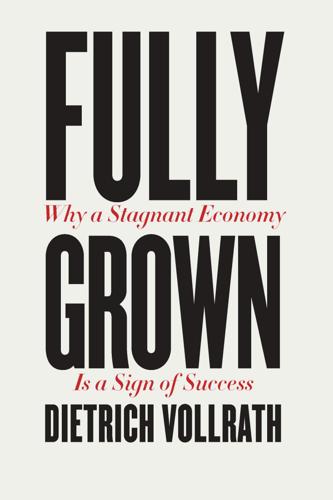
Fully Grown: Why a Stagnant Economy Is a Sign of Success
by
Dietrich Vollrath
Published 6 Jan 2020
What the accounting in chapter 4 showed was that something happened around the turn of the century that led the residual growth rate to fall. But because there is no single economic activity or concept that the residual measures, it isn’t obvious why it fell. Residual growth does have another name that you may be familiar with: productivity growth. Depending on what you read, you might also see it as total factor productivity growth or multifactor productivity growth. Productivity growth—which I’ll stick with from now on given its general usage—is not part of residual growth or an estimate of residual growth. It is residual growth. Residual growth and productivity growth are just synonyms. What I will try to do over the next few chapters is provide some of the main explanations for the fall in productivity growth and share why one of them in particular is a sign of success.
…
Table 7.1 Decomposing productivity growth, by industry Productivity growth, 2000–2015 Value-added share of GDP (%) Industry 1980 1990 2000 2015 Agriculture 0.91 2.19 1.63 0.97 0.98 Mining 3.02 3.22 1.50 1.09 1.84 Manufacturing 1.36 20.63 17.60 15.32 12.20 Utilities –2.12 2.35 2.73 2.03 1.85 Construction –1.70 4.65 4.18 4.55 4.11 Wholesale and retail trade 0.73 13.63 12.70 13.01 12.08 Transportation –0.28 4.29 3.60 3.63 3.35 Accommodation and food service –0.31 2.31 2.58 2.83 2.95 Information and communication 3.03 4.50 5.11 5.77 6.22 Finance and insurance 0.09 4.84 5.89 7.39 7.27 Real estate 0.89 9.99 10.68 10.89 12.13 Professional services 0.27 5.83 7.89 9.60 10.45 Public administration –0.36 13.76 14.06 12.47 12.84 Education 0.36 0.63 0.70 0.85 1.14 Health and social work –0.23 4.10 5.71 5.87 7.30 Arts and entertainment 0.39 0.64 0.83 0.98 1.04 Other services –1.37 2.44 2.62 2.76 2.26 Note: Data is from the KLEMS database. Shares using current price value-added in each noted year were calculated by the author. Annualized productivity growth was calculated using the KLEMS series on value-added total factor productivity. I’ll spare you any more detail, but see the appendix if you’d like to bore yourself with the calculations. What is important for our purposes here is the final answer. Based on the industry-level data from the BEA database that lies behind figure 7.1 and table 7.1, the growth rate of aggregate productivity was 0.4% per year.
…
KLEMS also allows the elasticity of output with respect to physical capital and labor to vary by industry, whereas my aggregate calculation assumes a single elasticity. As noted in the text, this all results in my estimate of a larger growth rate of productivity in absolute terms. One other note is that I am using the value-added TFP (total factor productivity) growth for each industry from KLEMS. This first calculates value-added (gross output minus intermediate input use) growth and then subtracts input growth to find productivity growth. For value-added TFP growth, the proper weights are value-added shares of GDP. An alternative would be to use gross-output TFP growth.

Platform Capitalism
by
Nick Srnicek
Published 22 Dec 2016
Finally, workers have suffered immensely in the wake of the crisis and have been highly vulnerable to exploitative working conditions as a result of their need to earn an income. All this sets the scene for today’s economy. Notes 1. Unless otherwise stated in the text, ‘productivity’ will refer to labour productivity rather than total factor productivity. 2. The following paragraph summarises Robert Brenner’s insights in Brenner, 2007. 3. Braverman, 1999. 4. Piketty, 2014; Gordon, 2000; Glyn, Hughes, Lipietz, and Singh, 1990. 5. In many ways, this balance was the result of the defeat of radical labour and shop floor agitation rather than reflecting the success of the labour movement. 6.
…
On top of this, the widespread turn to austerity is continuing to depress aggregate demand across the world, and the global trends for productivity are in decline. Between 1999 and 2006 labour productivity grew by 2.6 per cent annually, but since the crisis the trend has been downwards to around 2.0 per cent.41 Total factor productivity is even lower, at about zero per cent growth in the past few years – a trend that holds in nearly every major economy.42 In this context – given also the pushing down of short-term and long-term interest rates (into negative territory at points) – it is understandable that surplus capital would seek out returns wherever it can find them.
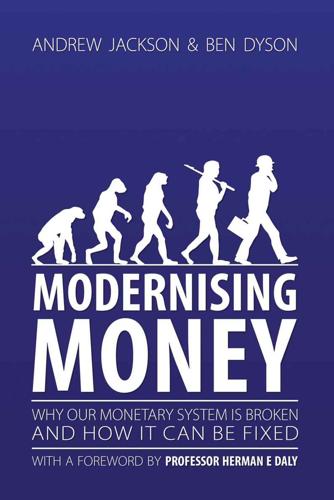
Modernising Money: Why Our Monetary System Is Broken and How It Can Be Fixed
by
Andrew Jackson (economist)
and
Ben Dyson (economist)
Published 15 Nov 2012
For example, for a bakery the quantity of factor inputs would include ingredients, equipment (capital), the kitchen (land) as well as the people (labour) doing the baking. The second factor which contributes to potential output is ‘total factor productivity’ (TFP). TFP is the output in an economy over and above that which is accounted for by the quantity of inputs. Some think of it as the skill of those within the economy in combining inputs, or alternatively the level of technology in the economy. If we return to our example of the baker, then total factor productivity could measure the skill of the person doing the baking. It may also represent an improvement in the technology used by the baker.
…
It may also represent an improvement in the technology used by the baker. Putting the two together, Potential Output (Y*) is dependent on the ‘quantity of factor inputs’ and ‘total factor productivity’ so that: eq. 4.5 Potential output therefore measures the maximum level of output that an economy could achieve if everyone who wanted to work was working as efficiently as they could and every machine was running at full capacity. However, in reality what the economy actually produces will be determined by how much demand there is in the economy for these goods and services. Each year the value of all the goods and services produced within a country are added together giving the economy’s output.
…
As with money creation for consumer spending, this increases the purchasing power in the economy (the MI R portion of MR), but also increases the quantity of goods produced – the productive capacity of the economy. For example, investment includes money spent on research and development, which can lead to the discovery of new technology, inventions, and production techniques that increase the potential output of the economy beyond its current level (i.e. they increase ‘total factor productivity’). Credit creation for investment also allows firms to put in place new technologies or production techniques (i.e. increase the quantity of factor inputs). In a situation where the economy is operating below potential output (less than full employment, however it is defined) credit creation for productive purposes will increase the quantity of goods and services produced in the economy, without bidding up the price of any inputs (as they are currently idle).
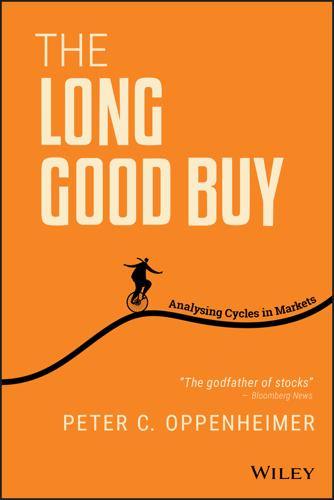
The Long Good Buy: Analysing Cycles in Markets
by
Peter Oppenheimer
Published 3 May 2020
Index 100 year bond 34 1920s, United States 148, 154, 157, 160 1945-1968, post-war boom 129–131 1960s ‘Nifty Fifty’ 114, 130–131, 233, 235 structural bear market 130 1970s Dow Jones 131 equity cycle 56 oil crisis 108 1980s bull markets 131–133 Dow Jones 15–16, 131–132 equity cycle 56–57 Japan 114, 148–149, 155–156, 158, 160–161, 162, 164 technology 12–15 1990s 16–17 Asia crisis 108, 133 equity cycle 57 S&P concentration 114 technology bubble 33, 93–94, 149–150, 156–157, 158–159, 161, 164 2000-2007 equity cycle 57 2007-2009 financial crisis 169–174 emerging markets 171–173 forecasting 19–21 growth vs. value company effects 94–96 impact 169–170 phases 171–174 quantitative easing 173–174, 178–179 sovereign debt 170, 171–173 structural bear market 110, 118–119 A accounting, bubbles 163–165 adjustment speed 74, 89–90 Akerflof, G.A. 23 American Telephone and Telegraph (AT&T) 154, 225, 235–236, 238 Asia crisis, 1998 108, 133 ASPF see Association of Superannuation and Pension Funds asset classes across phases 66–68 contractions and expansions 63–65 cyclical 83–89 defensive 83–89 diversification 42, 45–47, 178–179 growth 83–84, 90–96 and inflation 65–66, 70 levels of yield 74–76 relationship through cycle 68–76 returns across cycle 63–79 speed of adjustment 74 structural shifts 76–79 value 83–84, 90–96 see also bonds; commodities; equities Association of Superannuation and Pension Funds (ASPF) 77 AT&T see American Telephone and Telegraph austerity 239 Austria, 100 year bond 34 B bank margins 214–215 bear markets 49, 99–125 1960s 130 characteristics 100–106, 117–118 cyclical 105, 106–107 deflation 109, 113 duration 100–101, 106–111, 117 employment 121–124 event-driven 105, 107–109 false negatives 119–120 financial crisis 118–119 growth momentum 122–123 indicators 106, 108, 109–110, 119–125 inflation 101–103, 109, 121–122 interest rates 106, 111–113 prior conditions 121–124 private sector financial balance 124 profitability 115–117 recovery 101 risk indicator vs MSCI index 124–125 S&P 500 103–105 structural 105 triggers 101–105, 106, 108, 111 valuations 123 yield curve 122 behavioural factors 5, 22–25 Berlin Wall, fall of 133 Bernanke, B. 133 betas 65, 85 ‘Big Bang’ deregulation 12 Bing 237 Black Monday 16, 102, 148 Black Wednesday 16–17 ‘bond-like’ equities 96 bonds, 100 year 34 bond yields across phases 66–68, 72–76 current cycle 95–96, 191–193, 201–220 cyclical vs. defensive companies 87–88 and demographics 215–217 and equity valuations 72–76, 206–208 and growth companies 92–94 historical 43, 202 and implied growth 210–215 and inflation 65, 70 quantitative easing 173–174, 202–205 and risk asset demand 217–220 S&P 500 correlation 72–73 speed of adjustment 74, 89–90 ultra-low 201–220 and value companies 92–94 vs. dividends 78–79 vs. equities 43–45, 68–76, 78–79 Bretton Woods monetary system 102, 130–131 broadcast radio 154, 225 Bubble Act 147, 157 bubbles 143–165 1920s US 148, 154, 157, 160 1980s Japan 114, 148–149, 155–156, 158, 160–161, 162, 164 accounting 163–165 canal mania 152 characteristics 145–146 deregulation 157–159 easy credit 160–161 famous 145 financial innovation 158–159 government-debt-for-equity swaps 151–152 Mississippi Company 147, 151 ‘new eras’ 150–157 personal computers 155 psychology 144–145 radio manufacturing 154 railways 148, 152–154, 157, 160, 163 Shanghai composite stock price index 156 South Sea Company 147, 151, 153 structural bear markets 113 sub-prime mortgages 70, 102, 118, 133, 145, 159 technology, 1990s 33, 93–94, 149–150, 156–157, 158–159, 161, 164 tulip mania 146–147 valuations 161–162 bull markets 49, 127–142 characteristics 127–141 composition 138 cyclical 134–136 disinflation 131–133 duration 136–138, 139–141 equity performance 135–136 Great Moderation 133–134, 187–189 non-trending 138–141 post-war boom 129–131 quantitative easing 134 secular 127–134 United States 136 C canal mania 152 CAPE see cyclically adjusted price-to-earnings ratio capital investment, Juglar cycle 3 CDO see collateralised debt obligations characteristics bear markets 100–109, 111, 117–118 bubbles 145–146 bull markets 127–141 cyclical bear markets 106–107 event-driven bear markets 108–109 structural bear markets 111 China 15, 156 Cold War 14–15, 133 collateralised debt obligations (CDO) 159 commodities across phases 66–68 Kitchin cycle 3 composition of bull markets 138 concentration structural bear markets 115 and technology 238–240 contractions asset performance 63–65 mini cycles 60 see also recessions Cooper, M. 162 corporate debt 65, 110, 114, 160–161 corporate profitability bear markets 107, 115–117 current equity cycle 185–186 monetary policy 239 credit crunch 78–79, 170, 171 crowds, psychology of 21–22, 144–145 cult of the equity 77–78 current equity cycle 57–58, 167–240 bank profitability 214–215 bond yields 191–193 demographic shifts 215–217 drivers 179–180 earnings per share 195–196 employment and unemployment 183–185 equity valuations 206–208 ‘first mile problem’ 226–227 future expectations 246–247 global relative performance 193–196 growth momentum 174–178, 182–183, 227–231 growth and value companies 190–196, 239–240 implied growth 210–215 inflation 180–182, 203–205 interest rates 180–182, 239–240 Japan, lessons from 196–200 lessons from 244–245 market and economy incongruence 174–178 monetary policy 178–179, 201–205 opportunities 230–231 profitability 185–186 quantitative easing 202–205 returns 174–179 risk asset demand 217–220 structural changes 76–79, 93–96, 169–200 technology 189–190, 221–241 term premium collapse 204–205 ultra-low bond yields 201–220 valuations 233–235 volatility 187–189 cycles 1970s 56 asset returns 63–79 cyclical vs. defensive companies 85–89 equities 49–62 growth vs. value companies 90–96 investment styles 81–96 long-term returns 29–47 riding 11–27 sectors 83–85 valuations 53 cyclical bear markets 105, 106–107, 117, 118 vs. event-driven 109 cyclical bull markets 134–136 cyclical companies bond yields 193 inflation 88 sectors 83–84 vs. defensive 85–89 cyclical growth 83–84 cyclically adjusted price-to-earnings ratio (CAPE) 37–38, 44–45 cyclical value 83–84 D DDM see discounted dividend model debt levels bubbles 160–161 structural bear markets 110, 114 decarbonization 13 defensive companies 63–65 bond yields 193 inflation 88 Japan 198 sectors 83–84 vs. cyclical 85–89 defensive growth 83–84 defensive value 83–84 deflation bear markets 109, 113 Volker 102, 131 delivery solutions 226–227 demographics and zero bond yields 215–217 deregulation 12, 132–133, 157–159 derivative markets 158–159 design of policy 25–26 despair phase 50–52, 53, 55–56, 60, 66–68 cyclical vs. defensive companies 86, 88 growth vs. value companies 92 Dice, C. 161 Dimitrov, O. 162 discounted dividend model (DDM) 36, 69 discount rate 68 disinflation 131–133 disruption 1980s 12–15 current equity cycle 189–190, 221–241 electricity 226 historical parallels 222–227 printing press 223–224 railway infrastructure 224–227 telecoms 225–226 divergence, and technology 238–240 diversification 42, 45–47, 178–179 dividends asset yields 38–41, 69 reinvestment 38–40 value of future streams 209 vs. bonds 78–79 Dodd, D. 163, 164 domain registrations 12–13 dominance of technology 231–233 dotcoms 12–13, 33, 93–94, 102, 161, 237 Dow Jones 1970s 131 1980s 15–16, 131 Black Monday 16, 102, 148 Draghi, M. 17, 173 drivers of bull markets 138 current equity cycle 179–180 duration bear markets 100–101, 106–111, 117 bull markets 135–138, 139–141 cyclical bear markets 106–107, 117, 118 cyclical bull markets 135–136 dominance of technology 231–233 event-driven bear markets 108–109, 117–118 non-trending bull markets 139–141 structural bear markets 109–111, 117 term premia 204–205 DVDs 227 E earnings per share (EPS) bear markets 115–117 historical 189 since pre-financial crisis peak 195–196, 209–210 easy credit, and bubbles 160–161 ECB see European Central Bank Economic Recovery Act, 1981 132 efficient market hypothesis 4 electricity 226 email 13 employment 121–124, 183–185 Enron 164 environmental issues 13 EPS see earnings per share equities across phases 66–68 ‘bond-like’ 96 and bond yields 72–73, 74–76, 206–208 bull market performance 135–136 CAPE 37–38, 44–45 dividends 38–41, 69, 78–79, 209 and inflation 65–66, 70 mini/high-frequency cycles 58–61 narrowing and structural bear markets 114–115 overextension 36–37 phases of investment 50–58 quantitative easing 173–174, 178–179 S&P 500 historical performance 42 valuations and future returns 43–45 vs. bonds 43–45, 68–76, 78–79 equity cycle 49–62 1970s 56 1980s 56–57 1990s 57 2000-2007 57 current 57–58, 76–79 historical periods 56–58 length 49 mini/high-frequency 58–61 phases 50–56 structural shifts 76–79 equity risk premium (ERP) 35–38, 69–72, 210 ERM see exchange rate mechanism ERP see equ ity risk premium ESM see European stability mechanism Europe dividends 39–40 exchange rate mechanism 16–17, 111 Maastricht Treaty 17 market narrowing in 1990s 115 privatisation 132 quantitative easing 17, 204–205 sovereign debt crisis 170, 171–173 European Central Bank (ECB) 17, 171, 173 European Recovery Plan 129–131 European stability mechanism (ESM) 173 event-driven bear markets 105, 107–109, 117–118 vs. cyclical 109 excess see bubbles exchange rate mechanism (ERM) 16–17, 111 exogenous shocks 108 expansions, asset performance 63–65 F false negatives, bear markets 119–120 fat and flat markets 128, 139 features see characteristics Federal Reserve 16, 102, 131, 134, 150–151, 157, 203 financial crisis, 2007–2009 169–174 forecasting 19–21 growth vs. value company effects 94–96 impact 169–170 structural bear market 110, 118–119 financial innovation 158–159 ‘first mile problem’ 226–227 Fish, M. 19 fixed costs 84–85, 173–174 fixed income assets 35, 65, 69–70, 205 flat markets 138–141 see also non-trending bull markets forecasting 2008 financial crisis 19–21 bear markets 106, 108, 109–110, 119–125 behavioural aspects 22–25 difficulties of 18–22 future growth 211–212 neuroeconomics 24–25 and policy setting 25–26 recessions 20–21 and sentiment 21–25 short-term 17–18 weather 18–19 France Mississippi Company 147, 151 privatisation 132 Fukuyama, F. 15 future expectations 246–247 G Galbraith, J.K. 160 GATT see General Agreement on Tariffs and Trade General Agreement on Tariffs and Trade (GATT) 129 Germany Bund yield 207 fall of Berlin Wall 133 wage inflation 185 Glasnost 14 Glass-Steagall Act, 1933 132 global growth 182–183 globalisation 14–16 global relative performance 193–196 global sales growth 212 global technology bubble 33, 93–94, 149–150, 156–157, 158–159, 161, 164 Goetzmann, F. 151 ‘Golden Age of Capitalism’ 129–131 Gold Standard 130 see also Bretton Woods monetary system Goobey, G.R. 77 Google 237 Gorbachev, M. 14 Gordon Growth model 209 government-debt-for-equity swaps 151–152 Graham, B. 161, 163, 164 Great Britain South Sea Company 147, 151, 153 see also United Kingdom Great Depression 4 Great Moderation 133–134, 187–189 Greenspan, A. 16, 113, 150–151 gross domestic product (GDP) cyclical vs. defensive companies 87 labour share of 185, 238–239 phases of cycle 52–53 profit share of, US. 186 growth bear markets 122–123 current equity cycle 174–178, 182–183, 227–231 technology impacts 227–231 and zero bond yields 208–210, 210–215 growth companies bond yields 92–94, 191–193 current cycle 190–196 definition 90–91 since financial crisis 94–96 interest rates 92–94 outperformance 239–240 sectors 83–84 vs. value 90–96 growth phase 50–52, 54–56, 67–68 cyclical vs. defensive companies 86 growth vs. value companies 92 Gulf war 102 H herding 21–22, 144–145 high-frequency cycles 58–61 historical performance 10 year bonds, US 43 bonds 43, 202 equities cycles 49, 56–58 S&P 500 38–39, 42 trends 29–31 holding periods 31–34 Holland, tulip mania 146–147 hope phase 50–52, 53–54, 55–56, 66–67 cyclical vs. defensive companies 86 growth vs. value companies 92 housing bubble, US 70, 102, 118, 133, 145, 159 Hudson, G. 163 I IBM 13, 155, 236 IMAP see Internet Message Access Protocol IMF see International Monetary Fund impacts of diversification 42, 45–47 financial crisis, 2007-2009 169–170 technology on current cycle 221–241 ultra-low bond yields 201–220 Imperial Tobacco pension fund 77 implied growth 210–215 income, Kuznets cycle 3 indicators bear markets 106, 108, 109–110, 119–125 cyclical bear markets 106 event-driven bear markets 108 structural bear markets 109–110 industrial revolution 224–226 industry leadership, S&P 500 232–233, 237–238 inflation asset performance 65–66, 70 bear markets 101–103, 109, 121–122 current equity cycle 180–182, 203–205 cyclicals 88 Volker 102, 131 Institute of Supply Management index (ISM) 59–61 bear markets 123 cyclical vs. defensive companies 86–87 interest rates bear markets 106, 111–113 current equity cycle 180–182, 239–240 growth vs. value companies 92–94 structural bear markets 111–113 and yield 69, 74–76 International Monetary Fund (IMF) 129 internet 12–13, 225–227 search 237 see also dotcoms Internet Message Access Protocol (IMAP) 13 inventories 84–85 Kitchin cycle 3 investment, Juglar cycle 3 investment cycle bear markets 122–123 current 57–58, 76–79 historical periods 56–58 lengths 49 mini/high-frequency 58–61 phases 50–56 structural shifts 76–79 see also cycles ISM see Institute of Supply Management index J Japan bubbles 114, 148–149, 155–156, 158, 160–161, 162, 164 defensive companies 198 dividends 39–40 lessons from 196–200 John Crooke and Company 160 Juglar cycle 3 K Kahneman, D. 22–23 Kennedy Slide bear market 102 Keynes, J.M. 22 Kindleberger, C.P. 22 Kitchin cycle 3 Kondratiev cycle 3 Kuznets cycle 3 L labour share of GDP 185, 238–239 land and property bubble, Japan 114, 148–149, 155–156, 158, 160–161, 162, 164 laptop computers 13 largest companies S&P 500 237–238 technology 234–237 light touch regulation 157–159 see also deregulation Live Aid 13–14 Loewenstein, G. 21–22 long-term returns 29–47 M Maastricht Treaty 17 Mackay, C. 21 market forecasts short-term 17–18 see also forecasting market narrowing structural bear markets 114–115 and technology 238–240 markets current equity cycle 174–178 psychology of 21–25, 144–145 see also bear markets; bubbles; bull markets market timing 41–43 market value of technology companies 234, 235–238 Marks, H. 6–7 Marshall Plan 129–131 MBS see mortgage-backed securities Microsoft 12, 236–237 mini cycles 58–61 Mississippi Company 147, 151 monetary policy 157–159, 178–179, 201–205, 239 austerity 239 European Central Bank 17, 171, 173 Federal Reserve 16, 102, 131, 134, 150–151, 157, 203 quantitative easing 17, 70–71, 119, 133–134, 173–174, 178–179, 202–205 Montreal Protocol 13 mortgage-backed securities (MBS) 159 MSCI indices 91 N narrow equity markets 114–115, 238–240 NASDAQ 149–150, 161 negative bond yields 201–220 demographics 215–217 and equity valuations 206–208 and growth 208–210 implied growth 210–215 monetary policy 201–205 quantitative easing 202–205 risk asset demand 217–220 neuroeconomics 24–25 ‘new eras’ 113–114, 150–157 ‘Nifty Fifty’ 114, 233 non-trending bull markets 138–141 nudges 26 O oil 108, 226 opportunities, technology 230–231 optimism phase 50–52, 54–56, 67–68 cyclical vs. defensive companies 86 growth vs. value companies 91–92 output gaps 4 Outright Monetary Transactions (OMT) 171, 173 overextension 36–37 ozone layer 13 P pension funds 77, 218–219 Perestroika 14 Perez, C. 159 performance bull markets 134–136 current equity cycle 174–179 and cycles 53–56 diversification impacts 42, 45–47 dividends 38–41 equities vs. bonds 43–45 factors 41–45 historical trends 29–31 holding periods 31–34 interest rates 69, 74–76 long-term 29–47 market timing 41–43 risks and rewards 35–38 valuations 43–45 volatility 30–31 personal computing introduction 12–13, 155 phases 2007-2009 financial crisis 171–174 asset classes 66–68 bear markets 123 cyclical vs. defensive companies 86 of equities cycle 50–56 growth vs. value companies 91–92 Phillips curve 182 Plaza Accord, 1985 148–149, 158 PMI see purchasing managers’ index policy, design of 25–26 population decline 216 post-financial crisis see current equity cycle post-war boom 129–131 prediction see forecasting price-to-earnings ratio (P/E) 53–56 printing press 223–224 prior conditions to bear markets 121–124 private sector debt 65, 110, 114, 160–161 private sector financial balance 124 privatisation 132 productivity growth 227–230 profit labour share of 185, 238–239 share of GDP, US. 186 profitability banks 214–215 bear markets 107, 115–117 current equity cycle 185–186 property and land bubble, Japan 114, 148–149, 155–156, 158, 160–161, 162, 164 psychology bubbles 144–145 of markets 21–25 policy setting 25–26 public ownership 132 purchasing managers' index (PMI) 59–61, 86–87, 89–90 Q QE see quantitative easing Qualcom 149–150 quality companies 193 quantitative easing (QE) asset returns 70–71, 119, 178–179 bond yields 173–174, 202–205 start of 17, 133–134, 171 United Kingdom 17, 204–205 United States 134, 171, 202–204 R radio, expansion of 154, 225 Radio Corporation of America (RCA) 154 railways bubbles UK 148, 152–153, 157, 163 US 153–154, 160 infrastructure development 224–227 Rau, P. 162 RCA see Radio Corporation of America Reagan, R. 14, 131–132 real assets 68 real estate bubble, US 70, 102, 118, 133, 145, 159 recessions bear markets 101–103 current equity cycle 174–178 forecasting 20–21 recovery bear markets 101 current equity cycle 174–178 reinvestment of dividends 38–40 return on equity (ROE) 43–45 returns bull markets 134–136 current equity cycle 174–179 cycles 53–56 diversification impacts 42, 45–47 dividends 38–41 equities vs. bonds 43–45 factors 41–45 historical trends 29–31 holding periods 31–34 interest rates 69, 74–76 long-term 29–47 market timing 41–43 risks and rewards 35–38 valuations 43–45 volatility 30–31 reverse yield gap 77 risk assets, demand for 217–220 risk-free interest rate 68 risk indicators bear markets 119–125 event-driven bear markets 108 structural bear markets 110–111, 113–114 risk premia equity 35–38, 69 neuroeconomics 25 term premia 204–205 ROE see return on equity Rouwenhorst, G. 151 Russian debt default, 1997 108 S S&P 500 bear markets 103–105 and bond yields 72–73 concentration in 1990s 115 dividends 38–39 historical performance 38–39, 42 industry leadership 232–233, 237–238 and ISM 60 largest companies 237–238 US Treasury yields 206 sales growth 212 savings, current equity cycle 182 Schumpeter, J. 150 search companies 237 ‘search for yield’ 217–220 secondary-market prices 229–230 sectors across the cycle 83–85 dominance 231–233 secular bull market 127–134 disinflation 131–133 Great Moderation 133–134, 187–189 post-war boom 129–131 secular stagnation hypothesis 181 sentiment 5, 21–25 see also bubbles Shanghai composite stock price index 156 Shiller, R.J. 4–5, 23 short-term market forecasts 17–18 skinny and flat markets 139–140 smartphones 226, 229–230 Solow, R. 229 South Sea Company 147, 151, 153 sovereign debt crisis 170, 171–173 Soviet Union 14–15, 133 speed of adjustment 74, 89–90, 122–123 Standard Oil 235 structural bear markets 105, 109–115 1960s 130 bubbles 113 debt levels 110, 114 deflation 113 duration 109–111, 117 financial crisis, 2007 118–119 interest rates 111–113 narrow equity markets 114–115 ‘new eras’ 113–114 risk indicators 110–111, 113–114 triggers 111 volatility 105, 115 structural changes 6 1980s 12–15 current equity cycle 76–79, 93–96, 169–200 sub-prime mortgage bubble 70, 102, 118, 133, 145, 159 Summers, L. 181 Sunstein, C.R. 26 ‘super cycle’ secular bull market 127–134 see also secular bull market T technology 1920s America 154 bubble in 1990s 33, 93–94, 149–150, 156–157, 158–159, 161, 164 current equity cycle 189–190, 221–241 and disruption in 1980s 12–15 dominance 231–233 and growth 227–231 historical parallels 222–227 industrial revolution 224–226 Kondratiev cycle 3 largest companies 234–237 market value 234, 235–238 opportunities 230–231 personal computers 12–13, 155 printing press 223–224 railway bubbles 148, 152–154, 157, 160, 163 railway infrastructure 224–227 and widening gaps 238–240 telecommunications 13, 154, 225, 235–236, 238 telegrams 225 term premium collapse 204–205 TFP see total factor productivity growth Thaler, R.H. 26 Thatcher, M. 14, 132 Tokkin accounts 158 ‘too-big-to-fail’ 133 total factor productivity (TFP) growth 238–240 triggers bear markets 101–105, 106, 108, 111 cyclical bear markets 106 event-driven bear markets 108 structural bear markets 111 tulip mania 146–147 Tversky, A. 22–23 U ultra-low bond yields 201–220 demographics 215–217 and equity valuations 206–208 and growth 208–210 implied growth 210–215 monetary policy 201–205 quantitative easing 202–205 risk asset demand 217–220 UNCTAD see United Nations Conference on Trade and Development unemployment 121–124, 183–185 unexpected shocks 108 United Kingdom (UK) Black Wednesday 16–17 bond yields, historical 202 canal mania 152 deregulation 132 exchange rate mechanism 16–17, 111 privatisation 132 quantitative easing 204–205 railway bubble 148, 152–153, 157, 163 South Sea Company 147, 151, 153 United Nations Conference on Trade and Development (UNCTAD) 129 United States (US) 10 year bond returns 43 Black Monday 16, 102, 148 bull markets 136 credit crunch 78–79, 170, 171 disinflation 132 dividends 38–39 Dow Jones 15–16, 131 equities in current cycle 207–208 housing bubble 70, 102, 118, 133, 145, 159 labour share of GDP 185, 238–239 market narrowing 114 NASDAQ 149–150, 161 ‘Nifty Fifty’ 114, 130–131, 233, 235 post-war boom 129–131 profit share of GDP 186 quantitative easing 133–134, 171, 202–204 radio manufacturing 154, 225 railway bubble 153–154, 160 stock market boom, 1920s 148, 154, 157, 160 vs.
…
Some academic studies have emphasised the role of capital accumulation and capital-augmenting technical change as determinants of the evolution of the labour share (e.g. Bentolila and Saint-Paul 2003; Hutchinson and Persyn 2012). According to OECD (Multifactor productivity 2012) estimates, total factor productivity (TFP) growth and capital deepening – the key drivers of economic growth – accounted for most of the average within-industry decline in the labour share in OECD countries between 1990 and 2007. This shift is part of a process that has emerged over a long period of time. The labour share of GDP in the US, for example, has been trending downwards since the Second World War, but it has taken a particularly sharp fall since the financial crisis.18 Of course, technology is not the only reason for this.

Human Frontiers: The Future of Big Ideas in an Age of Small Thinking
by
Michael Bhaskar
Published 2 Nov 2021
E. 34 Sheeran, Ed 107 Shelley, Mary 159 ships 66, 67–8 Shklovsky, Joseph 306 Shockley, Bill 182 short-termism 18, 148, 191–2, 194 Siemens 265, 288 Siemens-Martin process 80 Silicon Valley 15, 41, 96, 159, 182, 187, 220, 270, 279–80, 295, 312, 335 silkworm plague 50 Singer, Isaac 11 singularity 238 smallpox 47, 53, 335 Smil, Vaclav 80, 111 Smith, Adam 26, 34, 35, 87, 299 Smolin, Lee 13, 121, 203 social science 124 Socrates 108, 109, 216, 291 software developers 275 Solow, Robert 88 Sony 184 South Korea 262, 264, 275, 279 Southwood, Ben 82 Soviet Union 138, 144, 315 see also Russia space exploration 70–2, 131, 165, 218, 233, 239, 263, 265–6, 295–6, 315, 316, 338, 341, 342 SpaceX 131, 296, 318 Spanish flu pandemic 54 specialisation 156, 157–8, 160–2 speciation 30 Spengler, Oswald 187–8, 190 spontaneous generation 49 Spotify 86 stagnation 180–222, 283–4, 302, 308, 310–11, 314, 336 and breakthrough organisations 298 diagnosis 126 secular 95 see also Great Stagnation Debate stagnationists 14 Stalin, Joseph 114 Stanford, Leland 67 status quo 206 steam engine 26, 34, 38–9, 42, 67–8, 92, 233, 239–40, 253–4, 317, 335 steel 80 Stein, Gertrude 101 Stephenson, George 26, 219 Stephenson, Neal 98 Stockton and Darlington railway 67 Storrs Hall, J. 219, 222 Strassman, Fritz 144 Stravinsky, Igor 99–101, 103, 105, 132 string theory 120 Summers, Lawrence 94–5 Sun Tzu 259 superintelligence 238, 250, 341–2 superminds (collective brains) 299, 300–1 superorganisms 300 superposition 240 supranational institutions 332 sustainable living technologies 221 syphilis 52 Syracuse, Sicily 1–4 T-cells 58 team size 157, 161 tech companies 214 technological change 280–1, 338 and economic growth 88 illusion of 85 slowdown 84 technology 25–6 boosting growth 82, 88 endogenous growth 88–9, 94 see also new technology telescopes 231–2, 239, 263 television 75 Terror, the 137 Tesla, Nikola 286, 287–8, 290 Texas Instruments 184 Textual Revolution 252 TFP see Total Factor Productivity ‘theory of everything’ 122, 174, 330, 341 Thiel, Peter 13, 31, 84, 98 thinking 247–8 Third Millennium instruments 239–54 Thomas, Dorothy 39 threshing machines 11 Time (magazine) 59 Tinbergen, Nikolaas 124 Tito, Josip Broz 188 tokamak 145–6 Tolkien, J.R.R. 124, 236 Total Factor Productivity (TFP) 82, 88 trade 23, 24, 26, 177, 213 transhumanism 339 transistors 55, 92, 180–3, 245, 299–300, 338 transportation 62–73, 98 tribalism 210 Trotsky, Leon 188 Trump, Donald 208, 211 trust, failure of 208–9, 211–12 tuberculosis 53 Tuchman, Barbara 43 Tull, Jethro 25 Turing, Alan 77, 227, 246 Tutankhamun 153 Uber 205 uncertainty 302–336 radical 45 ‘unicorns’ 96, 270, 272 Union Pacific and Central Pacific 67 United Kingdom 96, 199, 214, 257, 262–3, 279, 326, 332 and life expectancy 54–5 and medicine 56 and transport 67–8 see also Britain United Nations (UN) 138, 271 Charter 133 Economic and Social Council 133 General Assembly 132–3, 135 Human Rights Commission 133–4 Sustainable Development Goals 318 World Technological and Existential Risk Council 313 United States 11, 82, 96–7, 103–4, 108, 111, 127, 134, 138, 209, 211–13, 216, 252, 255–8, 262, 265–6, 268–73, 275, 279–80, 283, 289, 292, 312, 314–17, 319, 332 and business start-ups 95–6 and the economy 91–2 and flight 62–4 and GDP per capita 82 and lawyers 205–6 and life expectancy 54 and medicine 54, 59–60 and nuclear power 146–7 and oil production 80 patent record 28, 32–3, 156, 195–6, 333 and transport 67–8 and the university system 198, 203 War Department 64 Universal Declaration of Human Rights 132–6, 138–40 universe, size of 170 university sector 127, 198–204, 206, 277–8, 291–2, 315–16, 327–8 Upanishads 36 Uraniborg 292 uranium 144 Uranus 26 urbanisation 270–2 utopias 308–10 vaccinations 46–9, 51, 125, 233, 245, 315, 335, 338 Van Reenen, John 91, 93 vellum 230 Velvet Underground 104 venture capital (VC) 195, 249, 280, 297, 331 Venus 265–6 Vesalius 291 Vienna 103, 188–90, 216, 217, 295 Vienna Circle 189 Vijg, Jan 79, 97 Vince, Gaia 300 virtual reality (VR) 241–2, 251–2, 307, 338, 339 Volta, Alessandro 26 Voltaire 25, 110 volume, measurement 1–2, 5 von Neumann, John 227, 246 Wales, Jimmy 326 Wallace-Wells, David 220 war 41, 43, 50, 284–5, 296, 314–17 see also specific wars Warhol, Andy 152, 295 Warsh, David 87 water frame 25 water supplies 53 Watson, James 119 Watson, Peter 109 Watson, Thomas, Jr 184 Watt, James 26, 330 wealth 151–2 weather, extreme 220 Webb, Michael 91, 93 Wedgwood, Josiah 34 Weiman, Carl 326–7 Weiner, Anthony J. 129 Wells, H.G. 45, 300 Westinghouse, George 33, 288 Whitehead, A.N. 304 Wiener, Anthony J. 129 Year 2000, The 9, 12, 13 Wikipedia 79, 97, 128, 297, 321 Wilson, E.O. 325 Wired (magazine) 12 Witten, Edward 120 Wittgenstein, Ludwig 103–4, 109, 173, 188 Wolf, Martin 84 Wollstonecraft, Mary 137 women 269–70 Woolf, Virginia 103 Woolley, Leonard 153 Wootton, David 232 Word2vec 235 World Bank 84, 279 World Economic Forum 86 Wright, Orville 36, 62–5, 68, 71, 139, 219, 295, 335 Wright, Wilbur 36, 62–5, 68, 71, 139, 219, 295, 335 X-10 Graphite Reactor 143–4 xenotransplantation 245 Xerox 184 Xerox PARC 180, 186, 296 Xi Jinping 284 Young, Thomas 154–6 Young Turks 182–3 Zionism 188 Zola, Émile 110 Zoom 86 Zoroastrianism 108 Zuckerberg, Mark 159 Zweig, Stefan 188, 189 Michael Bhaskar is a writer, researcher and digital publisher.
…
This seems strange, to say the least, in a time when tech and economic understanding should be spurring growth on. Productivity figures, a useful shorthand for the delivery of new ideas within an economy, are also significant. Productivity growth has been much slower over the 3IR than before. Since 1970, Total Factor Productivity (TFP), the key measure of how technology boosts growth, has grown at only a third of the pace achieved between 1920 and 1970, leaving us fully 73 per cent behind the postwar trend.17 In the words of Tyler Cowen and Ben Southwood: ‘TFP growth probably is the best contender for how to measure scientific progress.
…
Solow convincingly showed how times of fast technological change delivered economic growth. But this technology wasn't part of the system as such; it was ‘exogenous’, an external, largely unexplained and autonomous process. And yet the sums showed it accounted for the vast majority of growth. Increases in output explained by technology were known as Total Factor Productivity, the same measure that has been waning in our own age. Clearly there was room for further elaboration. In the 1980s a young economist called Paul Romer made decisive advances on Solow, offering a new understanding of growth and helping solve a great riddle of economics.38 Romer's insight was that ideas were at the heart of economic growth.
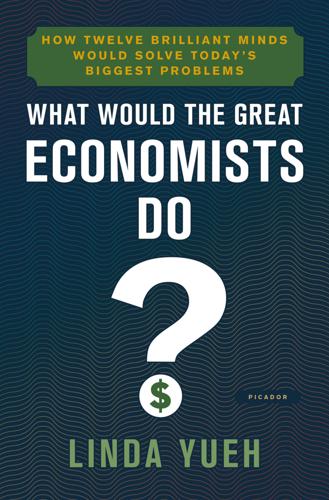
What Would the Great Economists Do?: How Twelve Brilliant Minds Would Solve Today's Biggest Problems
by
Linda Yueh
Published 4 Jun 2018
Diminishing returns happen when a worker is given more than, say, two computers; that worker won’t produce as much with the third computer as compared with the first two unless there is better software that allows computing to be done without the person using it all the time. Technological progress allows the existing inputs of workers and capital to be used more efficiently. An increase in output due to technology is referred to as total factor productivity (TFP) in economic growth models. Physical capital as well as human capital – the skills and education of workers – are central to this model. It’s especially pressing for rich countries, where the working-age population is ageing or even shrinking and having better-skilled workers is even more important.
…
Of course, it also captures anything else not related to inputs of labour and investment, so temporary rises in government spending and monetary easing also get included. It means that some, but not all, of what is captured in the Solow residual is the productivity advancing technology needed to sustain economic growth over the longer term. This is the TFP (total factor productivity) mentioned earlier. Across countries, there is a clear association between periods of high output growth and significant technological progress. Developed nations all grew well between 1950 and 1973, and then slowed together during 1974–87. There seems to be a connection with the adoption of similar technologies.
…
joint-stock companies Jones, Homer Journal of Economic Perspectives Journal of Political Economy JPMorgan Juncker Plan Kahn, Richard Kant, Immanuel Keynes, John Maynard and the backlash against globalization and the Bloomsbury Group and Bretton Woods System and budget deficits counter-cyclical policies and crowding out on depression/recession The Economic Consequences of the Peace fiscal activism and Friedman The General Theory of Employment, Interest and Money and government spending on government’s role in economy and Hayek and investors Keynesian revolution legacy life and times of and Marshall and Niemeyer and paradox of thrift at Paris Peace Conference Prices and Production and public investment and Robbins Robinson and Keynes/Keynesian economics and Schumpeter and ‘socializing investment’ A Tract on Monetary Reform and the Treasury A Treatise on Money wealth Keynes, John Neville Khrushchev, Nikita Knight, Frank Kodak Korea North South Krugman, Paul Krupp Kuznets, Simon labour force growth labour productivity and work incentive laissez-faire landowners Lassalle, Ferdinand Latin America currency crisis (1981–82) see also specific countries League of Nations Lehman Brothers Lenin, Vladimir Leontief, Wassily Lewis, Arthur Lewis, Barbara (‘Bobby’) Life Extension Institute Linda for Congress BBC documentary London London School of Economics and Political Science London Stock Exchange Long Depression (1880s) Lopokova, Lydia Louis XIV LSE see London School of Economics and Political Science Lucas, Jr, Robert Ma, Jack (Ma Yun) Maastricht Treaty macroprudential policy see also central banks; financial stability Malaysia Malthus, Thomas Manchester Mandela, Nelson manufacturing additive (3D printing) automation in China and deindustrialization GDP contribution in UK German high-tech and industrialization see also industrialization Japan ‘manu-services’ ‘March of the Makers’ mass-manufactured goods and national statistics reshoring rolling back deindustrialization process and Smith trade patterns changed by advanced manufacturing US Mao Zedong Maoism ‘March of the Makers’ marginal utility analysis marginalism market forces/economy ‘Big Bang’ (1986) competition see competition and economic equilibrium see economic equilibrium emerging economies see emerging economies Hayek and the supremacy of market forces ‘invisible hand’ and laissez-faire and Marx 4 self-righting markets supply and demand see supply and demand Marshall, Alfred on approach to economics and the backlash against globalization and the Cambridge School and decentralization Economics of Industry and education’s role in reducing inequality and inequality and Keynes and laissez-faire legacy life and times of marginal utility analysis and Marx and poverty Principles of Economics and utility theory Marshall, Mary, née Paley Marx, Heinrich Marx, Henriette, née Pressburg Marx, Jenny, née von Westphalen Marx, Karl and agriculture and the backlash against globalization Capital and capitalism and China and class Communist Manifesto (with Engels) communist theories A Contribution to the Critique of Political Economy doctoral thesis The Eighteenth Brumaire of Louis Bonaparte and Engels journalism life and times of and Marshall and rate of profit and Ricardo and Russia on service sector workers surplus value theory and the Young Hegelians Marx, Laura Marx, Louise Marxism and the Austrian School and unemployment see also Marx, Karl Mason, Edward mathematical economics Mauritius May, Theresa Meade, James median income Menger, Carl mercantilist policies see also Corn Laws Merkel, Angela Mexico middle class China and economic growth and economic inequality and European revolutionaries income and industrialization and Keynes and Heinrich Marx as proportion of world population and Schumpeter social resentment US Mill, James Mill, John Stuart On Liberty Principles of Political Economy Minsky, Hyman Mises, Ludwig von Mitchell, Wesley mobile phones/smartphones monetarism see also Friedman, Milton monetary policy and Friedman tools see also quantitative easing (QE) see also central banks monopolies and Marx natural and Robinson and Schumpeter and Smith and Sraffa monopsony Mont Pelerin Society Morgenthau, Henry mortgage-backed securities (MBS) mortgage lending and the 2008 financial crisis sub-prime Myanmar Myrdal, Gunnar Napoleon I Napoleon III Napoleonic Wars national/official statistics China UK US national debt Austria and central banks China and creditors and debt forgiveness and deficits euro area and foreign exchange reserves and investment Japan major economies owed to foreigners and quantitative easing and Ricardian equivalent UK US Vietnam National Health Service (UK) National Infrastructure Commission (UK) Navigation Acts neoclassical economics convergence hypothesis ‘neoclassical synthesis’ New Neoclassical Synthesis see also Fisher, Irving; Marshall, Alfred; Solow, Robert Neoclassical Synthesis see also Samuelson, Paul New Classicists see also Lucas, Jr, Robert New Deal New Institutional Economics see also North, Douglass New Keynesians see also Stiglitz, Joseph New Neoclassical Synthesis New Rhineland News (Cologne) New Rhineland News: Review of Political Economy (London) new trade theory New York Herald New York Times New York Tribune Newcomb, Simon Newsweek Niemeyer, Sir Otto Nissan Nixon, Richard Nokia non-tariff barriers (NTBs) Nordhaus, William North, Douglass and the backlash against globalization and development challenges doctoral thesis The Economic Growth of the United States from 1790 to 1860 and institutions Institutions, Institutional Change and Economic Performance life and times of Nobel Prize path dependence theory and Smith North, Elizabeth, née Case North Korea Northern Rock Oak Ridge National Laboratory Obama, Barack Occupy movement oil industry Organisation for Economic Co-operation and Development (OECD) Osborne, George Overseas Development Institute (ODI) Oxford University Balliol College Paine, Thomas Paley, Mary Paris Peace Conference path dependence theory see also North, Douglass Peel Banking Act Philips, Lion Philips (electronics company) physical capital Physiocrats Pigou, Arthur Cecil Piketty, Thomas pin-making Pinochet, Augusto Ponzi finance populism Portugal poverty aid and development see economic development challenges eradication/reduction frictional and Marshall and Marx and median income people lifted from in South Africa productivity and agriculture ‘benign neglect’ of Britain’s productivity puzzle and computers and economic growth and education and factor reallocation and Germany and Hayek incentives and industry/industrial revolution and innovation and investment Japan and jobs labour see labour productivity and land low and Marshall moving into higher sectors of and pricing raising and Schumpeter and secular stagnation slow economic and productivity growth and the future and specialization and technology total factor productivity and trade and wages Prohibition protectionism agricultural see also Corn Laws Navigation Acts public-private partnerships public investment and Keynes public spending general government spending see government spending public investment see public investment squeeze see also austerity Puerto Rico quantitative easing (QE) Quantity Theory of Money see also Friedman, Milton; monetarism; Equation of Exchange Rand, Ayn RAND Corporation rate of profit rational expectations theory Reagan, Ronald recession/depression debt-deflation theory of depression Great Depression see Great Depression (1930s) Great Recession (2009) Greece ‘hangover theory’ of Hayek on and Keynes Long Depression (1880s) second recession (1937–38: recession within the Depression) in UK 1970s redistribution Regional Comprehensive Economic Partnership (RCEP) Reich, Robert reindustrialization Reisinger, Anna Josefina Remington Rand rent-seeking research and development (R&D) investment China Research in Motion (RIM) retail trade Rhineland News Ricardian equivalence Ricardo, David and the backlash against globalization and class comparative advantage theory and the Corn Laws Essay on the Influence of a Low Price of Corn on the Profits of Stock The High Price of Bullion international trade theory as a landlord life and times of as a loan contractor and Marx On the Principles of Political Economy and Taxation and Schumpeter and Smith wealth Ricardo, Priscilla Robbins, Lionel Robinson, Austin Robinson, James Robinson, Joan The Accumulation of Capital and the AEA and the backlash against globalization and communism Economic Philosophy The Economics of Imperfect Competition Essays in the Theory of Employment and imperfect competition Introduction to the Theory of Employment and Keynes and Keynesian economics life and times of and monopolies monopsony theory and Schumpeter and unemployment wage determination theory robotics Rodrik, Dani Rolls-Royce Roosevelt, Franklin D New Deal Russia 1905 Revolution and Lenin and Marx Samsung Samuelson, Paul and the backlash against globalization Economics factor-price equalization theorem Nobel Prize savings for capital investment and inflation and Keynes and the ‘paradox of thrift’ Say, Jean-Baptiste Schmoller, Gustav von Schumpeter, Anna, née Reisinger Schumpeter, Gladys, née Seaver Schumpeter, Joseph and the backlash against globalization as banker/investor Business Cycles and capitalism Capitalism, Socialism and Democracy ‘creative destruction’, innovation and ‘The Crisis of the Tax State’ and the Econometric Society economics and entrepreneurs on Fisher and Hayek History of Economic Analysis and Keynes legacy life and times of The Nature and Content of Theoretical Economics and perfect competition and Ricardo and Robinson Theory of Economic Development wealth Schumpeter, Romaine Elizabeth, née Boody Schumpeter Group of Seven Wise Men Schwartz, Anna Jacobson Schwarzenegger, Arnold Scottish Enlightenment Seaver, Gladys Ricarde see Schumpeter, Gladys secular stagnation self-interest services sector China and deindustrialization financial services see financial services global trade in services human capital investment invisibility of liberalization ‘manu-services’ and Marx move away from and national statistics output measurement productivity and innovation and Smith Trade in Services Agreement (TiSA) UK US shadow banking Shiller, Robert silver Singapore Skidelsky, Robert skill-biased technical change skills shortage small and medium-sized enterprises (SMEs) smartphones/mobile phones Smith, Adam and the backlash against globalization as Commissioner of Customs for Scotland economic freedom on ‘invisible hand’ of market forces and laissez-faire economics legacy life and times of and manufacturing and Marx and North and Physiocracy on rate of profit and rebalancing the economy and Ricardo and the services sector and state intervention The Theory of Moral Sentiments The Wealth of Nations social capital social networks social services socialism communist see communism vs welfare state capitalism Solow, Barbara (‘Bobby’), née Lewis Solow, Robert and the backlash against globalization with Council of Economic Advisers doctoral thesis economic growth model ‘How Economic Ideas Turn to Mush’ John Bates Clark Medal and Keynesian economics life and times of Nobel Prize Presidential Medal of Freedom and technological progress Sony Sorrell, Sir Martin South Africa South Korea Soviet Union and China Cold War collapse of see also Russia Spain specialization spontaneous order Sraffa, Piero stagflation Stanley Black & Decker state government regulation intervention in the economy laissez-faire STEM (science, technology, engineering and mathematics) workers sterling Stigler, George Stiglitz, Joseph stocks and Fisher and interest rates US railroad Strachey, Lytton Strahan, William Strong, Benjamin Sturzenegger, Federico Summers, Lawrence supply and demand see also market forces/economy: ‘invisible hand’ Sustainable Development Goals (SDGs) Taiwan Tanzania tariffs taxation and austerity devolved powers of flat for government deficit spending before Great Depression and inequality and investment Japan and Marshall negative income tax to pay off national debt Pigouvian tax progressive and Reagan redistribution through Schumpeter on Smith on Taylor, John Taylor, Overton H.
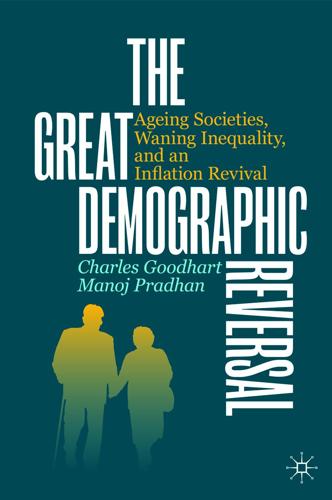
The Great Demographic Reversal: Ageing Societies, Waning Inequality, and an Inflation Revival
by
Charles Goodhart
and
Manoj Pradhan
Published 8 Aug 2020
A surge of exports in 2000 and its contribution to GDP growth for the rest of the decade is the other. Ogawa et al. (IMF 2012) decompose the export function into two parts—one that depends on the income stream of Japan’s trading partners and the other that is a function of the ‘total factor productivity’ of firms as well as input costs. Total factor productivity, they find, accounts for around 50% of the variation in export growth whereas incomes among trading partners account only for about 20%. The strenuous efforts in restructuring shown by firms during the 1990s, they argue, might account for this dynamic. This is what we should be seeing from profit-maximising firms faced with structural headwinds, but how they did it is where the evidence of a global footprint on Japan’s productivity trail can be seen.
…
Take Back Control Tariff barriers, headline Tariffs Taxable, capacity of Taxable capacity, falling Taxable capacity, slowing Taxation Taxation, major change in the direction and assignment of Taxation, raises can be self-harming Taxation, raises painful Taxation, upper bound threshold Tax burden, on workers Tax by Design Taxes, difficult to raise Taxes, inevitable Tax havens Taxi drivers Tax increases, politically difficult Tax rates, rising to finance pensions and medical expenses Tax treatment, favours debt finance Technological change Technological companies Technology Technology, labour saving Technology, requiring human capital rather than fixed investment Technology transfers Telecommunication Tenreyro, S. Thailand Thatcher, Margaret Three Chinas 1989 Tiananmen Square protest Timely diagnosis Tokutsu, I. Toronto Total Factor Productivity (TFP) Trabandt, M. Trade balance Trade deficit Trade flows Trade round, Doha 2001 Trade round, Uruguay, 1986 Trade union Trade union, density Trade union membership Trade union membership, decline in private sector Trade unions, increasing membership, power and militancy Trade unions, private sector Trades unions, private sector membership declines Treaty, protection for European Central Bank Troubled Asset Recovery Program (TARP) True Finns Trump, Donald administration Trump, Donald, in America Turkey Twain, Mark ‘Tyrants’ U Uber UE UK long-term Consols Ukraine Unconventional monetary policies Under-occupancy Unemployment Unemployment falls Unemployment, in Japan Unemployment rate “Unified Approach”, Secretariat Proposal Union membership Union of Auto Workers (UAW) Unit costs rise United Kingdom (UK) United Nations Report, on World Population Ageing United States (US) Unit labour costs, in China and Japan Unit labour costs, rising in real terms Universal Care Entitlement Unobservable components Unskilled labour, worsening economic position Uruguay US, biggest fiscal problem US, disinflation partly caused by age-structure US, governance problems in corporate America US, participation of seniors US, ratio of old to working population, lower and growing slower US, theory of secular stagnation less applicable US consumer US housing crisis and unemployment US manufacturing employment, decline of USSR US Treasury security Uzbekistan V Value Added Tax (VAT) Vancouver Velde, F.R.

Growth: From Microorganisms to Megacities
by
Vaclav Smil
Published 23 Sep 2019
The contradiction of rapid industrialization but relatively modest growth is explained by the early adoption of capitalist farming and, for decades, the limited impact of steam on productivity growth (Crafts 2005). Reconstruction of annual real GDP growth rates shows a steady acceleration from 0.7% between 1700 and 1760 to 1% between 1760 and 1801, 1.9% during the next 30 years, and 2.4% between 1831 and 1873. More than half of the contribution came from total factor productivity, just over 20% from capital deepening, and nothing from agriculture. The early decades of the British industrial revolution were closely connected with the invention and improvement of steam engines but Crafts (2004) demonstrated that the machine contributed little to the country’s pre-1830 economic growth, and that its potential was realized only with a widespread adoption of high-pressure designs after 1850.
…
One of the big surprises resulting from the early studies of economic growth accounting that were published during the 1950s was that a high share of output growth could not be explained by the level of inputs used in production, that is by labor (hours worked) and capital used (Abramovitz 1956; Solow 1957; Kendrick 1961). The unexplained residual must reflect advances in production techniques and it has become known as total factor productivity (TFP) or (more accurately, because the studies do not capture all the factors contributing to economic growth, but less frequently) as multifactor productivity growth. In modern economies, gains in TFP—subsuming the effect of innovation and technical advances or, most fundamentally, the level of deployed knowledge—have contributed more to the measured growth of labor productivity than the growth in capital invested per worker, and they have often (but not always) accounted for the single largest share among the trio of key growth factors (Shackleton 2013).
…
America’s rise from a marginal power in 1800 to the world’s economic leader by 1900 is a perfect illustration of how the quest for higher profits, innovation based not just on empirical improvements but on an unprecedented advanced in new fundamental technical and scientific understandings, and historical peculiarities (the pre-1865 dominance of slavery in the South, an extraordinarily rich energy endowment, and urban-based growth in the North) all combined to determine the country’s unique growth trajectory. The increasing importance of knowledge-based technical advances can be traced by comparing the sources of growth calculated for different periods. During the first half of the 19th century, capital and labor explained about 95% of American annual growth and total factor productivity accounted for just 5%. American TFP remained low during the Civil War decade but Kendrick’s (1961) reconstruction shows that annual TFP growth in manufacturing amounted to 0.86% during the 1870s, 1.94% during the 1880s, and 1.12% during the 1890s. These levels were higher than the means for the last three decades of the 20th century, providing clear proofs of the late 19th century’s knowledge-based progress (Smil 2005; Field 2009).

Against Intellectual Monopoly
by
Michele Boldrin
and
David K. Levine
Published 6 Jul 2008
To summarize, (1) before 1930, only some mechanical and chemical inventions related to agriculture could be patented. (2) In 1930, the Plant Patent Act offered patent protection to asexually reproduced plants. (3) In 1970, the Plant Variety Protection Act extended such protection to plants P1: KNP head margin: 1/2 gutter margin: 7/8 CUUS245-03 cuus245 978 0 521 87928 6 May 8, 2008 13:56 54 Against Intellectual Monopoly that are sexually reproduced. (4) Between 1980 and 1987, patent protection was extended to the products of biotechnology. One would expect this progressive extension of “intellectual property” protection to bring about a dramatic acceleration in useful innovation, at least since the early 1970s. One measure of useful innovation is what economists call total factor productivity (TFP): how much output (of food, for example) can be produced from given inputs (labor and land, for example). So, we might expect that the growth rate of TFP in the agricultural section accelerated in response to all this additional patentability. This is not the case, as the historical data clearly show: in the United States, agricultural TFP has been growing at a remarkably constant pace since the end of the Second World War.11 More precisely, the average growth rate from 1948 to 1970 was essentially the same as from 1970 to 1992 – that is, about 50 percent – and it seems to have marginally slowed down after that.
…
In just four years, between 1997 and 2001, patent applications exploded by a spectacular 50 percent.2 Part of the radioactive fallout from this explosion in patent applications was the increase in the membership of the “intellectual property” section of the American Bar Association, which went from 5,500 to almost 22,000.3 If patents beget prosperity and innovation, we might expect that this explosion in patenting coincided with a vast technological improvement. Of course, it did not. A common measure of technological improvement is the increase in total factor productivity (TFP) – as mentioned in the previous chapter, this measures how much additional output can be produced from a given combination of inputs by using those inputs better. Higher TFP means, for example, more and better cars from the same labor and using other factors such as metal and plastic.
…
See also copyright; 10, 158–159 ideas; ideas, copies of; intellectual intellectual monopoly unnecessary for, monopoly; non-compete clauses; 15 patents lack of under monopoly, 43, 151, 187 abolition of, 253–257 limited by patents, 4, 42, 49–50, 83–84 control of after sale, 8 in newspapers, 29 desirable features of world without, patent law as reflection of state of, 191 125–126 patents and reduction of, 83–84 duration of and market size, 175 and patents in software, 197 effect on world history, 263–264 possible under abolition of patents, 186 efforts to expand, 246–248 reasons for, 62–63 elimination of government from, risk in, 144–145, 174 252–253 and sharing of information, 136–137 goal of complete elimination, 264–265 social value of, 57 history of in Europe, 43–47 in software without patent protection, 16 as incentive, 6 in steam engines, See also steam engines levels of and R&D/BDP ratio, 196t studies of patents and, 192, 198t, and monopoly profits, 6 subsidies for, 260–261 vs. ordinary property, 123–124 and Total Factor Productivity (TFP), 54 overuse argument for, 177–179 innovators. See also first-mover advantage; in poor and developing countries, innovation; producers 247–248 and promise of large initial rents, 132–133 and R&D as fraction of GDP, 195–196 rents of compared to imitators, 133 reasons to abolish, 243–244 rewarding of, 6 recent vintage of, 15 insufficient rent, 135 reform of, 244–245, 257–259 intellectual colonization, 38 strengthening of, 192, 194–196, 197–198 intellectual imperialism, 81 suggestions for reform in, 248–262 intellectual monopoly.

EuroTragedy: A Drama in Nine Acts
by
Ashoka Mody
Published 7 May 2018
In addition, European companies made the judgment that buying American companies and thus buying into the exciting American story was a better value than investing at home.20 Capital flowed from Europe to America, in the process causing the euro to depreciate vis-à-vis the dollar. The United States was experiencing an economic renaissance. Central to this renaissance was a sustained rise in productivity growth since around 1995. Productivity—output per worker or the more inclusive “total factor productivity,” which measures output produced by a bundle of capital and labor inputs—was rising quickly. High-tech sectors—computer hardware and software, pharmaceuticals, and biotech—were booming, and the stock market was buoyant. In contrast, European productivity was growing slowly, well below the pace in the United States.21 This US-Europe productivity growth difference reflected the fact that although both had been in the economic doldrums for much of the 1970s and 1980s, the American economy had reinvented itself and the European economy had not.
…
This continued tendency to use banks as an instrument of public policy was prevalent in many parts of what is now the eurozone, but it was especially strong in the French civil law countries (France, Belgium, Italy, Portugal, and Spain), where governments were either the principal owners of banks or had a heavy hand in directing the flow of credit.24 However, unlike in the “golden years,” the latest round of credit expansion often favored specific regions or special interests; credit flows were misdirected and fostered public corruption.25 In France, for example, President Giscard d’Estaing began this latest phase of bank expansion in 1974, and President Mitterrand continued the process in May 1981, soon after taking office, when he nationalized thirty-six irrational exuberance 163 banks, placing around 60 percent of bank deposits in the hands of the state.26 Harvard University political scientist Peter Hall has concluded that these efforts did more harm than good; the government used its “considerable control over the flow of finance” to channel funds “towards declining sectors.”27 In Italy, government-owned banks pushed subsidized credit to the politically well connected.28 Although the Italian government claimed it was promoting “industrial restructuring and growth,” as in France, Italian banks were significant funders of declining sectors and low-productivity projects.29 Even when the lending was well intentioned, European businesses, instead of investing in creative effort or in stepped-up worker training, focused mainly on replacing workers with more machines. This strategy could generate only limited productivity gains. With the aid of more machines, workers did produce more output per hour, but the gains steadily diminished. Growth in the all-important “total factor productivity,” which accounts for both labor and capital inputs, decelerated quickly.30 Oddly, slower productivity growth made it easier for banks to expand. When growth slows, households do not typically reduce the share of their incomes that they save. The savings add to household wealth, and, hence, the wealth-to-income ratio increases.
…
At the summit in Lisbon on March 23–24, 2000, Eurozone leaders had ostentatiously pledged to “enhance” innovation and “modernize” education and thus make Europe’s 105 United Kingdom 100 France 95 Germany 90 85 Italy 80 Spain 75 1999 2000 01 02 03 04 05 06 07 08 Figure 4.6. Euro-area productivity growth falls behind. (Total factor productivity relative to the United States, US = 100.) Source: Antonin Bergeaud, Gilbert Cette, and Remy Lecat. 2016. “Productivity Trends in Advanced Countries between 1890 and 2012.” Review of Income and Wealth 62, no. 3: 420–444. Data available at www.longtermproductivity.com. irrational exuberance 169 economy “the most competitive and dynamic knowledge-based economy in the world.”57 They had listed 102 specific targets for national authorities to achieve by 2010, with the goal of raising GDP growth by one percentage point a year.

The Second Machine Age: Work, Progress, and Prosperity in a Time of Brilliant Technologies
by
Erik Brynjolfsson
and
Andrew McAfee
Published 20 Jan 2014
Kevin Stiroh of the New York Federal Reserve Bank found that industries that were heavier users of IT tended to be more productive throughout the 1990s. This pattern was even more evident in recent years, according to a careful study by Harvard’s Dale Jorgenson and two coauthors. They found that total factor productivity growth increased more between the 1990s and 2000s in IT-using industries, while it fell slightly in those sectors of the economy that did not use IT extensively.13 It’s important to note that the correlation between computers and productivity is not just evident at the industry level; it occurs at the level of individual firms as well.
…
They’re subject to diminishing returns—no one is going to work more than twenty-four hours a day, or employ more than 100 percent of the labor force. In contrast, productivity growth reflects ability to innovate—it’s limited only by our imaginations. * Output divided by labor and physical capital inputs is often more ambitiously called ‘total factor productivity.’ However, that term can be a bit misleading, because there are other inputs to production. For instance, companies can make major investments in intangible organizational capital. The more kinds of inputs we are able to measure, the better we can account for overall output growth. As a result, the residual that we label “productivity” (not explained by growth of inputs) will get smaller.
…
,” American Economic Review 92, no. 5 (2002): 1559–76; and D. W. Jorgenson, M. S. Ho, and J. D. Samuels, “Information Technology and U.S. Productivity Growth: Evidence from a Prototype Industry Production Account,” Journal of Productivity Analysis, 36, no. 2 (2011): 159–75, especially table 5, which shows the total factor productivity growth was about ten times higher in IT-using sectors than in sectors that did not use IT extensively. 14. See E. Brynjolfsson and L. M. Hitt, “Computing Productivity: Firm-level Evidence,” Review of Economics and Statistics 85, no. 4 (2003): 793–808. Similarly, Stanford University’s Nicholas Bloom, Harvard University’s Rafaela Sadun, and the London School of Economics’ John Van Reenen found that American firms were particularly adept at implementing management practices that maximized the value of IT, and this lead to measurable productivity improvements, as documented.

Power and Progress: Our Thousand-Year Struggle Over Technology and Prosperity
by
Daron Acemoglu
and
Simon Johnson
Published 15 May 2023
Against this background, the decades after 1940 were striking. US aggregate output (gross domestic product, or GDP) per capita grew at an average rate of more than 3.1 percent between 1940 and 1973. This growth was fueled by productivity improvements, both during and after the war. In addition to GDP per capita, total factor productivity (TFP) growth is an informative measure of economic growth, in part because it takes out the contribution of increases in the capital stock (machinery and buildings). The TFP growth rate is therefore a better measure of technological progress, for it picks up how much GDP growth comes from technological changes and efficiency improvements.
…
More than thirty-five years have passed, and we are still waiting. In fact, the US and most other Western economies have had some of the most unimpressive decades in terms of productivity growth since the beginning of the Industrial Revolution. Focusing on the same measure of productivity we discussed in Chapter 7, total factor productivity (TFP), US average growth since 1980 has been less than 0.7 percent, compared to TFP growth of approximately 2.2 percent between the 1940s and 1970s. This is a remarkable difference: it means that if TFP growth had remained as high as it had been in the 1950s and 1960s, every year since 1980 the US economy would have had a 1.5 percent higher GDP growth rate.
…
Excessive automation—which goes beyond what would be efficient from a pure production viewpoint and may thus even reduce correctly measured productivity—is then so-so by definition. The reference to “correctly measured productivity” is because automation always mechanically increases output per worker by reducing the need for labor in production, but it may reduce total factor productivity, which takes into account the contribution of both labor and capital, as explained in Chapter 7. Second, most theories of economic growth either take the path of technological change as exogenous, as in Solow (1956), or endogenize the rate of innovations but assume that these take place along a given trajectory, as in Lucas (1988) or Romer (1990).

The Upside of Inequality
by
Edward Conard
Published 1 Sep 2016
Intangible investments rose dramatically in the 1990s when productivity accelerated (see Figure 1-4, “U.S. Investment in Intangibles as a Percentage of GDP”). Visit bit.ly/2bpMCid for a larger version of this image. Given America’s heavy investment in knowledge-intensive intangible assets, it hardly seems coincidental that total factor productivity—productivity growth from innovation and know-how rather than from greater capital investment or education per worker—surged from a growth rate of 0.5 percent per year from 1974 to 1995 to 1.75 percent a year from 1995 to the economic peak preceding the financial crisis. America’s increased productivity growth relative to other high-wage economies stems from increased investment in intangibles—not magic.
…
High top marginal rates of personal income tax reduce productivity growth by reducing entrepreneurial activity. . . . Industry-level evidence covering a subset of OECD countries suggests that there is a negative relationship between top marginal personal income tax rates and the long-run level of total factor productivity.”*43 A recent International Monetary Fund (IMF) study, often cited by advocates of redistribution*—whose headlines insisted that redistribution does not slow growth—admits that “when redistribution is already high (above the 75th percentile*), there is evidence that further redistribution is indeed harmful to growth, as the Okun ‘big trade-off’ hypothesis* would suggest.”44 Guess which country lies at the seventy-fifth percentile?
…
Bureau of Economic Analysis took its first steps to account properly for intangible investment. * As of the time of this writing. * Facebook acquired Instagram. * I’m simplifying here. Read the more carefully reasoned calculation in my book Unintended Consequences, chapter 9, “Redistributing Income.” * Constant 2005 dollars. * Total factor productivity (TFP) is innovative know-how. * Ironically, Nobel Prize winner Joe Stiglitz, in the postscript to his recent book The Great Divide, calls me out by citing the IMF study to oppose my arguments. Joe and I have publicly debated inequality on multiple occasions. * That is, above the 75th percentile of countries in the study’s sample * Refers to Arthur Okun, an influential economist and adviser in the Kennedy and Johnson administrations, who argued income redistribution reduces efficiency and slows growth in his famous book, Equality and Efficiency: The Big Tradeoff
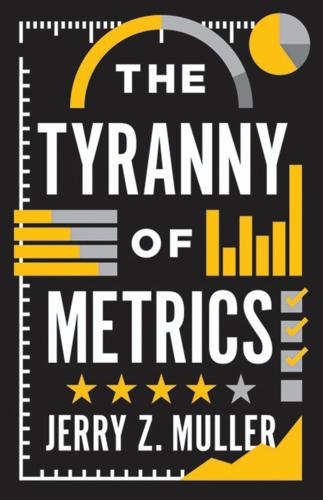
The Tyranny of Metrics
by
Jerry Z. Muller
Published 23 Jan 2018
The more that work becomes a matter of filling in the boxes by which performance is to be measured and rewarded, the more it will repel those who think outside the box. Costs to productivity. Economists who specialize in measuring economic productivity report that in recent years the only increase in total factor productivity in the American economy has been in the information-technology-producing industries.11 A question that ought to be asked is to what extent the culture of metrics—with its costs in employee time, morale, and initiative, and its promotion of short-termism—has itself contributed to economic stagnation?
…
Berwick, “The Toxicity of Pay for Performance.” 9. Edmund Phelps, Mass Flourishing: How Grassroots Innovation Created Jobs, Challenge and Change (Princeton, 2013), p. 269. 10. Similarly, Scott, Seeing Like a State, p. 313. 11. According to Dale Jorgenson of Harvard, the only source of growth of total factor productivity was in IT-producing industries. Dale W. Jorgenson, Mun Ho, and Jon D. Samuels, “The Outlook for U.S. Economic Growth,” in Brink Lindsey (ed.), Understanding the Growth Slowdown (Washington, D.C., 2015). On how behavioral metrics in human resources sap initiative, see Lutz, Car Guys vs. Bean Counters, pp. ix–x.
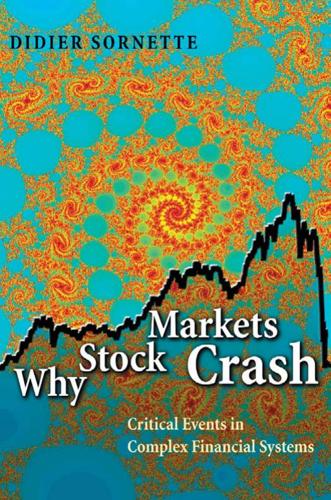
Why Stock Markets Crash: Critical Events in Complex Financial Systems
by
Didier Sornette
Published 18 Nov 2002
A crash would probably have a much larger effect on output and employment now than in the past [162]. However, there is one key ingredient that has been left out of this analysis: productivity gains. Recall that labor productivity is defined as real output per hour of work. Similarly, total factor productivity is defined as real output per unit of all inputs. Total factor productivity reflects, in part, the overall efficiency with which inputs are transformed into outputs. It is often associated with technology, but it also reflects the impact of a host of other factors, like economies of scale, any unaccounted inputs, resource reallocations, and so on.
…
According to the official U.S. productivity statistics prepared by the U.S. Bureau of Labor Statistics, the average annual growth of total factor productivity was 2.7% between 1995 and 1999 (such a large growth rate implies that productivity would be 70% higher after 20 years). Clearly, the rate of productivity growth can have an enormous effect on real output and living standards. Productivity growth is a fundamental measure of economic health, and all of the major measures of aggregate labor and total factor productivity have recently shown improvements after long spells of sluggishness. If this improved performance continues, strong overall performance of real growth and low inflation may be sustained, although the short-run linkage of productivity to real income (and to output, after the very shortest period) is not as tight as some might expect [415].

What's Next?: Unconventional Wisdom on the Future of the World Economy
by
David Hale
and
Lyric Hughes Hale
Published 23 May 2011
Businesses will have to pay more for entry-level workers and then work harder to retain them for longer because they will not be so easy to replace. The macroeconomic consequences of the Lewis turning point are large. Before the turning point, the capitalist economy grows mainly through an accumulation of factors—labor and capital. The efficiency with which these factors are used—in economists’ jargon, “total factor productivity,” or TFP—is secondary. After the turning point, sheer factor accumulation slows down, and efficiency or TFP gains must become the main driver of economic growth. The most important question now confronting Asian bulls such as ourselves is: Can Asia evolve from “growth through accumulation of factors” to “growth through productivity”?
…
SUBSISTENCE AGRICULTURE: Farming in which the bulk of a farmer’s output is devoted to the feeding of himself and his family, with little excess available to be sold to third parties. TECHNOCRAT: A bureaucrat who is intensively trained in engineering, economics, or a form of technology. TOTAL FACTOR PRODUCTIVITY: The portion of output that is not explained by the amount of input used in production. TRAGEDY OF THE COMMONS: A metaphor that illustrates that it is hard to coordinate and pay for public goods. Individuals have no incentive to limit consumption of a public good, and thus the public good is overwhelmed with demand.
…
See Troubled Asset Relief Program (TARP) tar sands industry, xviii tax cuts, xvii; in Canada, xviii; in US, 5 taxes: Canada, 20; consumption-based taxes, 261–263; corporate taxes, 260; energy taxes, 260; excise taxes, 262; income taxes, 6, 260–262; payroll taxes, 261–262; sales taxes, 262; Tobin tax, xxvii, 250–255; turnover tax, 253–255; value-added tax (VAT), xxviii, 6, 43, 262 tax policy, xxvii–xxviii; Canada, 20, 26; Mexico, xix, 42–43; public debt and, 259–260; South Africa, 136; US, 6, 60, 260–261 technology: climate change and, 227; hydrocarbons and, 181–183 telecoms, 26 television, 298 Term Asset-Backed Securities Loan Facility (TALF), 277 testosterone, 290 Thailand, 7 Thaler, Richard, 291 Tobin, James, 250 Tobin tax, xxvii, 250–255 “too-big-too-fail” bailouts, 266, 267, 268 total factor productivity (TFP), 87 toxic securities, 238–239 transparency, 280–282 Trichet, Jean-Claude, 237–238 Triffin Dilemma, 252–253 Troubled Asset Relief Program (TARP), 3, 277 turnover tax, 253–255 Tversky, Amos, 289 Uganda, xxii, xxv, 126 unemployment rate, xvi, 4 United Kingdom: climate change policy of, xxvi; domestic demand in, 140; as financial capital, 244–245; fiscal deficit in, 257; fiscal policy of, 59, 71; government debt in, 160–161; Tobin tax and, 251–252 United Nations Development Programme (UNDP), 184 United Nations Framework Convention on Climate Change (UNFCCC), 220–222 United States: banking sector in, xxvii, 235–241; Canada and, 13–14, 24; climate change and, xxvi, 224–225; corporate sector in, xvi, 4, 8; economic recovery in, xvi–xvii, 3–11, 13–14, 65–66; as engine of world demand, 96, 140; environmental policies, 5, 27; financial system of, 157; fiscal deficit in, 10–11, 70, 257; fiscal policy of, xvii, 6, 10–11; fiscal stimulus program in, 4; government debt, 160; growth rate in, 5, 13–14; household sector in, 8; housing sector in, 9; industrial production in, 65; monetary policy of, 7–10; partisan politics in, 5–6; politics in, 269–270; productivity gains in, xvi, 4; public policy of, xvi–xvii; stimulus measures in, 4, 13; tax policy of, 6, 63, 260–261 Uribe, Alvaro, 33 Uruguay, 48, 49–50 US consumers, xv US dollar: alternatives to, 158; devaluation of, xvii, 7, 25; gold prices and, 173–174; as reserve currency, xxiv, 153–165; weakening, and commodity prices, 53 US government securities, 160 value-added tax (VAT), xxviii, 6, 43, 262 Van Alstyne, Marshal, 296 Venezuela, 48–49, 50, 51, 183 Volcker Rule, 267, 268 web-based communities, 296 Weber, Alex, 285 welfare expenditures, South Africa, 137–138 Wellink, Nout, 248 West Africa, xxii, 126–127 Westphalian system, 251 World Bank, 119, 154 world economy, 12–14; in 2010–2011, 94–95; recovery of, xv; trends underpinning, 78–80 yen, xxiv, 9, 97, 98, 167 yield curves, 82–83 Yoshida, Shigeru, 105 Zambia, 118, 125 ZANU-PF, 125 Zapatistas, 35 Zedillo, Ernesto, 35 Zimbabwe, xxii, 125 Zoellick, Robert, 169 “zombie” firms, 112 Zuma, Jacob, 125, 128, 134–137
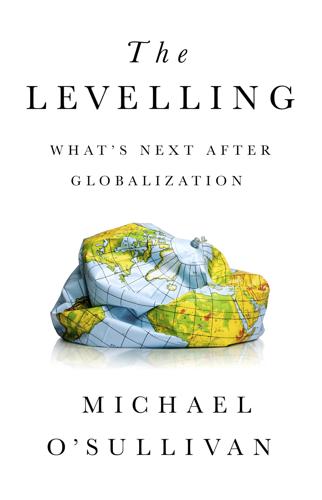
The Levelling: What’s Next After Globalization
by
Michael O’sullivan
Published 28 May 2019
The economic decline of Russia is an illustration of the fact that productivity is central to economic advancement and, in some respects, to social advancement. In a very broad sense, economies will grow when labor and investment are applied in clever and productive ways to generate more output with existing resources or even new output (innovation). Economists refer to this as “total factor productivity.” Productivity is an essential factor in enabling emerging economies to move from early phases of growth (agriculture and manufacturing, for example) to higher-end ones (such as services and technology). It is also the principal way in which developed economies and societies can sustain high levels of economic growth.
…
In this context it is a concern that in the five years from 2012 to 2017 productivity growth in both the developed and developing countries dropped to historically low levels (one long-run data source puts today’s level of productivity growth in the United States at the lowest since 1880, and much the same is true for Europe).9 In more detail, in the United States, total factor productivity averaged 1 percent from 1996 to 2006, then slipped to 0.5 percent from 2007 to 2012, and has languished at close to zero since then.10 Long-term, or perhaps “structural,” productivity is more important because it speaks to the capability of a country and its people to boost output. Factors like the quality of governance/political systems and educational attainment are the important drivers.
…
See financial markets strength of countries, 158–159, 162–164, 165 Sufi, Amir, 176 Survey of Consumer Finance, 43 Sweden, 6 Syriza, 110 Taleb, Nassim, 69 technology automation issues, 46 in China, 224, 231, 272–273 economy and economic growth, 142, 214 first globalization, 58, 60, 61–62 as force, 58–59 frameworks and standards, 297–299 and globalization, 213–214 and governments, 272–273 and inequalities, 46 interconnections worldwide, 8–9 Levellers as model, 96, 98, 99–100 pace of change, 26 political parties, 115 and productivity, 145 regulation, 275–276 as solution, 26 transparency, 262 Thatcher, Margaret, 133 Thirty Years’ War, 240 314 Action, 129 “Thucydides’s Trap,” 224 TomTom Traffic Index, 50 top 1 percent of wealthy, 40, 42 “total factor productivity,” 144 trade China, 33, 216, 232 and first globalization, 59–60 and globalization, 30, 31, 32–33 and jobs, 35 Levellers’ demands, 89 policy and agreements, 32–33 and politics, 34, 35–36 problems and disputes, 24, 33–34 protectionism, 34 recess, 30, 31, 32 US vs. China dispute, 33, 34–35 Trans-Atlantic Trade and Investment Partnership (TTIP), 33 transnational governance, 62–64 Trans-Pacific Partnership (TPP), 33 transparency and corruption, 262 transportation, 60 traveling time to work, 50 Treaty of Portsmouth, 293 “trilemma of globalization,” 237–238 Trudeau, Justin, 26 Trump, Donald, and administration economic growth, 14 economic policy, 140–141 parallels with Hoover, 64–65 and political conventions, 80 and trade, 24, 33, 35, 65 Tucker, Paul, 169 Turkey, 153–154 Uber and Uber economy, 142 United Kingdom (UK) governance code, 205 place in the world, 18, 246 in poles of multipolar world, 225–226, 249–251 political parties and splits, 112–113 political types, 127–128 post-Brexit scenarios, 250–256 productivity, 145 stereotypes and exceptionalism, 246–247 See also Brexit; English history United Nations, 263–264, 266 United States aging of population, 148 banking reforms, 300–301 and Big Tech, 272 central bank (see Federal Reserve System) change in civil service, 134 China as threat, 288–289 climate change, 269–270 Constitution, 281 corporate governance, 204–205 currency/dollar, 154, 155, 226, 267 debt, 187, 192 decline in influence, 277 democracy and republic, 3, 279 diplomatic power, 293–294 economic influence, 226, 267 and globalization, 64–65 Greenspan approach, 171 Hamilton’s deeds, 280, 281, 283, 284, 286, 295 Hamilton’s impact, 277–278, 279 immigration, 217 inequalities, 40, 41, 43–47, 299–300 infrastructure overhaul program, 149–150 investment, 146–147 labor reforms and taxes, 301–302 and Latin America, 221 in levelling, 246 long-term unemployment, 299–300 manufacturing, 35 marriage views, 49–50 military power, 295–297 new candidates in politics, 111, 119, 126–127, 128–130 next recession, 76, 185 as pole in multipolar world, 222, 223, 225–226, 279, 295–302 productivity, 144, 147–148, 301 and QE, 175, 176–177, 183 skyscrapers, 211–212 technology frameworks, 297–299 trade and dispute with China, 24, 32–33, 34–35 voter self-identification, 52 wealth inequality, 42, 43 women as candidates, 111 US Treasury, 283, 286 Van Reybrouck, David, 108, 109 Vance, J.
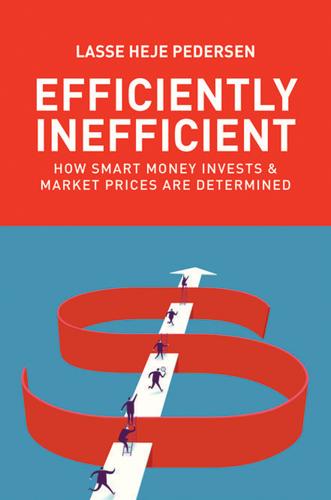
Efficiently Inefficient: How Smart Money Invests and Market Prices Are Determined
by
Lasse Heje Pedersen
Published 12 Apr 2015
This output is produced by the country’s labor (L) and capital (K). The labor L refers to the number of people who work. A country’s physical capital K refers to its machines, plants, natural resources, computers, trucks, and infrastructure that are put to use. The output supplied can be thought of as using production function F: where TFP is the total factor productivity, which measures how good the technology is, how well educated and skillful the population is, and how efficiently capital and people are allocated to the most productive sectors. In the long run, that is all there is to it: Output is what the country can produce with the people and machines that it has.
…
See Internet bubble of late 1990s telecom mergers, 318–19 terminal value of a stock, 91 term loan, 118 term premium, 168, 249, 249n terms of trade, 199 term structure of interest rates, 242–43, 243f, 250; trading on the curvature of, 251–55, 252f, 253f, 254f; trading on the level of, 250; trading on the slope of, 250–51. See also yield curve TFP (total factor productivity), 192 thematic global macro traders, 12, 200 theta, 280, 280f Tiger Cub funds, 108 Tiger Management Corporation, 1, 108 time decay, in convertible bond arbitrage, 280, 280f time lags, in backtesting, 47 time series momentum strategies, 209–10; margin requirements for, 225; position sizing in, 213, 213n, 214, 219–20, 225; single-assets example (1985 to 2012), 212–14, 214–17f.
…
See also managed futures investing time series momentum strategies, diversified: example of (1985 to 2012), 214, 218–19, 218t; explanation of returns from, 219–21, 220f; hypothetical fee for, 223, 224; managed futures fund returns and, 221, 222t, 223; versus S&P 500, 219, 219f, 220, 220f time series regression, 51–52, 53 TIPS (Treasury inflation-protected securities), 192 T-Mobile, 319 total factor productivity (TFP), 192 tracking error, 22, 30 tracking error risk, 30 track record of hedge fund, 38 trading rules: broad classes of, 47–48; defined, 47; implementation costs and, 64 trading signals, 47; multivariate regression on, 51, 53 trading strategies. See hedge fund strategies transaction costs, 63–64; adjusting backtests for, 50; of arbitrage trades, 235; Asness on, 160, 163; estimating expected values of, 69–70; implementation shortfall and, 70–72; liquidity of securities and, 63; of managed futures strategies, 224–25; market liquidity risk and, 42–45, 63; as market makers’ profit, 154; measuring, 67–69; optimal trading in light of, 64–67, 66f; in portfolio optimization, 57; reduced by short-selling, 123; sources of, 63 “Travolta” collar deal, 302, 302f Treasury bonds: hedging interest-rate risk with, 283; on-the-run versus off-the-run, 13, 241, 257, 258f, 259; swaps and, 259, 260.

The Economics of Belonging: A Radical Plan to Win Back the Left Behind and Achieve Prosperity for All
by
Martin Sandbu
Published 15 Jun 2020
International Monetary Fund, World Bank, and World Trade Organisation, Making Trade an Engine of Growth for All: The Case for Trade and for Policies to Facilitate Adjustment, 10 April 2017, https://www.imf.org/en/Publications/Policy-Papers/Issues/2017/04/08/making-trade-an-engine-of-growth-for-all. 7. Mark Muro and Siddharth Kulkarni, “Voter Anger Explained—in One Chart,” Brookings, 15 March 2016, https://www.brookings.edu/blog/the-avenue/2016/03/15/voter-anger-explained-in-one-chart/. 8. This is the sort of pure ideas-based efficiency (economists call it “total factor productivity”) that Paul Romer received the 2018 economics Nobel Prize for analysing. For the amazing story of how the shipping container transformed trade, see Tim Harford, “50 Things That Made the Modern Economy: The Simple Steel Box That Transformed Global Trade,” BBC World Service, 9 January 2017, https://www.bbc.co.uk/news/business-38305512. 9.
…
Valerie Cerra, Sweta Saxena, and Ugo Panizza, “International Evidence on Recovery from Recessions” (IMF Working Paper 09/183, 2009), https://www.imf.org/en/Publications/WP/Issues/2016/12/31/International-Evidence-on-Recovery-from-Recessions-23234. 11. Narayana Kocherlakota, “Growth Begets Growth: Reflections on Total Factor Productivity,” blog post, 21 February 2016, https://sites.google.com/site/kocherlakota009/policy/thoughts-on-policy/2-21-16; Martin Sandbu, “Economies Can Take a Lot More Stimulus without Overheating,” Financial Times, 23 May 2017, https://www.ft.com/content/7ae0866a-3f04-11e7-9d56-25f963e998b2. 12.

Profiting Without Producing: How Finance Exploits Us All
by
Costas Lapavitsas
Published 14 Aug 2013
Presumably the productivity transformation was broadly based, and a cure had been found for ‘Baumol’s disease’, that is, for the tendency of the service sector to register weak productivity growth.17 Mainstream studies of productivity growth typically comprise macro-level, econometrics papers, engaging in growth-accounting.18 Arguments are usually based on total factor productivity (TFP) – on the econometric residual of growth accounting, which is a vastly different concept to labour productivity. TFP is deeply problematic as an explanation of macro-level movements in productivity not least because it is a residual and therefore by definition ‘unexplained’. However, there have also been micro-level (firm level) studies, mostly in the US, which have broadly argued that productivity growth did indeed assume a rising path in the late 1990s.
…
Inflation Dynamics and the Distribution of Income’, NBER Working Paper No. 11842, 2005. 17 Jack Triplett and Barry Bosworth, ‘Productivity in the Services Sector’, Brookings Economics Papers, January 2000; Jack Triplett and Barry Bosworth, ‘What’s New About the New Economy? IT, Economic Growth and Productivity’, International Productivity Monitor, vol. 2, 2001, pp. 19–30. 18 See, for instance, John Fernhald and Shanthi Ramnath, ‘The Acceleration in US Total Factor Productivity After 1995: The Role of Information Technology’, Economic Perspectives 28:1, First Quarter 2004, pp. 52–67; or Peter B. Meyer and Michael J. Harper, ‘Preliminary Estimates of Multifactor Productivity Growth’, Monthly Labour Review 125:6, June 2005. 19 Some even claimed that the rising stock market in the US in the late 1990s had somehow captured a mysterious e-capital while producing enormously inflated valuations of the new technology sector (Hall 2001, 2002).
…
Federal Reserve Bulletin, ‘The Use of Checks and Other Noncash Payment Instruments in the United States’, December 2002, pp. 360–74. Federal Reserve, ‘The Future of Retail Electronic Payments Systems: Industry Interviews and Analysis’, Staff Study 175, Federal Reserve Staff for the Payments System Development Committee, December 2002. Fernhald, John, and Shanthi Ramnath, ‘The Acceleration in US Total Factor Productivity After 1995: The Role of Information Technology’, Economic Perspectives 28:1, First Quarter 2004, pp. 52–67. Fieldhouse, David, The West and the Third World, Oxford: Blackwell, 1999. Financial Services Authority, The Regulation of Electronic Money Issuers, Consultation Paper 117, December 2001.

The Impulse Society: America in the Age of Instant Gratification
by
Paul Roberts
Published 1 Sep 2014
Doi: http://www.nytimes.com/2013/11/20/opinion/edsall-the-obamacare-crisis.html?pagewanted=1&_r=2&smid=tw-share&&pagewanted=all. Field, Alexander J. “The Impact of the Second World War on U.S. Productivity Growth.” Economic History Review 61, no. 3 (2008): 677. ———. “The Origins of U.S. Total Factor Productivity Growth in the Golden Age.” Cleometrica 1, no. 1 (April 2007): 19, 20. Fisher, Richard. “Ending ‘Too Big to Fail’: A Proposal for Reform before It’s Too Late (with Reference to Patrick Henry, Complexity and Reality).” Remarks by the president of the Federal Reserve Bank of Dallas to the Committee for the Republic.
…
Recent Social Trends in the United States: Report on the President’s Research Committee on Social Trends, with a Foreword by Herbert Hoover (New York: McGraw-Hill, 1933), pp. 866–67, at http://archive.org/stream/recentsocialtren02presrich#page/867/mode/1up. 10. Franklin D. Roosevelt Inaugural Address, March 4, 1933, available at History Matters: The U.S. Survey Course on the Web, http://historymatters.gmu.edu/d/5057/. 11. Alexander J. Field, “The Origins of U.S. Total Factor Productivity Growth in the Golden Age,” Cleometrica 1, no. 1 (April 2007): 19, 20. 12. Alexander J. Field, “The Impact of the Second World War on U.S. Productivity Growth,” Economic History Review 61, no. 3 (2008): 677. 13. Gary Nash, “A Resilient People, 1945–2005,” in Voices of the American People, Volume 1 (New York: Pearson, 2005), p. 865. 14.

The Entrepreneurial State: Debunking Public vs. Private Sector Myths
by
Mariana Mazzucato
Published 1 Jan 2011
Figure 13 Origins of popular Apple products Figure 14 Global new investment in renewable energy (US$, billions) Figure 15 Government energy R&D spend as % GDP in 13 countries, 2007 Figure 16 Subsectors of venture capital within clean energy Figure 17 The global market for solar and wind power (US$, billions), 2000–2011 LIST OF ACRONYMS AEIC American Energy Innovation Council ARPA-E Advanced Research Projects Agency – Energy (US Department of Energy) ARRA American Recovery and Reinvestment Act ATP Advanced Technology Program BIS Department of Business, Innovation and Skills (UK) BNDES Banco Nacional de Desenvolvimento Econômico e Social (Brazilian Development Bank) CBI Confederation of British Industries CBO Congressional Budget Office (UK) CERN European Organization for Nuclear Research, Geneva DARPA Defense Advanced Research Projects Agency (USA) DECC Department of Energy and Climate Change (UK) DEMOS UK think tank DoD US Department of Defense DoE US Department of Energy DRAM Dynamic random-access memory EC European Commission, Brussels EPA Environmental Protection Agency (USA) EPRI Electric Power Research Institute FDA Food and Drug Administration (USA) FINNOV FINNOV EC FP7 project (www.finnov-fp7.eu) FIT Feed-in tariff GDP Gross domestic product GE General Electric GMR Giant magnetoresistance GPS Global positioning system GPT General purpose technology GW Gigawatt GWEC Global Wind Energy Council HM Treasury Her Majesty’s Treasury (UK) IP Intellectual property IPO Initial public offering on stock market IPR Intellectual property rights MIT Massachusetts Institute of Technology MITI Ministry of International Trade and Industry (Japan) MRC Medical Research Council (UK) MW Megawatt NAS National Academy of Sciences (USA) NBER National Bureau of Economic Research (USA, non-profit) NESTA National Endowment for Science, Technology and the Arts (UK) NIH National Institutes of Health (USA) NIST National Institute of Standards and Technology (USA) NME New molecular entity NNI National Nanotechnology Initiative (USA) NSF National Science Foundation (USA) NYT New York Times (USA) OECD Organisation for Economic Co-operation and Development OSTP Office of Science and Technology Policy (USA) OTA Office of Technology Assessment (USA) OTP Office of Tax Policy (USA) PhRMA Pharmaceutical Research and Manufacturers of America (trade association) PIRC Public Interest Research Centre (USA, non-profit) PV Photovoltaic R&D Research and development S&P 500 Standard & Poor’s (S&P) stock market index, based on the market capitalizations of 500 leading companies publicly traded in the US SBIC Small Business Investment Company (USA) SBIR Small Business Innovation Research (USA) SITRA Suomen itsenäisyyden juhlarahasto (Finnish Innovation Fund) SMEs Small and medium enterprises SRI Stanford Research Institute (USA, non-profit) SST (American) Supersonic Transport project TFT Thin-film transistor TFP Total factor productivity TW Terawatt VC Venture capital WIPO World Intellectual Property Organization ACKNOWLEDGEMENTS The book could not have been written without the intellectual stimulus and hard work of many colleagues and friends. First and foremost were inspirational exchanges with two of the world’s best economic historians: Carlota Perez and Bill Lazonick.
…
Productivity should be the focus, and small firms are often less productive than large firms. Indeed recent evidence has suggested that some economies that have favoured small firms, such as India, have in fact performed worse. Hsieh and Klenow (2009), for example, suggest that 40–60 per cent of the total factor productivity (TFP) difference between India and the United States is due to misallocation of output to too many small and low-productivity SMEs in India. As most small start-up firms fail, or are incapable of growing beyond the stage of having a sole owner-operator, targeting assistance to them through grants, soft loans or tax breaks will necessarily involve a high degree of waste.

Shocks, Crises, and False Alarms: How to Assess True Macroeconomic Risk
by
Philipp Carlsson-Szlezak
and
Paul Swartz
Published 8 Jul 2024
And, indeed, here we find better reasons for optimism. The gravity of growth is not absolute, and even mature economies can lean against it. Productivity’s contribution to growth is far more complex than labor’s or capital’s. Labor means more bodies; capital means IP and machines. What economists call multifactor (or total factor) productivity is literally the residual. Definitionally it is making more value per unit of input. Think of it as simply doing things better. Of course, that doesn’t make its growth particularly intuitive. Despite the conceptual difficulty of being a residual, productivity can stake its claim as the most valuable form of growth.
…
Krueger, “Disruptive Change in the Taxi Business: The Case of Uber,” working paper 22083, National Bureau of Economic Research, Washington, DC, March 2016, https://www.nber.org/papers/w22083. 3. Productivity is commonly measured in two different ways. One is labor productivity, which corresponds to the real output per hour of work. The other is multifactor or total factor productivity (TFP), which looks to see how much real output is made after accounting for labor inputs and capital inputs. In general, we are referring to TFP measures, as we see this as a clearer indication of how economies are getting better at making goods and services. In other words, it’s not just about getting a new machine, but about getting better at doing something, even when the costs of the machine are accounted for.
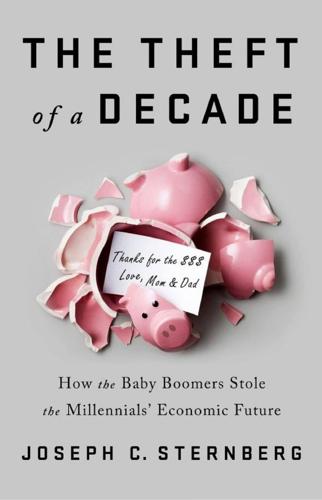
The Theft of a Decade: How the Baby Boomers Stole the Millennials' Economic Future
by
Joseph C. Sternberg
Published 13 May 2019
I’m using here one productivity measure—output per hour worked—that is cruder than some others. Economists also often consider measures of labor and capital productivity separately (how much more output does one additional hour of labor produce, versus one additional dollar’s worth of machinery?), and then can also estimate “total-factor productivity,” which includes non–capital and labor factors such as the quality of roads around a factory that might influence how efficiently the owners can ship the factory’s products to customers. Those measures can be useful in some contexts, but for purposes of this discussion I think they tend to provide a false sense of precision regarding what economists do and don’t know about what drives changes in productivity
…
See Affordable Care Act/Obamacare Ocasio-Cortez, Alexandria election to Congress, 211 as Millennial, 211, 219 policy positions/views, 211, 222 taxes and, 195, 197 Occupy Wall Street movement, 130, 214 Ohio Public Employee Retirement Systems (OPERS), 175 Once and Future Worker, The (Cass), 58 Operation Twist, 134 Organization for Economic Cooperation and Development, 61 O’Rourke, Beto, 214 Patel, Suraj, 219 Paul, Ron, 222 Paulson, Hank, 129, 131 peace dividend, 151 Pell Grant program, 97, 99, 100 pension/plans Boomers and, 121, 159, 221 Detroit city government example, 175 European countries, 183, 196, 198, 199, 200 Germany/Millennials and, 199, 200 Japan and, 203, 205, 208n mid-twentieth century, 49 Millennials (US) and, 79–80, 81, 81n, 82 Ohio example, 175 problems with state/local government plans, 150, 158–159, 175 trend in private work, 158 Perot, Ross, 217 politics and Millennials 2018 midterm elections, 213 first nationally-elected officials, 211–212 fixing problems and, 213–214 House Member age statistics, 212 interns and, 213 party support/political views and, 214–216, 217–219, 222–223 political influence and, 213 state offices, 212 stereotypes, 214 trade policy, 217–218 voting and, 213 wants, 220–223, 232–236 working economy, 220–221 Powell, Jerome, 231–232 productivity by the 1970s, 48 investment and, 16, 49 measuring, 48n “qualified mortgage” (QM) standard, 139–140 quantitative easing description, 133 Federal Reserve and, 18–19, 60 housing/global financial crisis, 133, 135, 136, 137 Reagan, Ronald economic policies, 24, 52–54 fixed investment, 53 supply-side economics and, 52, 54–55, 58 support for, 20 taxes and, 52 recession postwar period, 62 See also financial crisis/Great Recession regulation (financial) changes/consequences, 56–57 during Reagan administration, 52, 54 regulations and Trump, 229–230, 234 religion and Millennials, 216–217 Resolution Foundation think tank, 178 retirement finances 401 (k) plans, 80 Millennials as “retirement plans” for parents, 145 Millennials/savings and, 79, 80–81 See also pension/plans; Social Security Revolutionary War/state debts, 147, 147n Romney, Mitt as candidate, 215, 225 manufacturing background, 232n youth vote, 215 Rubin, Robert, 54–55 “Rubinomics” program, 54–55, 124 Ryan, Paul, 231 S&P 500, 10 Sanders, Bernie description/political party and, 219, 222 Millennial support, 195, 214, 219 taxes, 173, 195, 197 savings/Millennials college-educated Millennials and, 78–79 debt and, 81n, 82 defined-contribution plans, 80 description/overview, 77–83 emergency-lending facility use and, 78 job market and, 79 obsession and, 79 parents vs., 77 pension plans and, 79–80 retirement finances and, 79, 80–81 Social Security benefits and, 82–83 statistics on, 78–79, 80–83, 83n Wall Street payback and, 83 worries about, 81–82 Say, Jean-Baptiste, 50n Say’s Law, 50n Schock, Aaron, 211–212 Second Machine Age, The (Brynjolfsson and McAfee), 41 self-employment trends (since 2000), 71 See also gig economy September 11 terror attacks/consequences, 57, 152 Shapiro, Ben, 215, 224–225 “sheepskin effect,” 90 Sixteenth Amendment, 148 Smith, Brad, 71–72 SNAP (Supplement Nutrition Assistance Program), 164 social capital, 22 social programs/benefits consequences/Mulligan and, 165–166 financial crisis and, 163–165 Social Security beginnings, 149 financial problems/Millennials and, 153–161 housing and, 114n insurance comparisons, 154, 157–158 Millennial expectations, 82–83 Millennial resources and, 142 taxes and, 150n, 196 See also entitlements for elderly solar panels installation, 28 Spain and financial crisis, 180 steel industry (1970s to 1990s), 50–51 stock market crash (1929), 10 financial crisis, 10 Strauss, William, 6–7 “structural deficits,” 150–151, 151n Supplement Nutrition Assistance Program (SNAP), 164 supply-side economics, 52, 54–55, 58 TANF, 164 TARP (Troubled-Asset Relief Program), 59, 130, 130n taxes on capital/consequences, 53 Clinton and, 55, 152 cuts with Great Recession, 163 inflation as, 207 myth on, 195 national consumption tax and, 173–174 politicians in Germany/US and, 197 Reagan and, 52 Republicans and, 174 Sixteenth Amendment, 148 tax wedge, 183 Trump and, 227–228 Tea Party movement, 130, 231 technology labor and (mid-twentieth century), 49 role in economic problems, 234–235 See also computer/information technology Thatcher, Margaret, 189 “total-factor productivity,” 48n total number of hours worked in 1970s, 47 as measure of labor market, 47 trade policy and Millennials, 217–218 training investing less, 17, 69, 88 investing more, 228 Millennials wanting, 29, 72 See also internships/Millennials Troubled-Asset Relief Program (TARP), 59, 130, 130n Trump, Donald Affordable Care Act and, 68 description, 19 entitlements and, 231 immigration and, 225–226 interest rates/Federal Reserve and, 19, 231–232 Japan/foreign competition and, 202, 217–218, 225 Millennials and, 214, 215, 217, 224, 225–232 real estate background and, 232n regulations and, 229–230, 234 taxes, 227–228, 234 traits/character, 224 unemployment rate and, 226 Uber, 70, 70n unemployment Britain/Millennials and, 189 NEETs, 181 unemployment-assistance programs (US) creation, 149 financial crisis and, 164 unemployment rate (US) in 1950s and 1960s, 47 in 1970s, 47 in 1980s, 54 changes post-2008 decade, 30, 33 description, 30 global financial crisis/recovery and, 11, 12, 13 Millennials and, 42 Trump and, 226 See also labor-force participation rate union power other countries and, 186 in US, 49, 49n United Kingdom minimum wage, 184 Urban Institute, 139 US Bureau of Labor Statistics, 28, 30, 37, 47 Vance, J.

The Sirens' Call: How Attention Became the World's Most Endangered Resource
by
Chris Hayes
Published 28 Jan 2025
But both before that relatively short period and since, productivity growth has been underwhelming, and nowhere near the explosive rates of the middle of the twentieth century, particularly from 1920 to 1970. What has been hyped as a transformational revolution ends up, when compared to the previous era, a bit of a letdown—at least when it comes to growth. Economists measure productivity in a bunch of ways, but the most capacious measure is “total factor productivity,” which measures not just labor productivity—how many widgets an hour a given worker can produce—but all productivity across all factors of production: how many widgets an hour the entire factory can produce. During the most productive ten-year period of the information age, 1994–2004, the annual growth rate was barely over 1 percent.
…
See also specific companies tedium, 66–68, 72 Tencent Holdings Ltd., 15 theater and collective attention, 145–46 Things They Carried, The (O’Brien), 42 Third Wave, The (Toffler), 155–56 thirst, 88, 96, 108–9, 139 thirst traps, 108–9 30 Rock (TV show), 100 Thoreau, Henry David, 9 TikTok, 53, 129, 151–52, 160, 218, 254–55, 267–68 Times Square, 46, 50, 135, 136, 143 Titanic, RMS, 222 Titan submersible explosion, 221–23, 224–25 tobacco, 10–11, 64 Tocqueville, Alexis de, 84 Toffler, Alvin, 155–56, 163–64 “Too Much Information” (song), 163–64 “total factor productivity,” 168–69 trade, 16, 265 trolling, 231–37 Trumbull, Lyman, 197 Trump, Donald, 139, 140, 196, 210–17 attention and, 112–13, 210–17, 231 conspiracism and, 243, 244–45 election of 2016, 211, 212, 213–14 election of 2020, 141–42, 214, 217, 243, 244–45 first impeachment of, 228–29 Israel-Hamas war, 247 trolling and, 231, 232, 235 whataboutism and, 239 Trump Muslim ban, 214 trust/distrust, 22, 123, 141, 170, 213 tu quoque, 238 TV (television), 19, 149–50, 201, 206, 207–10.
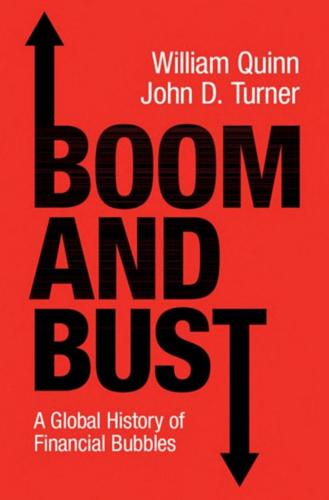
Boom and Bust: A Global History of Financial Bubbles
by
William Quinn
and
John D. Turner
Published 5 Aug 2020
The Economist, 20 November 1847, p. 1,334. 80. Eatwell, ‘Useful bubbles’. 81. Lardner, Railway Economy, p. 49. 82. Hawke, Railways and Economic Growth; Leunig, ‘Time is Money’. 83. Leunig, ‘Time is money’. 84. Casson, ‘The efficiency of the Victorian British railway network’. 85. Crafts, Mills and Mulatu, ‘Total factor productivity growth’. 235 NOTES TO PAGES 77–83 CHAPTER 5: OTHER PEOPLE’S MONEY: THE AUSTRALIAN LAND BOOM 1. Cork, ‘The late Australian banking crisis’, 177. 2. Cannon, The Land Boomers, p. 43. 3. Davison, The Rise and Fall of Marvellous Melbourne. 4. See Butlin, ‘The shape of the Australian economy’; Kelley, ‘Demographic change’. 5.
…
‘The late Australian banking crisis’, Journal of the Institute of Bankers, 15, 175–261, 1894. Costeloe, M. P. ‘William Bullock and the Mexican connection’, Mexican Studies, 22, 275–309, 2006. Costigliola, F. ‘The United States and the reconstruction of Germany in the 1920s’, Business History Review, 50, 477–502, 1976. Crafts, N. F. R., Mills, T. C. and Mulatu, A. ‘Total factor productivity growth on Britain’s railways, 1852–1912: a reappraisal of the evidence’, Explorations in Economic History, 44, 608–34, 2007. Dale, R. The First Crash: Lessons from the South Sea Bubble. Princeton University Press, 2004. Dale, R. S., Johnson, J. E. V., and Tang, L. ‘Financial markets can go mad: evidence of irrational behaviour during the South Sea Bubble’, Economic History Review, 58, 233–71, 2005.
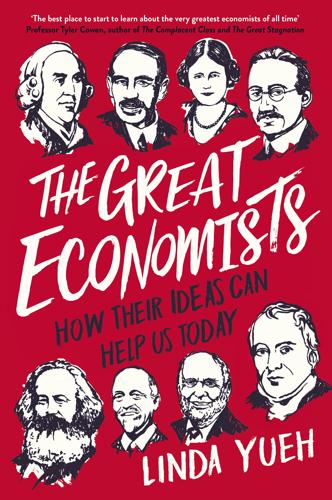
The Great Economists: How Their Ideas Can Help Us Today
by
Linda Yueh
Published 15 Mar 2018
Diminishing returns happen when a worker is given more than, say, two computers; that worker won’t produce as much with the third computer as compared with the first two unless there is better software that allows computing to be done without the person using it all the time. Technological progress allows the existing inputs of workers and capital to be used more efficiently. An increase in output due to technology is referred to as total factor productivity (TFP) in economic growth models. Physical capital as well as human capital – the skills and education of workers – are central to this model. It’s especially pressing for rich countries, where the working-age population is ageing or even shrinking and having better-skilled workers is even more important.
…
Of course, it also captures anything else not related to inputs of labour and investment, so temporary rises in government spending and monetary easing also get included. It means that some, but not all, of what is captured in the Solow residual is the productivity advancing technology needed to sustain economic growth over the longer term. This is the TFP (total factor productivity) mentioned earlier. Across countries, there is a clear association between periods of high output growth and significant technological progress. Developed nations all grew well between 1950 and 1973, and then slowed together during 1974–87. There seems to be a connection with the adoption of similar technologies.

Tyler Cowen - Stubborn Attachments A Vision for a Society of Free, Prosperous, and Responsible Individuals
by
Meg Patrick
The global poor also benefit from new medicines, new global technologies, and research and development efforts, all of which are the product of wealth. Elhanan Helpman (2004, p.84) summarizes: “the main finding -- that R&D capital stocks of trade partners have a noticeable impact on a country's total factor productivity -- appears to be robust... [consider] a coordinated permanent expansion of R&D investment by 1/2 of GDP in each of twenty-one industrial countries. The U.S. output grows by 15 percent, while Canada's and Italy's output expands by more than 25 percent. On average the output of all the industrial countries rises by 17.5 percent.

The Fourth Industrial Revolution
by
Klaus Schwab
Published 11 Jan 2016
As we live in a society where more than a quarter of the children born today in advanced economies are expected to live to 100, we will have to rethink issues such the working age population, retirement and individual life-planning.16 The difficulty that many countries are showing in attempting to discuss these issues is just a further sign of how we are not prepared to adequately and proactively recognize the forces of change. Productivity Over the past decade, productivity around the world (whether measured as labour productivity or total-factor productivity (TFP)) has remained sluggish, despite the exponential growth in technological progress and investments in innovation.17 This most recent incarnation of the productivity paradox – the perceived failure of technological innovation to result in higher levels of productivity – is one of today’s great economic enigmas that predates the onset of the Great Recession, and for which there is no satisfactory explanation.
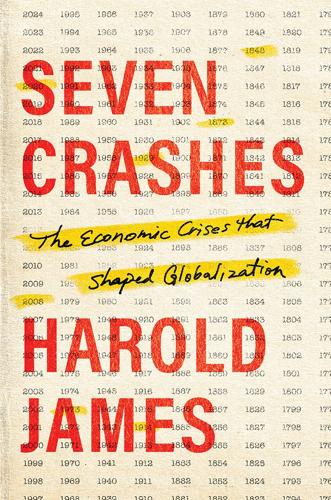
Seven Crashes: The Economic Crises That Shaped Globalization
by
Harold James
Published 15 Jan 2023
The second looks like a mirror image: the inverted ⋂ of American productivity growth, or of the productive potential of the world’s leading and most dynamic economy. In the interwar period, notwithstanding the Great Depression, productivity surged, and the Second World War pushed that growth even faster. Then after the 1970s there was a slowdown, and as the economist Robert Gordon analyzed it, total-factor productivity grew only at a third of the extraordinary rate achieved between 1920 and 1970.130 There are three explanations for the interlocking U-curves: technical change, war, and the logic of deglobalization. In the first place, the extraordinary American development of the mid-century was driven by dramatic technical change (see Figure 4.2).
…
In urban settings, by the late 1930s almost all American households had electricity connected, 94 percent had piped water and sewage pipes for waste, 80 percent had interior flushing toilets, 58 percent had central heating, and 56 percent had refrigerators. Households installed washing machines. In the countryside, the tractor revolutionized productivity. Figure 4.2. Annual growth rate of total-factor productivity in the United States for the preceding ten years, 1900 –2012 (Data from Robert J. Gordon, “The Turtle’s Progress: Secular Stagnation Meets the Headwinds,” in Coen Teulings and Richard Baldwin, ed., Secular Stagnation: Facts, Causes and Cures [London: CEPR, 2014], 53) The trauma of the Great Depression did not slow down the American invention machine.

The Tyranny of Nostalgia: Half a Century of British Economic Decline
by
Russell Jones
Published 15 Jan 2023
GDP per capita expanded on average by just over 2% per annum, compared with a figure of 1.5% per annum between 1973 and 1979 and an average elsewhere of just under 2%. Britain did, therefore, close its long-standing ‘productivity gap’ somewhat. As discussed above, detailed analysis suggests that much of this can be traced to higher total factor productivity, or efficiency in factor usage, rather than to increased capital accumulation or technological proficiency, where Britain remained something of a laggard. All this said, there is always a strong cyclical element to productivity, as employment tends to lag output. This flattered the improvement in productivity between 1981 and 1989 just as it had exaggerated the initial decline in productivity in 1979–80.
…
No one explanation is sufficient, and the impact of some of those listed below continues to attract controversy among economists. To come to terms with them it is useful to remember that labour productivity growth is determined by two considerations. First, there is the ratio of capital employed to the total number of hours worked, commonly referred to as ‘capital deepening’. And second, there is total factor productivity (TFP), or the overall efficiency with which inputs are converted into output. Both of these factors appear to have played a role in the UK’s predicament, but slower TFP seems to have been the dominant consideration, at least beyond the early stages of the productivity shortfall. Many firms appear to have held on to labour, and especially skilled labour, during the crisis and in its immediate aftermath, thereby slowing capital deepening.

Same as Ever: A Guide to What Never Changes
by
Morgan Housel
Published 7 Nov 2023
But there’s another story about the 1930s that rarely gets mentioned: it was, by far, the most productive and technologically progressive decade in U.S. history. The number of problems people solved, and the ways they discovered how to build stuff more efficiently, is a forgotten story of the ’30s that helps explain a lot of why the rest of the twentieth century was so prosperous. Here are the numbers: total factor productivity—that’s economic output relative to the number of hours people worked and the amount of money invested in the economy—hit levels not seen before or since. Economist Alex Field wrote that by 1941 the U.S. economy was producing 40 percent more output than it had in 1929, with virtually no increase in the total number of hours worked.
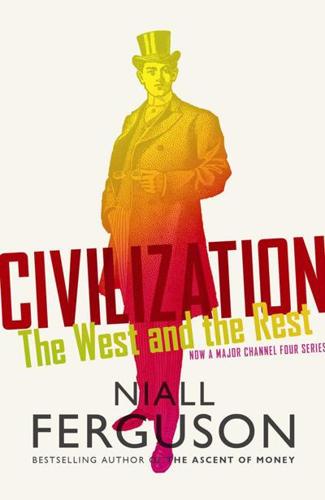
Civilization: The West and the Rest
by
Niall Ferguson
Published 28 Feb 2011
We also tried to dye them but it was also very difficult to get your hands on dye … They were so popular that people snatched them from our hands.106 The critical point was that the success of Western consumer industries was now matched, mirror-like, by the miserable underperformance of their Soviet counterparts. Not only was growth now vanishingly low after 1973 (below 1 per cent); total factor productivity was declining. Some state enterprises were actually subtracting value from the raw materials they processed. Just as Hayek had warned, in the absence of meaningful prices, resources were misallocated; corrupt officials restricted output to maximize their own illicit gains; workers pretended to work and, in return, managers pretended to pay them.
…
I, ch. 13. 39. Schorske, Fin-de-Siècle Vienna. 40. H. C. Martin, ‘Singer Memories’: http://www.singermemories.com/index.html. 41. Maddison, World Economy, tables B-10, B-21. 42. Kennedy, Rise and Fall, p. 190. 43. Bairoch, ‘International Industrialization Levels’. 44. Broadberry, ‘Total Factor Productivity’. 45. Fordham, ‘ “Revisionism” Reconsidered’. 46. Clark and Feenstra, ‘Technology in the Great Divergence’, table 8. 47. Dyos and Aldcroft, British Transport, table 4. 48. Maurer and Yu, Big Ditch, p. 145. 49. Clark and Feenstra, ‘Technology in the Great Divergence’. 50.

The Technology Trap: Capital, Labor, and Power in the Age of Automation
by
Carl Benedikt Frey
Published 17 Jun 2019
Giuliano, 1982, “The Mechanization of Office Work,” Scientific American 247 (3): 148–65. 43. On the term “pink collar,” see A. J. Cherlin, 2013, Labor’s Love Lost: The Rise and Fall of the Working-Class Family in America (New York: Russell Sage Foundation), 119. 44. A. J. Field, 2007, “The Origins of US Total Factor Productivity Growth in the Golden Age,” Cliometrica 1 (1): 89. See also A. J. Field, 2011, A Great Leap Forward: 1930s Depression and U.S. Economic Growth (New Haven, CT: Yale University Press). 45. G. P. Mom and D. A. Kirsch, 2001, “Technologies in Tension: Horses, Electric Trucks, and the Motorization of American Cities, 1900–1925,” Technology and Culture 42 (3): 489–518. 46.
…
Journal of Economic History 58 (3): 625–58. Ferguson, N. 2012. Civilization: The West and the Rest. New York: Penguin. Ferrer-i-Carbonell, A. 2005. “Income and Well-Being: An Empirical Analysis of the Comparison Income Effect.” Journal of Public Economics 89 (5–6): 997–1019. Field, A. J. 2007. “The Origins of US Total Factor Productivity Growth in the Golden Age.” Cliometrica 1 (1): 63–90. Field, A. J. 2011. A Great Leap Forward: 1930s Depression and U.S. Economic Growth. New Haven, CT: Yale University Press. Fielden, J. 2013. Curse of the Factory System. London: Routledge. Finley, M. I. 1965. “Technical Innovation and Economic Progress in the Ancient World.”
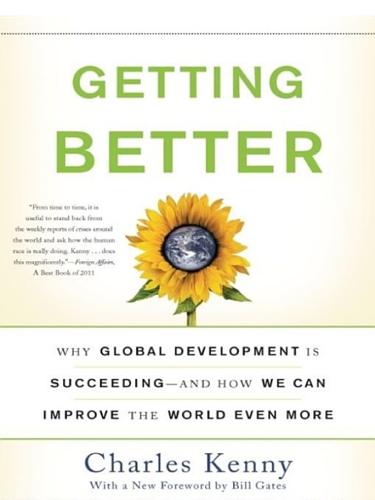
Getting Better: Why Global Development Is Succeeding--And How We Can Improve the World Even More
by
Charles Kenny
Published 31 Jan 2011
Washington, DC: World Bank. Fay, M. 1993. “Illegal Activities and Income Distribution: A Model with Envy.” Mimeo, Columbia University. Fay, M., and C. Opal. 2000. “Urbanization Without Growth: A Not So Uncommon Phenomenon.” World Bank Policy Research Working Paper 2412. Felipe, J. 1999. “Total Factor Productivity in East Asia: A Critical Survey.” The Journal of Development Studies 35, no. 4. Ferguson, N. 2001. The Cash Nexus: Money and Power in the Modern World 1700–2000. London: Allen Lane. ———. 2005. “Africa Doesn’t Need Handouts: It Needs Honest Governments.” The Telegraph, March 2, 2005. Field, E., O.
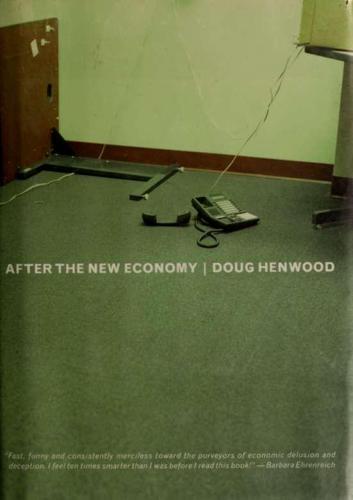
After the New Economy: The Binge . . . And the Hangover That Won't Go Away
by
Doug Henwood
Published 9 May 2005
Clothaire, 146 Reagan, Ronald, 8 recessions, political purpose, 182 regionahzation, 159 Reich, Robert, 71,74 retail trade, 64-66 Riflcin, Jeremy, 68 Robinson, Joan, 235 Robinson, William, 175-176 Rockefeller, David, 232 Rubin, Robert, 218 ruling class, global, 174—178 Russell, Marta, 100 sad militants, 185 Sakakibara, Eisuke, 228 Index Sale, Kirkpatrick, 168 Salomon Smith Barney, 197 scale, economic, 167-168 Scandinavia, very wired, 6 Schama, Simon, 23 Schrager, Ian, 233 Schwab, Klaus, 175-178 Seattle, anti-WTO protests, 32,160 sex, Gilder on, 11—13 sexual preference and pay, 100 sex discrimination, 94—101 international comparisons, 101—102 Shakespeare, 188 shareholder activism, 214 Shiller, Robert, 6-8,25-27,194 Shiva, Vandana, 162,168-169 Shorrock.Tim, 171 Sichel, Daniel, 57 Silicon Valley, income distribution, 105 Silicon Valley Toxics CoaUtion, 232 Sinai, Allen, 4 Singhne, Peter, 18 Skilhng, Jeffirey, 33 skills, job, 73-77 returns to, 86—87 skin shade and pay, 99 Smith, Adam, 109-110, 163,173 Smith, Patti, 183 Smith, Paul, 6 social democracy, 139-143,182 social movements, new, 179 Social Security, 227 Solow, Robert, 3 sovereignty, 170 space, shrinkage of, 146 speedup, 215, 229 Spencer, Herbert, 37 state, retreat of, 150-152 Stigbtz, Joseph, 193 Stiroh,Kevin,51,57 stock market 1990s bubble, history, 188-189 analysts' role, 194—200 anomalies, 194 book value, defined, 233 brokers' fees and salaries, 201-202 and corporate profitability, 203—204 and corporate restructuring, 214-215 economics of, 187-188,192-195 and evolution of the corporation, 212-217 excess volatiHty, 194 happiness of investors, 212 and managers' pay, 216—217 and pop culture, 187 psychology of, 25—26 trading frequency and returns, 190—191, 234,239 wisdom of, 35 see also finance stock options, 216—217 and wealth distribution, 126—127 stock ownership, distribution of, 24, 122-124 stress, management by, 25 stylish shoes, 165 Summers, Lawrence, 5,231 surveillance, 68,77—78 Survey of Consumer Finances, 118—119 Survey of Income and Program Participation, 118 symbolic analysts, 71,72 synergy vs. conflict, 197-200 Taylorism, 78 technology not evil, 2 and social movements, 179 telecommunications industry, 196—198 telegraph, 7 telemarketers, 68 TheGlobe.com, 189 269 TheStreet.com, 31 dme, acceleration of, 146 Tocqueville, Alexis de, 82,139 Tompkins, Doug, 161-162 total factor productivity. See Productivity transnational capitalist class, 175—176 transnational corporations. See multinational corporations transparency, 223 Triplett, Jack, 51,55 tulip-bulb mania, 23 unemployment, political uses of, 206—207 U.S. Agency for International Development, 163 U.S. Census Bureau, 88-89 utopianism.

Give People Money
by
Annie Lowrey
Published 10 Jul 2018
” * * * Still, despite the creation of AI and the concern about the future of human labor, the arguments for implementing a UBI to ward off technological unemployment felt hyperbolic—or at least premature—to me. If technology were rapidly improving and putting workers out of their jobs, there would be an easy way to see it in our national statistics. It would be evident in something called “total factor productivity,” sometimes referred to as the “Solow residual.” We would expect a factory to produce more widgets if its owner bought a new widget-pressing machine. We would expect a factory to produce more widgets if it hired more workers, and had them toil for more hours. TFP growth occurs when factory workers figure out how to get more widgets out of their widget presses without buying new machinery or increasing their hours.

Cogs and Monsters: What Economics Is, and What It Should Be
by
Diane Coyle
Published 11 Oct 2021
Endogenous growth theory (Romer 1994) puts increasing returns at the heart of the process of growth over time, through knowledge generated in one firm spilling over to others. But this important insight has had a perhaps surprisingly limited impact. In particular, the workhorse growth accounting approach to the measurement of total factor productivity assumes constant returns to scale at an aggregate level. Part of the ‘productivity puzzle’ is that in the constant-returns world assumed in these growth accounting exercises, there is no reason for firms to have significantly reorganised production; yet they have. Economists studying digital markets and technology (Arthur 1994) and economic geographers exploring agglomeration effects—more powerful in the modern economy than the old (Autor 2019)—have also necessarily engaged with the kind of dynamic behaviour that occurs in the context of increasing returns.
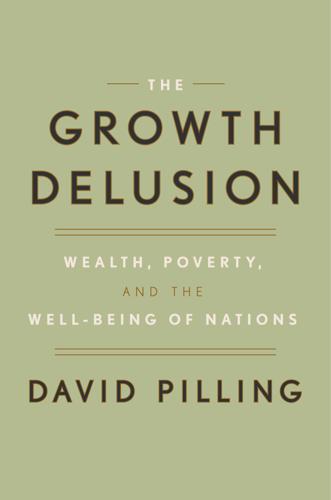
The Growth Delusion: Wealth, Poverty, and the Well-Being of Nations
by
David Pilling
Published 30 Jan 2018
Kyoji Fukao, a professor at Hitotsubashi University’s Economic Research Institute, helped provide much of the Japanese data that went into the international comparisons used by McKinsey and others. He agreed that the usual measures of service-sector efficiency—value added per man hour and total factor productivity, which incorporates capital and labor inputs—were crude and difficult to apply across borders. Fukao gave the example of Japan’s retail sector, lambasted for its inefficiency in the McKinsey report. The basic measure of retail-sector productivity is how much of a product an employee can shift in an hour.

The Knowledge Economy
by
Roberto Mangabeira Unger
Published 19 Mar 2019
Under Alvin Hansen’s old label of “secular stagnation,” many economists have proposed to explain in recent years the persistent slowdown of economic growth. The figures measuring the growth of productivity chart the dimension of this slowdown. Consider the well-studied example of the US economy. From 1947 to 1972, labor productivity, which roughly tracks total factor productivity, rose in the United States by an average of 2.8 percent a year; from 1972 to 1994 by 1.5 percent a year; from 1994 to 2005 by 2.8 percent a year; and from 2005 to the present by 1.4 percent a year. After a period of slow growth, productivity spiked in 1994–2005 and then fell back again. The slowdown in the growth of productivity since 1972, interrupted only by the turn-of-the-century spike, has been attributed to many of the factors emphasized by Hansen in the 1930s: the decline of population growth, the inadequacy of aggregate demand, and a “savings glut”—an excess of savings over consumption.
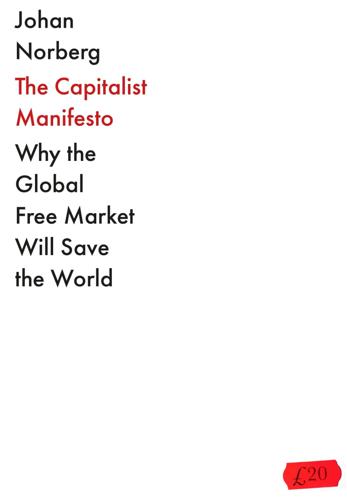
The Capitalist Manifesto
by
Johan Norberg
Published 14 Jun 2023
After the financial crisis, the economy was sustained through massive government investment, but since it was not supplemented by increased productivity and innovation, ever more money is needed to get any growth out of it. After rising 1.1 per cent annually from 1982 to 2010, growth in total factor productivity (what you can squeeze out of the resources you use) declined by 0.6 per cent during the period 2011–2019.21 In addition, the working-age population is declining and any time now the population as a whole will start declining as well. China can no longer build its economy on rural farmers moving into factories, or its housing boom on more of the population moving into brand-new apartments in cities.

The Rise of the Network Society
by
Manuel Castells
Published 31 Aug 1996
Overall, there was a moderate rate of growth of productivity for the 1870–1950 period (never surpassing 2 percent for any country or subperiod, except for Canada), a high rate of growth during the 1950–73 period (always over 2 percent, except for the UK) with Japan leading the charge; and a low growth rate in 1973–93 (very low for the US and Canada), always below 2 percent in total factor productivity, except for Italy in the 1970s. Even if we account for the specificity of some countries, what appears clearly is that we observe a downward trend of productivity growth starting roughly around the same time that the information technology revolution took shape in the early 1970s. Highest growth rates of productivity took place during the 1950–73 period when industrial technological innovations which came together as a system during the Second World War were woven into a dynamic model of economic growth.
…
But by the early 1970s, the productivity potential of these technologies seemed to be exhausted, and new information technologies did not appear to reverse the productivity slowdown for the next two decades.15 Indeed, in the United States, the famous “residual”, after accounting for about 1.5 points of annual productivity growth during the 1960s, made no contribution at all in 1972–92.16 In a comparative perspective, calculations by the reliable Centre d’Etudes Prospectives et d’Informations Internationales17 show a general reduction of total factor productivity growth for the main market economies during the 1970s and 1980s. Even for Japan, the role of capital in productivity growth was more important than that of multifactor productivity for the 1973–90 period. This decline was particularly marked in all countries for service activities, where new information-processing devices could be thought to have increased productivity, if the relationship between technology and productivity were simple and direct.

The Age of Stagnation: Why Perpetual Growth Is Unattainable and the Global Economy Is in Peril
by
Satyajit Das
Published 9 Feb 2016
In recent years it has slowed to around 1 percent. The decline in other developed countries, especially Europe, has been greater. Emerging nations have higher but declining rates of productivity increases. Improvements in labor productivity, which measures output produced per unit of labor, and total factor productivity, which takes into account the combined input of labor and capital, have both declined, with the latter declining more sharply. Even recent modest gains in productivity may be overstated. Increased output in sectors like financial services, education, hospitality, healthcare, aged care, or government may not equate to real improvements.

Straight Talk on Trade: Ideas for a Sane World Economy
by
Dani Rodrik
Published 8 Oct 2017
In India, rapid growth is also underpinned by a substantial increase in overall investment, which now stands at around one-third of GDP. Much of this increase has come from private sources, as the shackles on the business sector were gradually relaxed since the early 1980s. But the public sector continues to play an important role. The government has had to step in as both private investment and total factor productivity growth have faltered in recent years. These days it is public investment on infrastructure that helps maintain India’s growth momentum. “I think two sectors holding back the economy are private investments and exports,” says the government’s chief economic adviser Arvind Subramanian. “That is why … public investment is going to fill in the gap.”5 Turning to Latin America, Bolivia is one of the rare mineral exporters that has managed to avoid the fate of others in the current downturn of the commodity cycle.
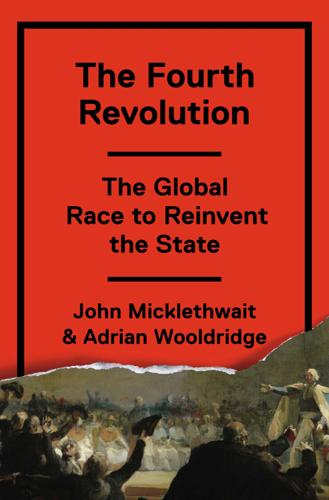
The Fourth Revolution: The Global Race to Reinvent the State
by
John Micklethwait
and
Adrian Wooldridge
Published 14 May 2014
“Leviathan as a Minority Shareholder: A Study of Equity Purchases” by the Brazilian National Development Bank (BNDES) 1995–2003, Harvard Business School, working paper. 38. Adrian Wooldridge, “The Visible Hand: A Special Report on State Capitalism,” The Economist, January 21, 2012. An OECD paper in 2005 noted that the total-factor productivity of private companies is twice that of state companies. A study by the McKinsey Global Institute in the same year found that companies in which the state holds a minority stake are 70 percent more productive than wholly state-owned ones. 39. Shambaugh, China Goes Global, p. 254. 40.
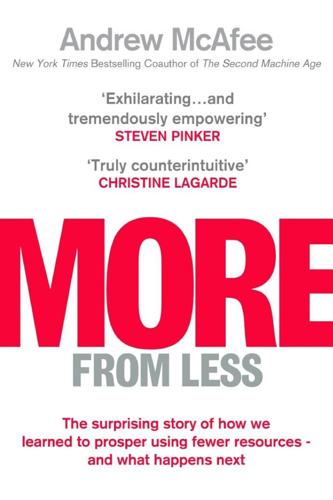
More From Less: The Surprising Story of How We Learned to Prosper Using Fewer Resources – and What Happens Next
by
Andrew McAfee
Published 30 Sep 2019
To get the same harvest, homesteaders use more land, water, and fertilizer than do “factory farmers.” Farms of less than one hundred acres, for example, grow 15 percent less corn per acre than farms with more than a thousand acres. And bigger farms get better faster. Between 1982 and 2012 farms under one hundred acres grew their total factor productivity by 15 percent, whereas farms over a thousand acres grew theirs by 51 percent. So more homesteaders would have meant more land under cultivation, more water and fertilizer used, and so on. Second, rural life is less environmentally friendly than urban or suburban dwelling. City folk live in high-density, energy-efficient apartments and condos, travel only short distances for work and errands, and frequently use public transportation.

The Meritocracy Trap: How America's Foundational Myth Feeds Inequality, Dismantles the Middle Class, and Devours the Elite
by
Daniel Markovits
Published 14 Sep 2019
The productivity of labor grew by nearly 30 percent in the 1960s, and then by just 19 percent, 16 percent, 20 percent, and 25 percent in the 1970s, 1980s, 1990s, and 2000s respectively (growth rates calculated using data form the Bureau of Labor Statistics, Major Sector Productivity and Costs, Nonfarm Business Labor Productivity (output per hour) series PRS85006092). Most significantly, total factor productivity—the portion of output not accounted for by conventional inputs (of capital and labor)—has again grown more slowly during the recent decades of rising economic inequality than it did during the relatively more egalitarian decades at midcentury: growing by just 0.9 percent annually between 1980 and 2009, compared to 1.0 percent between 1950 and 1969. (The dividing decade between the two eras, the 1970s, showed truly anemic growth.) See “Total Factor Productivity at Constant National Prices for the United States,” St.

The New Harvest: Agricultural Innovation in Africa
by
Calestous Juma
Published 27 May 2017
Between 1985 and 2006, total agricultural production grew by 77%, largely due to effective public investments in science and technology, combined with an environment of economic liberalization and stability.36 In particular, the rapid modernization of agriculture observed in the 1970s and early 1980s was largely a result of “coordinated policies that led to increased R&D capacity and increased volumes of credit, tied to support policies of stock management, improved distribution and commercialization of food and agro industrial products.”37 During the agricultural reforms of the last few decades, the Brazilian Agricultural Research Corporation (EMBRAPA), an 114 THE NEW HARVEST agricultural research agency funded by the Ministry of Agriculture and Food Supply, was instrumental in boosting Brazilian total factor productivity growth. The agency was initially responsible for providing extension services for the distribution of technological packages, such as new seeds, soil correction techniques, and improved production practices, but later expanded to also develop high-yielding and disease-resistant crops. EMBRAPA was an institutional innovation designed to respond to a diversity of agricultural needs over a vast geographical area.
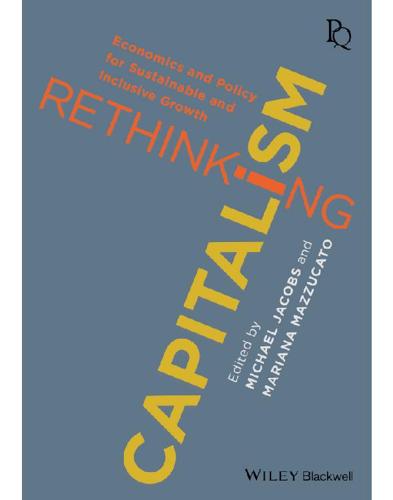
Rethinking Capitalism: Economics and Policy for Sustainable and Inclusive Growth
by
Michael Jacobs
and
Mariana Mazzucato
Published 31 Jul 2016
Orthodox economics has long struggled to deal appropriately with the role of natural resources in the economy. Decades of low and decreasing costs of energy and raw materials made it seem reasonable to ignore their impact, and thus both the concepts of output per hour and of the ambitiously named ‘total factor productivity’ fail to measure the productivity of resources. Nor have many attempts been made to incorporate the role of innovation in resource use. In 1956, Solow proposed that the nature of technology should be recognised as being wider than just the contributions of capital and labour, measuring its total contribution as the unexplained ‘residual’ after those had been taken into account.4 Half a century later, with environmental and energy issues becoming pressing concerns, Ayers and colleagues suggested introducing the efficiency of energy into the models.5 But such approaches do not go very far in analysing the role of concrete innovations in productivity and growth, much less in guiding growth and employment policy.
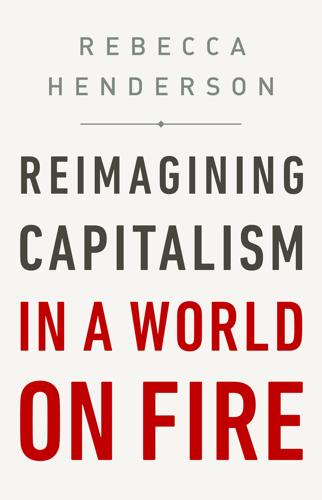
Reimagining Capitalism in a World on Fire
by
Rebecca Henderson
Published 27 Apr 2020
Children who don’t receive an adequate supply of basic nutrients in their first few days of life suffer cognitive and emotional damage that cannot later be repaired. World Bank, World Development Report 2018. 7. F. Alvaredo, L. Chancel, T. Piketty, E. Saez, and G. Zucman, World Inequality Report 2018 (Cambridge, MA: The Belknap Press of Harvard University Press, 2018). 8. “Total Factor Productivity at Constant National Prices for United States,” FRED, June 11, 2019, https://fred.stlouisfed.org/series/RTFPNAUSA632NRUG. 9. Lawrence Mishel and Jessica Schieder, “CEO Compensation Surged in 2017,” Economic Policy Institute 16 (2018). 10. Lyndsey Layton, “Majority of U.S. Public School Students Are in Poverty,” Washington Post, Jan. 16, 2015, www.washingtonpost.com/local/education/majority-of-us-public-school-students-are-in-poverty/2015/01/15/df7171d0-9ce9-11e4-a7ee-526210d665b4_story.html. 11.

The Elusive Quest for Growth: Economists' Adventures and Misadventures in the Tropics
by
William R. Easterly
Published 1 Aug 2002
I use a capital share of0.4 as Lucas did. The ratio of capital stocks would have to be (15)"(1/.4), which is 871. 15. Pritchett 199%. 16. Baumol1986. 17. De Long 1988. 18. See also the study by Pack and Page 1994, which also gave an important role to capital accumulation and showed a fairly low total factor productivity growth estimate for Singapore. 19. Klenow and Rodriguez-Clare 1997 20. Easterly and Levine 2000. 21. Data from King and Levine 1994. 22. Devarajan, Easterly, and Pack 1999. 23. Hsieh 1999 24. World Bank, 1995a, p. 35. Notes 298 Intermezzo: Dry Cornstalks 1. Tremblay. and Capon 1988, pp. 197-198.

Hopes and Prospects
by
Noam Chomsky
Published 1 Jan 2009
To mention one, international economist David Felix shows that trade growth slowed in the neoliberal period in the rich (G-7) societies (with the sole exception of the United States, which had been well below the G-7 average). The same is true of growth of gross fixed investment. Capital flow of course sharply increased, but “the flows have been transferring ownership but little real resources on balance.” Furthermore, “the growth of labor, capital, and total factor productivity have all fallen precipitously since the 1960s in the OECD [Organisation for Economic Co-operation and Development] countries.”11 In brief, the twenty-five years of economic sovereignty, state-coordinated economic growth, and capital controls under the Bretton Woods system led to better social and economic results than the following twenty-five years of neoliberalism, by just about every relevant measure, and by significant margins.
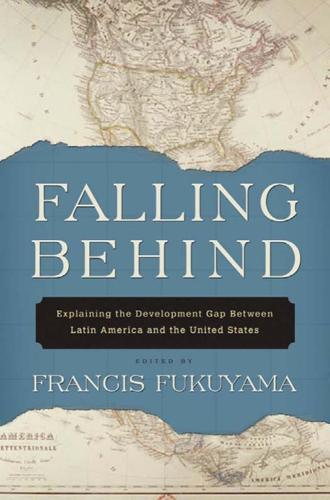
Falling Behind: Explaining the Development Gap Between Latin America and the United States
by
Francis Fukuyama
Published 1 Jan 2006
The United States, on the other hand, controlled the inflationary spiral set off by the oil crisis relatively quickly in the early 1980s and put into place a series of liberalizing economic policies that laid the groundwork for two decades of almost uninterrupted growth in per capita income. Indeed, growth in total factor productivity, which had been declining through much of the postwar period, began an upward trend in the late 1990s as a series of innovations in information and communications technology began to take root. The 1990s and early years of the twenty-first century brought to most Latin American countries a return to economic orthodoxy and stable macroeconomic indicators.

Culture and Prosperity: The Truth About Markets - Why Some Nations Are Rich but Most Remain Poor
by
John Kay
Published 24 May 2004
The property of an allocation of resources in which no one can be made better off without making someone else worse off A change that makes some people better off and no one worse off A dynamic process in which behavior is affected indefinitely by initial conditions. The initial sale of a good or service (especially of a security). Labor productivity in output per unit oflabor (per head, per hour worked). Total factor productivity is output per unit of all inputs (including, in particular, capital inputs). Productivity without qualification usually (but not always) refers to labor productivity. The rate of exchange between different currencies at which a representative bundle of goods would cost the same in each country or currency zone.

European Spring: Why Our Economies and Politics Are in a Mess - and How to Put Them Right
by
Philippe Legrain
Published 22 Apr 2014
Their modest agenda: to revolutionise the economy and society, everything from education, entertainment and e-commerce to design, drones and big data. Where do new ideas come from – and how do they generate economic growth? These are perhaps the most important questions in economics, yet orthodox theory has very little to say about them. Statistically, most growth in advanced economies is accounted for by “total factor productivity growth” – generating more output for a given input of capital and labour – but that is just a black box. In effect, new technologies are assumed to fall like manna from heaven. A slightly more sophisticated analysis emphasises the importance of investment in both skills and research and development (R&D).
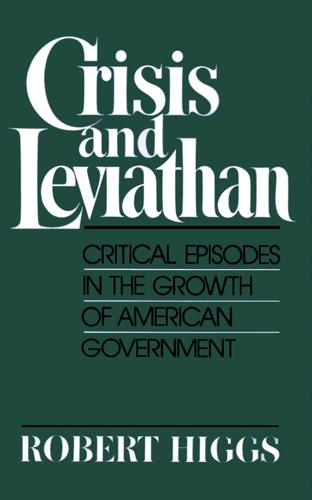
Crisis and Leviathan: Critical Episodes in the Growth of American Government
by
Robert Higgs
and
Arthur A. Ekirch, Jr.
Published 15 Jan 1987
Edwin Mansfield, The Economics of Technological Change (New York: Norton, 1968); Nathan Rosenberg, ed., The Economics of Technological Change: Selected Readings (Harmondsworth, Middlesex: Penguin, 1971); idem, Perspectives on Technology (New York: Cambridge University Press, 1976). 33. On technological change as a residual, see M. Ishaq Nadiri, "Some Approaches to the Theory and Measurement of Total Factor Productivity: A Survey," Journal of Economic Literature 8 (Dec. 1970): 1137-1177. On ideological change as a residual, see Douglass C. North, "Structure and Performance: The Task of Economic History," ibid. 16 (Sept. 1978): 973; Joseph P. Kalt and M. A. Zupan, "Capture and Ideology in the Economic Theory of Politics," American Economic Review 74 (June 1984): 291-295. 34.

Capitalism in America: A History
by
Adrian Wooldridge
and
Alan Greenspan
Published 15 Oct 2018
Two big determinants of the level of labor productivity are the amount of capital (plant and equipment) employed in making things and the number of hours people work, adjusted for their level of education and skills. In the 1950s, “growth economists,” led by Moses Abramovitz and Robert Solow, discovered that the inputs of capital and labor do not fully account for all the growth in GDP. They dubbed the unexplained leftover multifactor productivity (MFP) or, sometimes, total factor productivity. The heart of MFP is innovation. MFP arises mainly from innovations applied to the inputs of capital and labor. The problem with calculating GDP and MFP over a long period is that the further back you go in time, the more difficult it is to find solid statistics. The U.S. government only began collecting systematic data on national income and product accounts in the 1930s, when it called on the expertise of Simon Kuznets of Stanford University and the National Bureau of Economic Research.

The Relentless Revolution: A History of Capitalism
by
Joyce Appleby
Published 22 Dec 2009
David Khoudour-Casteras, “The Impact of Bismarck’s Social Legislation on German Emigration before World War I,” eScholarship Repository, University of California; http://repositories.edlib.org/berkely.econ211/spring2005/, 4–45; Trebilcock, Industrialization of Continental Powers, 65–77; Hubert Kiesewetter, Industrielle Revolution in Deutschland, 1815–1914, Neue Historische Bibliothek (Frankfurt, 1989), 90. 14. Thomas Weiss, “U.S. Labor Force Estimates and Economic Growth, 1800 to 1860,” in R. Gallman and J. Wallis, eds., The Standard of Living in Early Nineteenth Century America (Chicago, 1992), 8–10; Lee A. Craig and Thomas Weiss, “Hours at Work and Total Factor Productivity Growth in 19th-Century U.S. Agriculture,” Advances in Agricultural Economic History, 1 (2000): 1–30; Weiss, “American Economic Miracle”: 20. 15. Nelson Lichtenstein, State of the Union: A Century of American Labor (Princeton, 2002), 4; Karen Orren, Belated Feudalism: Labor, The Law, And Liberal Developments In The United States (Cambridge, 1992); Irwin Unger, The Greenback Era: A Social and Political History of American Finance, 1865–1879 (Princeton, 1964), 22. 16.

The Rise and Fall of Nations: Forces of Change in the Post-Crisis World
by
Ruchir Sharma
Published 5 Jun 2016
* Global GDP growth is measured here in market-determined exchange-rate terms. † This figure refers to potential growth, which we calculate by taking the sum of productivity growth and employment growth from the Conference Board Total Economy Database. ‡ Technically, productivity growth is the sum of increases in labor quality, capital deepening, and total factor productivity. 1 PEOPLE MATTER Is the talent pool growing? AT FIRST I DIDN’T THINK THERE WAS MUCH MYSTERY TO the lackluster global recovery. After 2008, when the United States fell into a deep recession and the world soon followed, economists argued that the recovery would be painfully slow because this was a “systemic crisis,” not an ordinary recession, and I was persuaded.

Economic Origins of Dictatorship and Democracy
by
Daron Acemoğlu
and
James A. Robinson
Published 28 Sep 2001
This is also in line with the evidence discussed in Chapter 3 (see also Acemoglu, Johnson, Robinson, and Yared 2004). Although in this book we capture these ideas using the reduced-form parameter µ so that the costs of revolution fluctuate directly, in Acemoglu and Robinson (2001) we showed how the same results follow from a model in which the cost of revolution is constant but total factor productivity fluctuates, as in standard models of the business cycle. In that model, changes in productivity change the opportunity costs of revolutions (and coups) and this has the same effects. 8. Subgame Perfect Equilibria In the previous section, we characterized a subset of the subgame perfect equilibria of G ∞ (β).

The Price of Time: The Real Story of Interest
by
Edward Chancellor
Published 15 Aug 2022
An estimate for December 2018 by Professor Gan Li, of Chengdu’s Southwestern University and author of the China Household Income Survey, held that 64 million homes, equivalent to 21.4 per cent of the housing stock, were empty: Kenji Kawase, Coco Liu and Nikki Sun, ‘China’s Housing Glut Casts Pall over the Economy’, Nikkei Asian Review, 13 February 2019. 52. Orlik, China, p. 24. 53. Mike Bird, ‘The Trouble with a Bubble that Just Won’t Burst’, Wall Street Journal, 16 July 2020. Research from Princeton and the Guanghua School of Management found an inverse relationship between Chinese land prices and total factor productivity. Cities with bigger land booms had more collateralized lending and tended to redirect activities towards real estate, crowding out productive firms and increasing their cost of financing. 54. Yin Zhongqing, former Deputy Director of the Finance and Economics Committee of the National People’s Congress, cited by Gabriel Wildau, ‘Chinese Top Official Warns Economy “Kidnapped” by Property Bubble’, Wall Street Journal, 10 August 2017. 55.
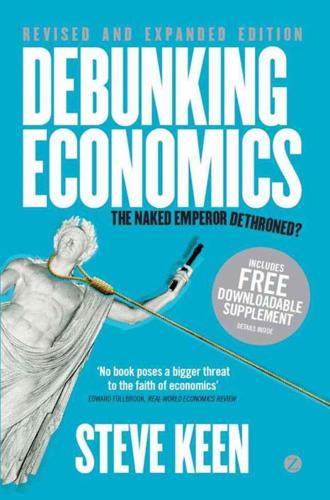
Debunking Economics - Revised, Expanded and Integrated Edition: The Naked Emperor Dethroned?
by
Steve Keen
Published 21 Sep 2011
Employment and investment were low because labor market institutions and industrial policies changed in a way that lowered normal employment. (Prescott 1999: 1–3; emphases added) Prescott’s culprit for these changes, predictably, is the government: ‘government policies that affect TFP [total factor productivity] and hours per working-age person are the crucial determinants of the great depressions of the 20th century […]’ (Kehoe and Prescott 2002: 1). The reason that Prescott and his fellow freshwater economists were led to such a frankly crazy interpretation of the Great Depression is that their model allowed no other alternative.

Winds of Change
by
Peter Hennessy
Published 27 Aug 2019
More recent American economic historians have characterized the first two-and-a-half decades as ‘the Great Leap Forward’:11 the Princeton economist Robert Gordon argues that the great technical breakthroughs of the second industrial revolution of the late nineteenth century did not reach their maximum effect in terms of ‘total factor productivity’ until the years after 1945, boosted by wartime innovation and stimulated still further by the rise of a mass-consumption society whose ingredients were electricity, cars, telephones, running water and sewerage, improved infrastructure generally plus the spread of mass higher education.12 Gordon was writing about the United States (where, of course, overall consumption and living standards were much higher), but his analysis fits early postwar Britain apart from mass higher education, which the UK reached only in the late 1980s and early 1990s.

The Age of Turbulence: Adventures in a New World (Hardback) - Common
by
Alan Greenspan
Published 14 Jun 2007
*Low inflation reflected flat nonfarm business unit labor cost, t h e result of solid growth in p r o ductivity, which in t u r n was t h e result of increased investment in, b u t especially t h e delayed application of, t h e earlier technologies. Professor David demonstrated t h e extraordinary lag from technological advance to its consequence in rapidly rising total factor productivity, a measure of applied technology and other insights. T h a t disinflationary episode lasted only a few years, coming to an end with t h e Vietnam military buildup. A m u c h larger continuing disinflation was to c o m e as a consequence of t h e end of t h e cold war. t R e c e n t decades' productivity growth derives largely from t h e continuous i m p r o v e m e n t and filling o u t of networks of interrelated technologies.

Enlightenment Now: The Case for Reason, Science, Humanism, and Progress
by
Steven Pinker
Published 13 Feb 2018
See the references at the end of chapters 8 and 16; here and here of chapter 10; here of chapter 15; and the discussion of the Easterlin paradox in chapter 18. 6. Average of the years 1961 through 1973; World Bank 2016c. 7. Average of the years 1974 through 2015; World Bank 2016c. Rates for the United States for these two periods are 3.3 percent and 1.7 percent, respectively. 8. Estimates are of Total Factor Productivity, taken from Gordon 2014, fig. 1. 9. Secular stagnation: Summers 2014b, 2016. For analysis and commentaries, see Teulings & Baldwin 2014. 10. No one knows: M. Levinson, “Every US President Promises to Boost Economic Growth. The Catch: No One Knows How,” Vox, Dec. 22, 2016; G. Ip, “The Economy’s Hidden Problem: We’re Out of Big Ideas,” Wall Street Journal, Dec. 20, 2016; Teulings & Baldwin 2014. 11.
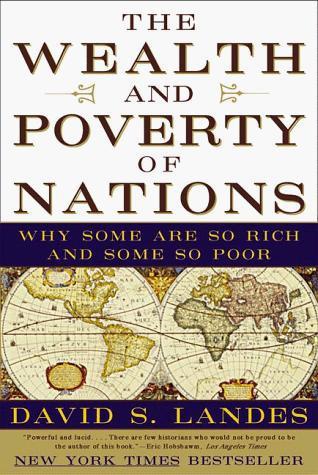
The Wealth and Poverty of Nations: Why Some Are So Rich and Some So Poor
by
David S. Landes
Published 14 Sep 1999
Estimates of annual growth in value added per hour in manufacturing, 1950-90, show Japan at 7.4 percent, France at 4.9, Germany at 4.5, Britain at 4.1, the USA at 2.6—Eaton and Kortum, “Engines of Growth,” chapter 1. Even allowing for error, we clearly are not in the presence of decline; rather, of apparent convergence. * From 1960 to 1973, U.S. total factor productivity (that is, gains in productivity after increases in capital and labor have been deducted) grew by 1.5 percent per year, against 6.3 percent for Japan. The oil shock of 1973 hit Japan hard, reducing TFP growth to 1.5 percent 1973-79, 2 percent 1979-88. But U.S. TFP actually turned negative 1973-79, rising to less than 0.5 percent in 1979-88—Hart, “Comparative Analysis,” chapter 14

Bourgeois Dignity: Why Economics Can't Explain the Modern World
by
Deirdre N. McCloskey
Published 15 Nov 2011
If so, the hunt is then on for either bad institutions or bad ideas, with no presumption that hunting for the bad-idea possibility is somehow less of a scientific priority. I recognize the impulse to stick with a Max U version of institutions as first on the agenda, since in the 1960s I used to say the same thing to conventional, nonquantitative, noneconomic economic historians such as David Landes: “First, let’s use measures of total factor productivity; then, if there’s anything left over, we can look at the letter archives of British ironmasters.” To my shame, I never intended to look at the letter archives, and did not. Samuelsonian economics, I thought, sufficed. So there. To the claim that Northian institutionalism steps beyond Samuelsonian economics, I say again, as I have in fact been saying to dear Doug North now for thirty years, I think not: neo-institutionalism is Samuelsonian economics in drag.